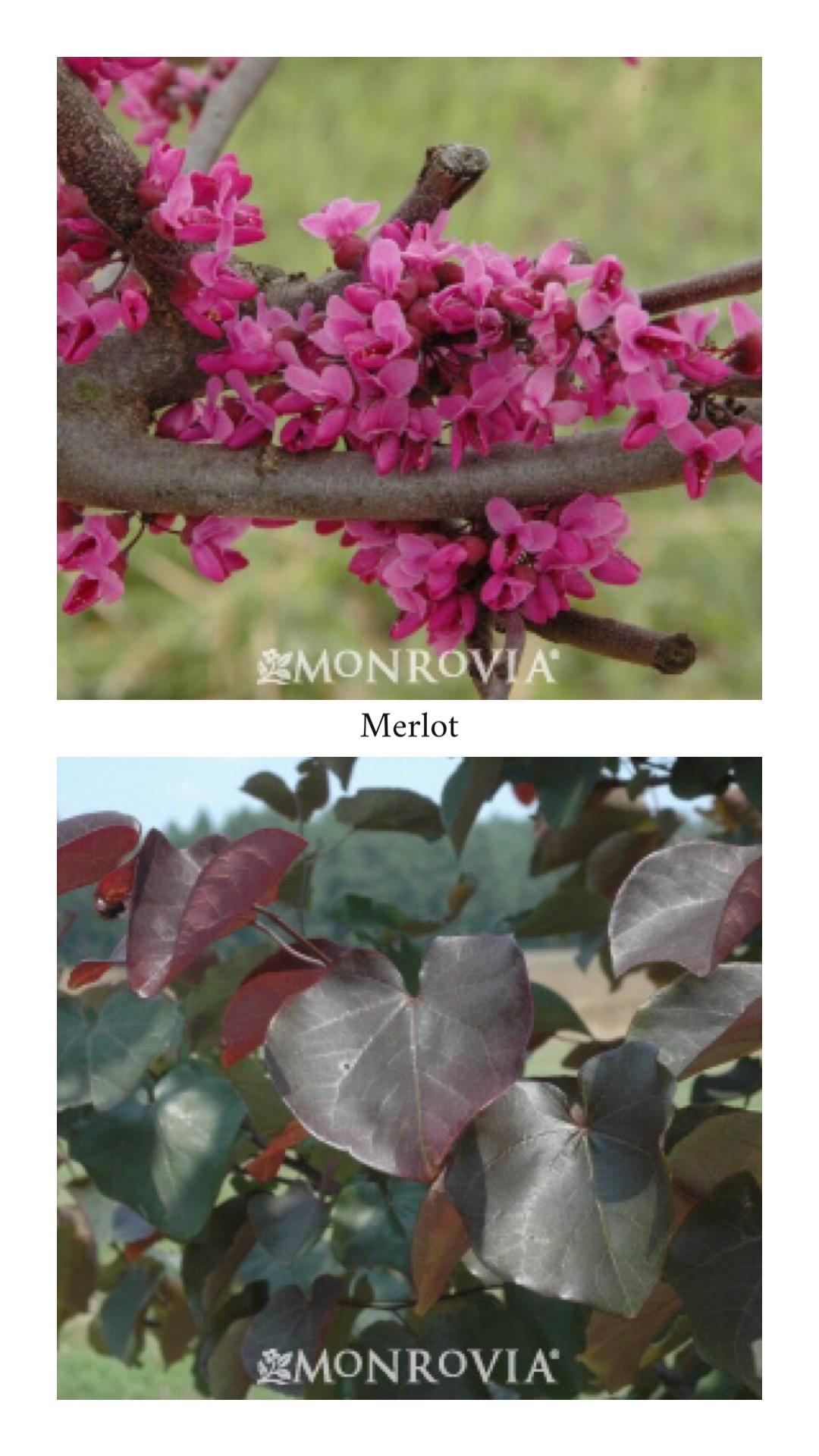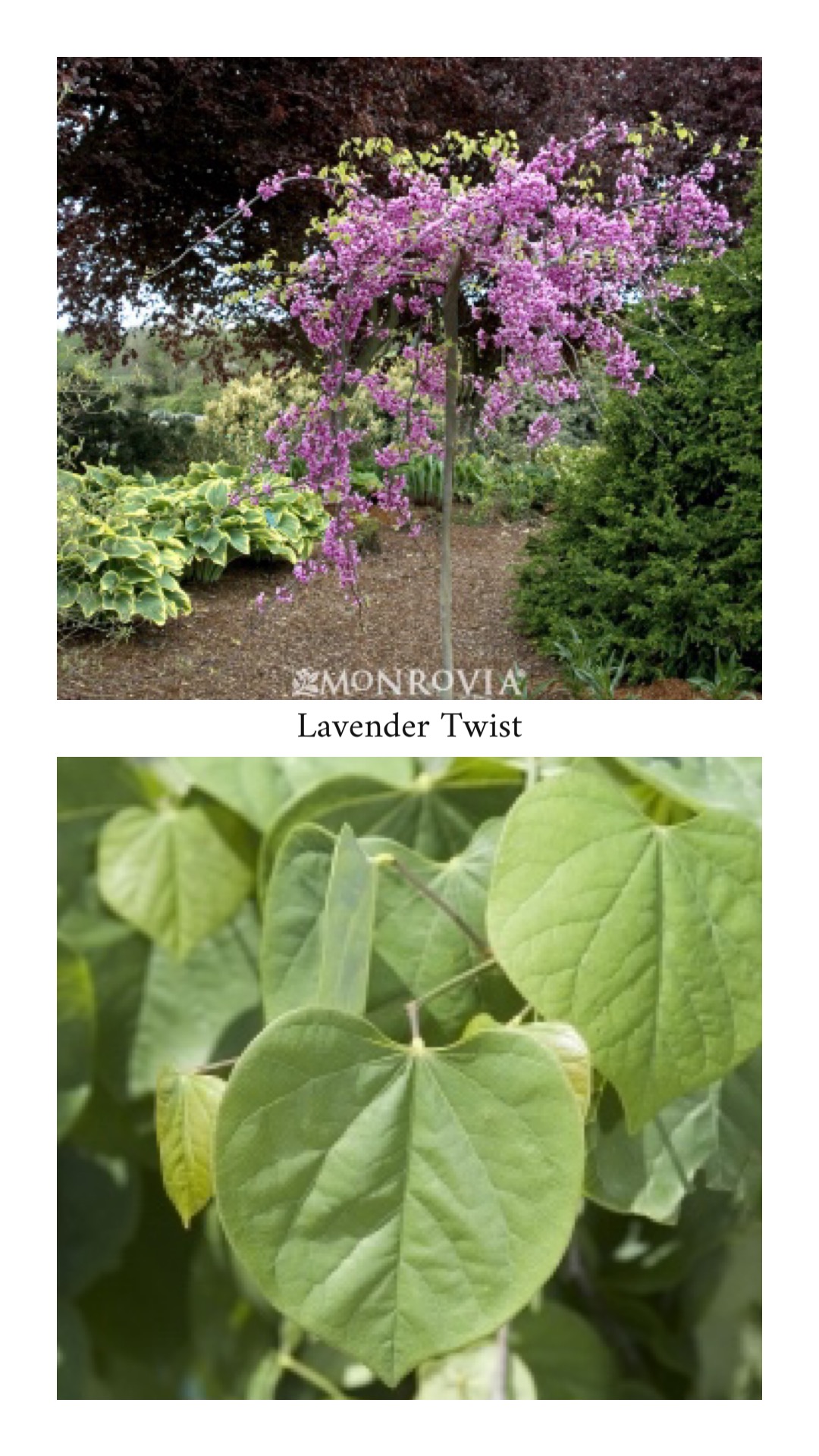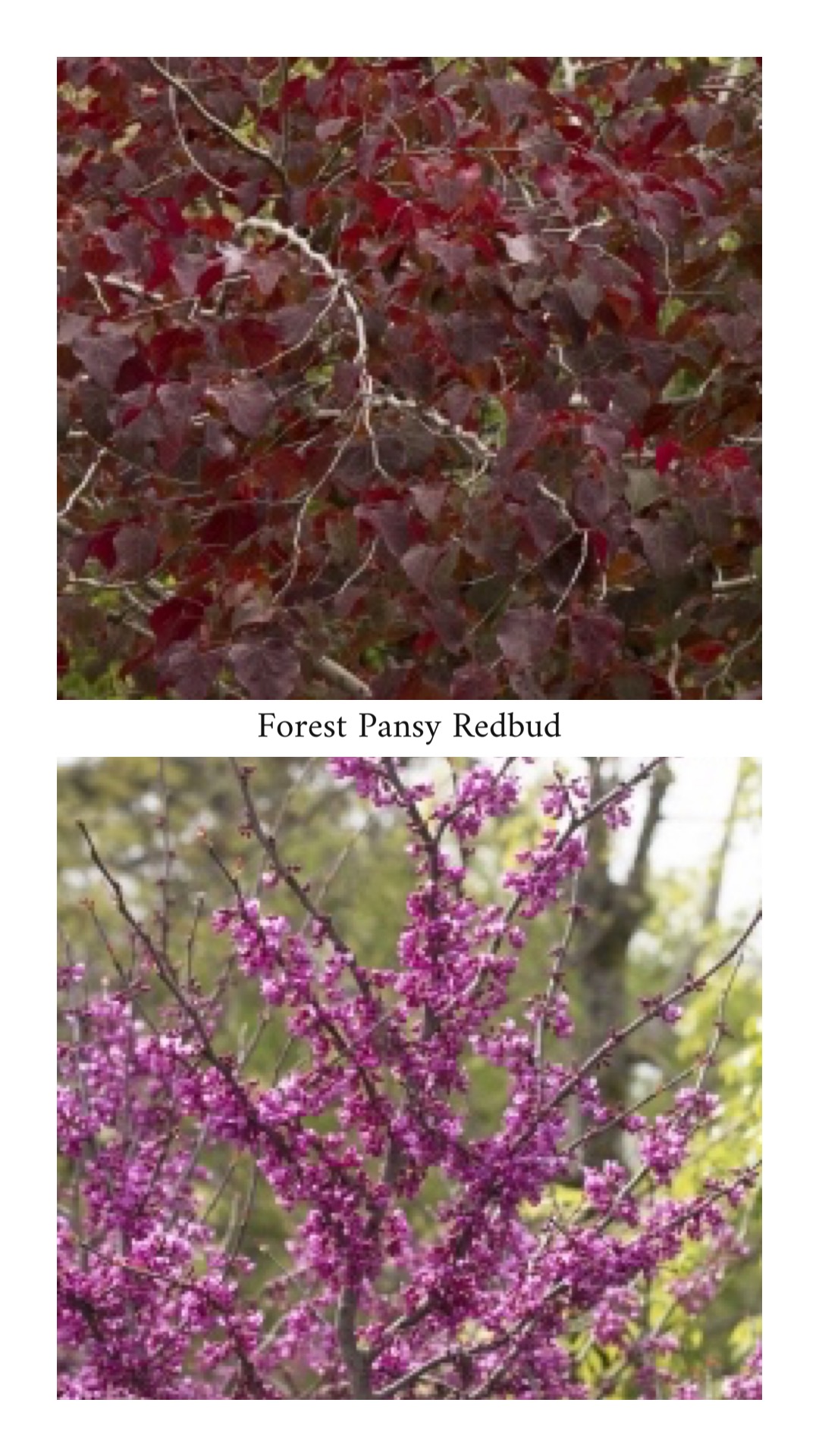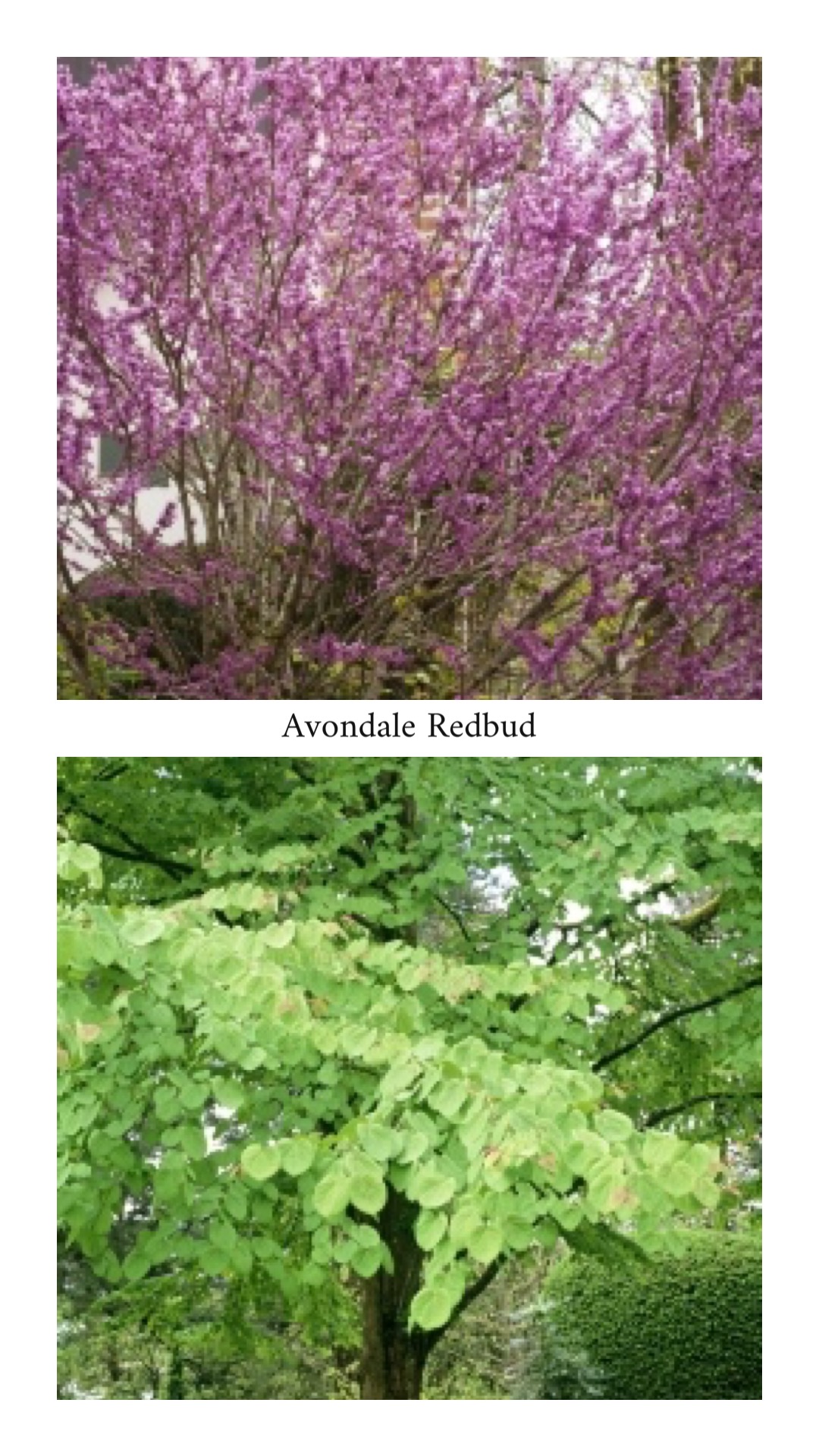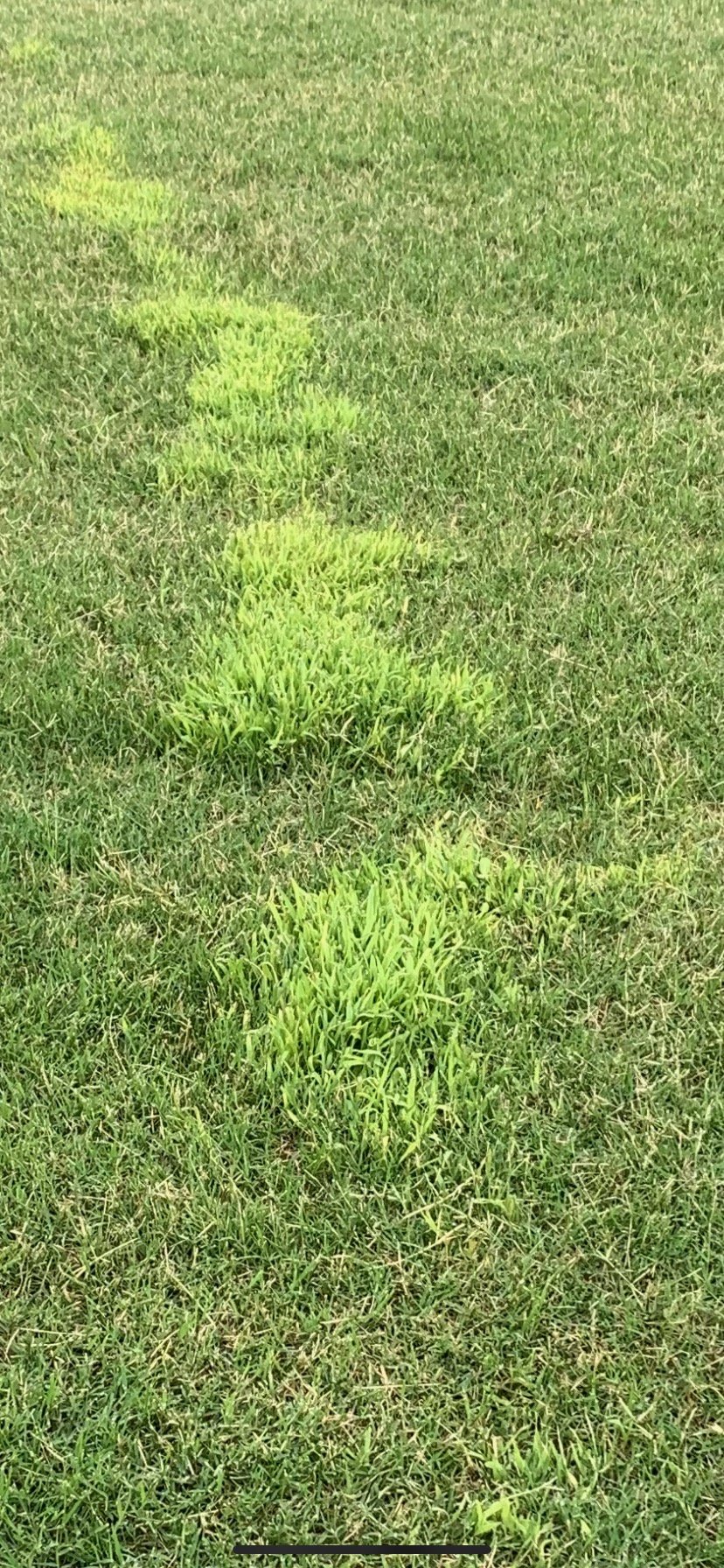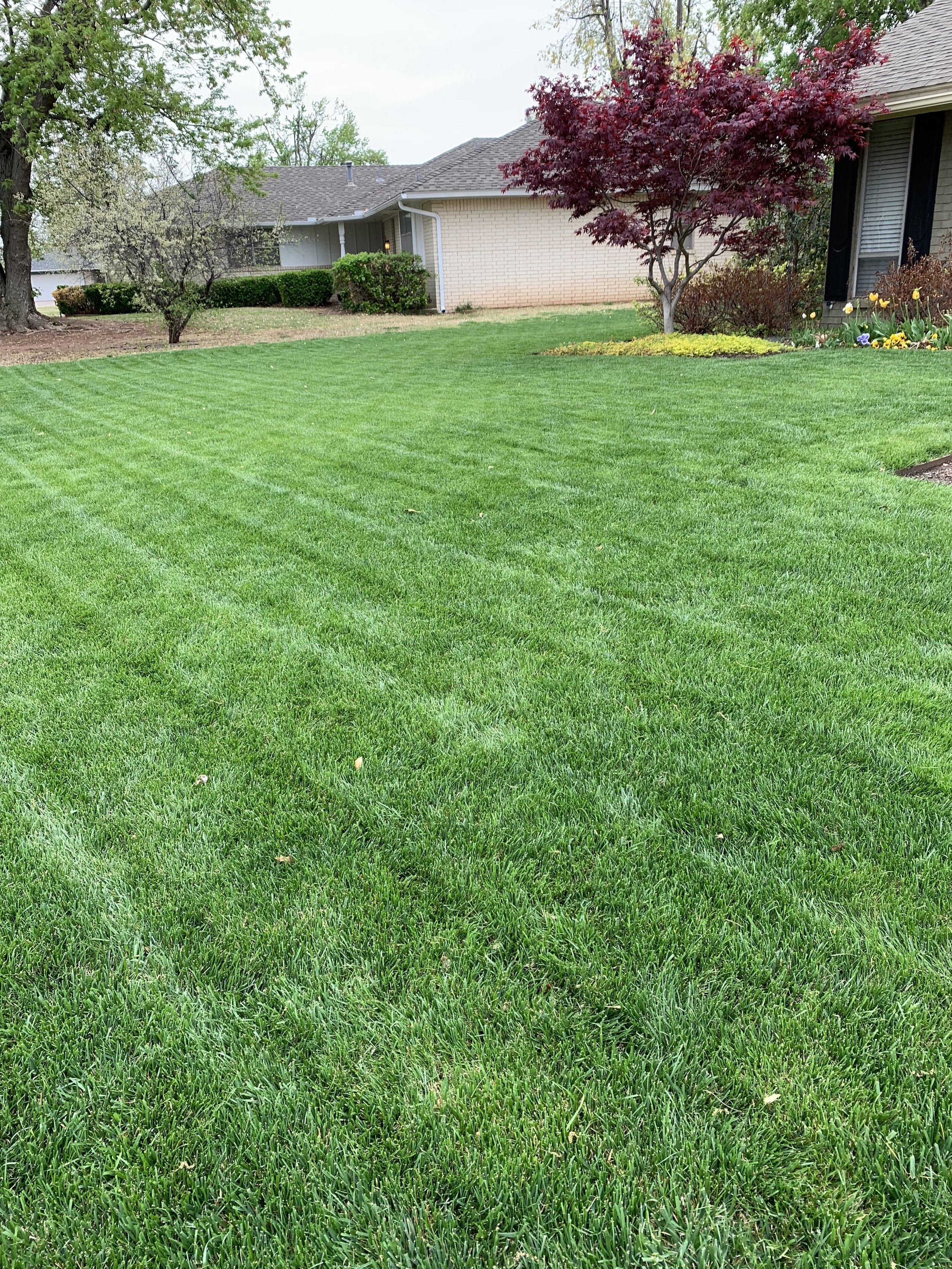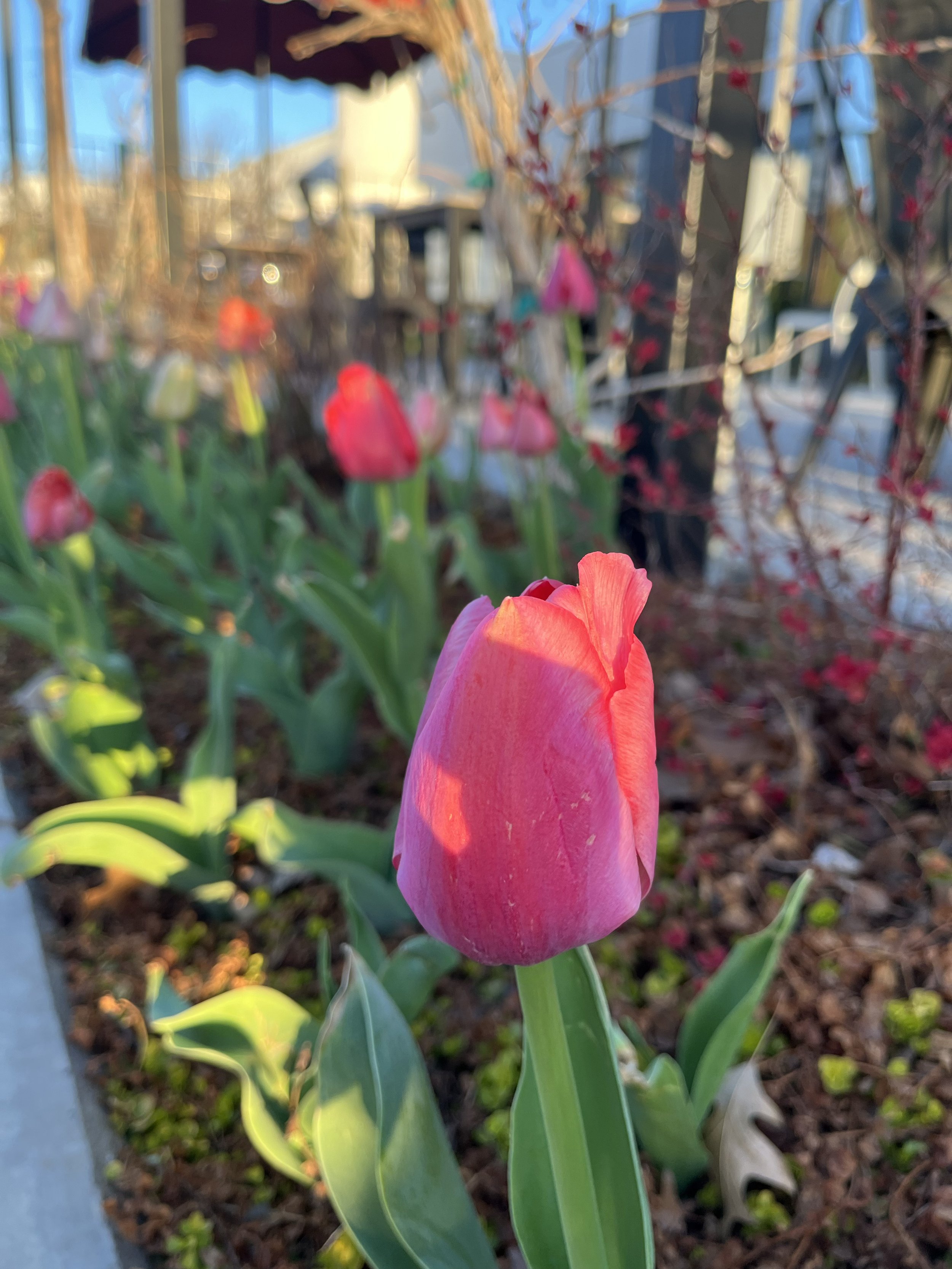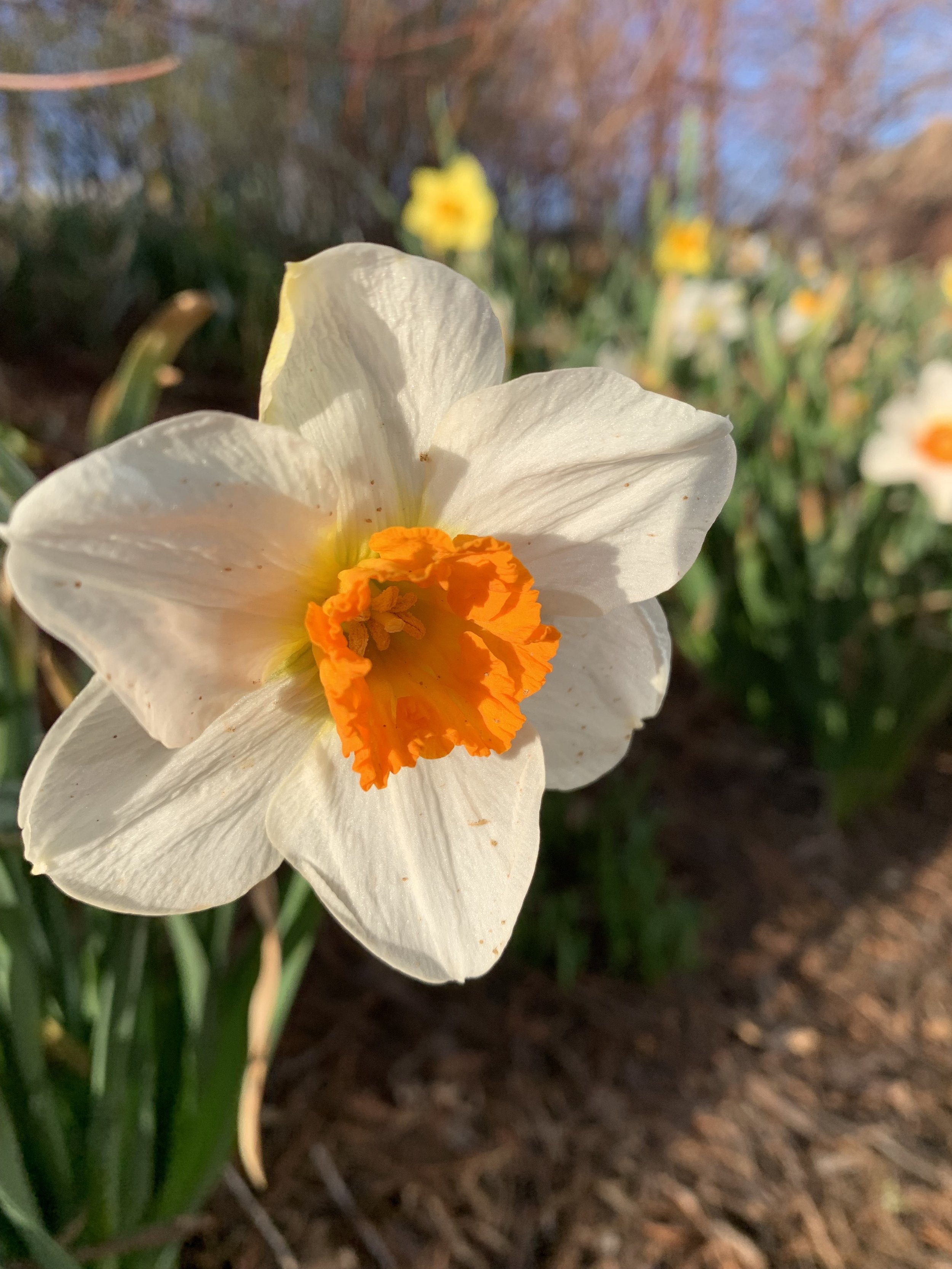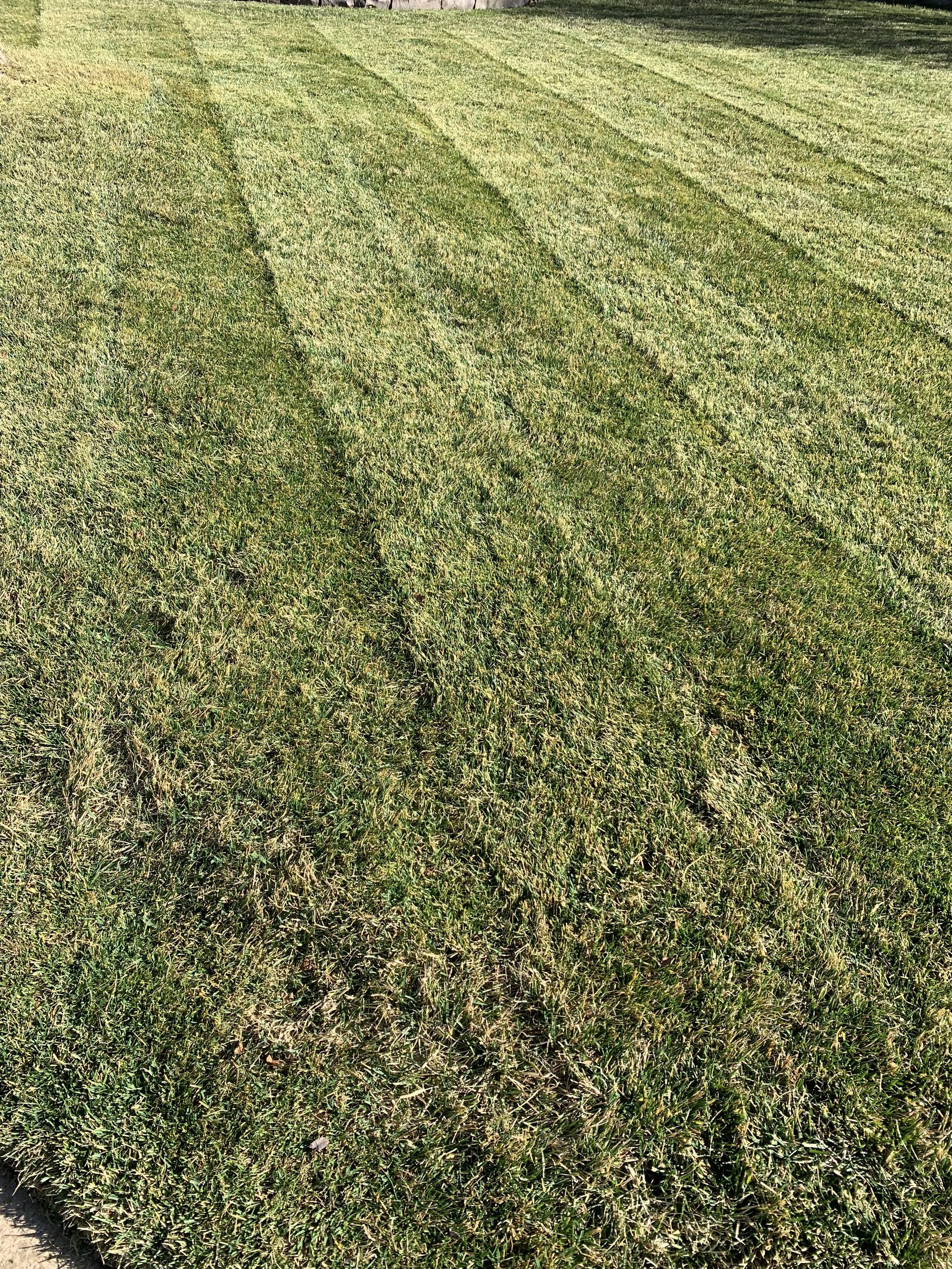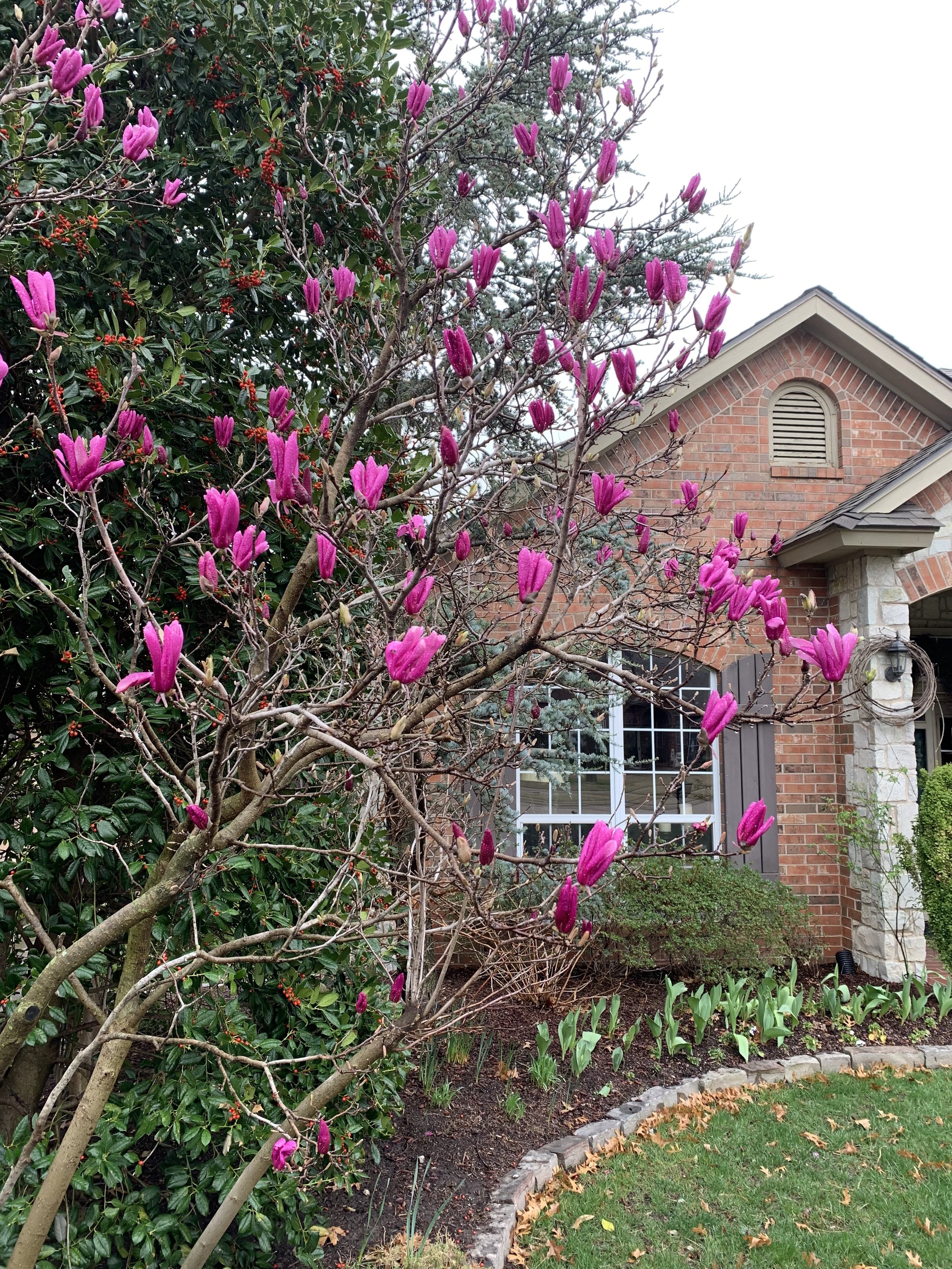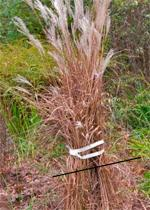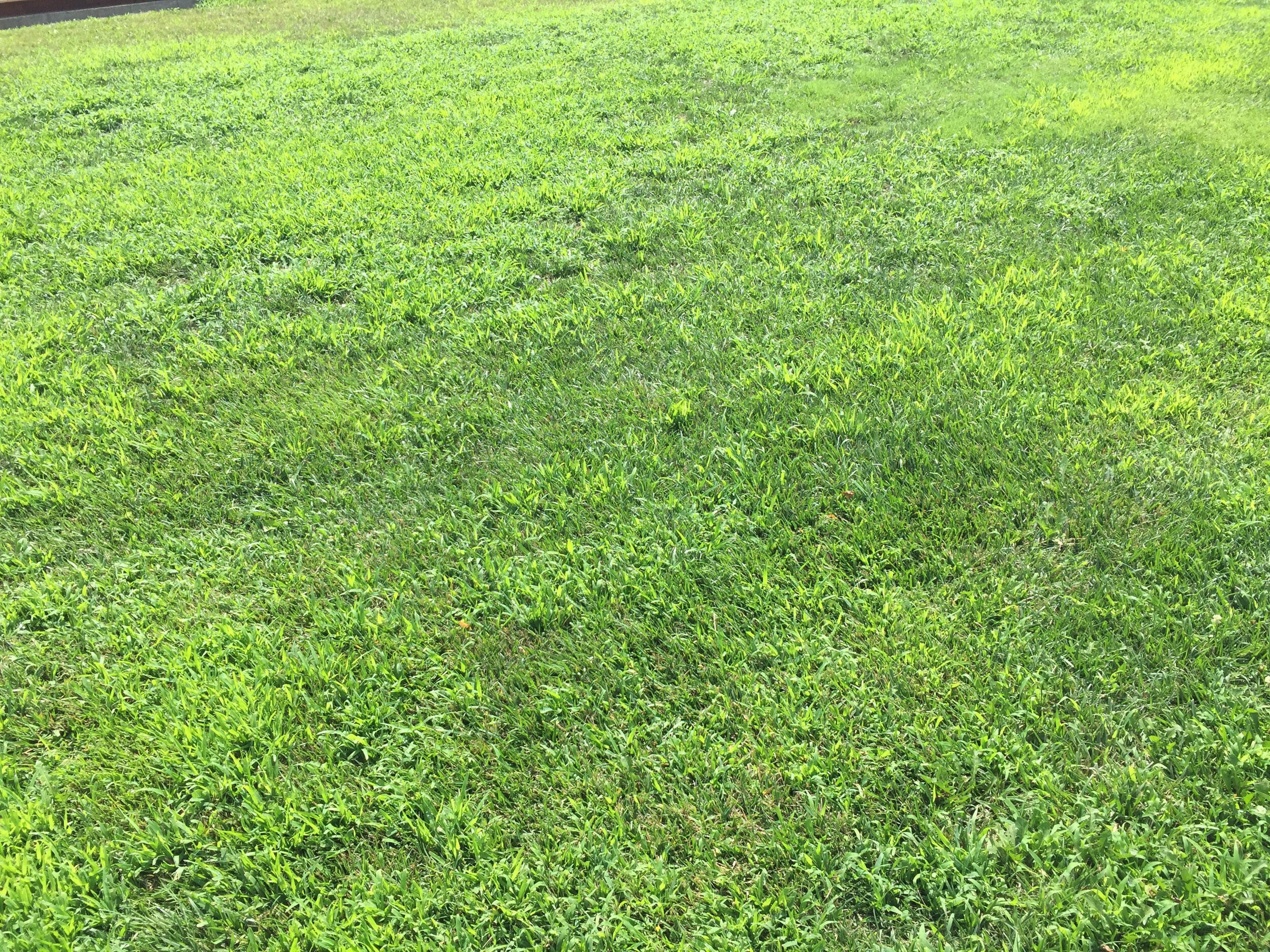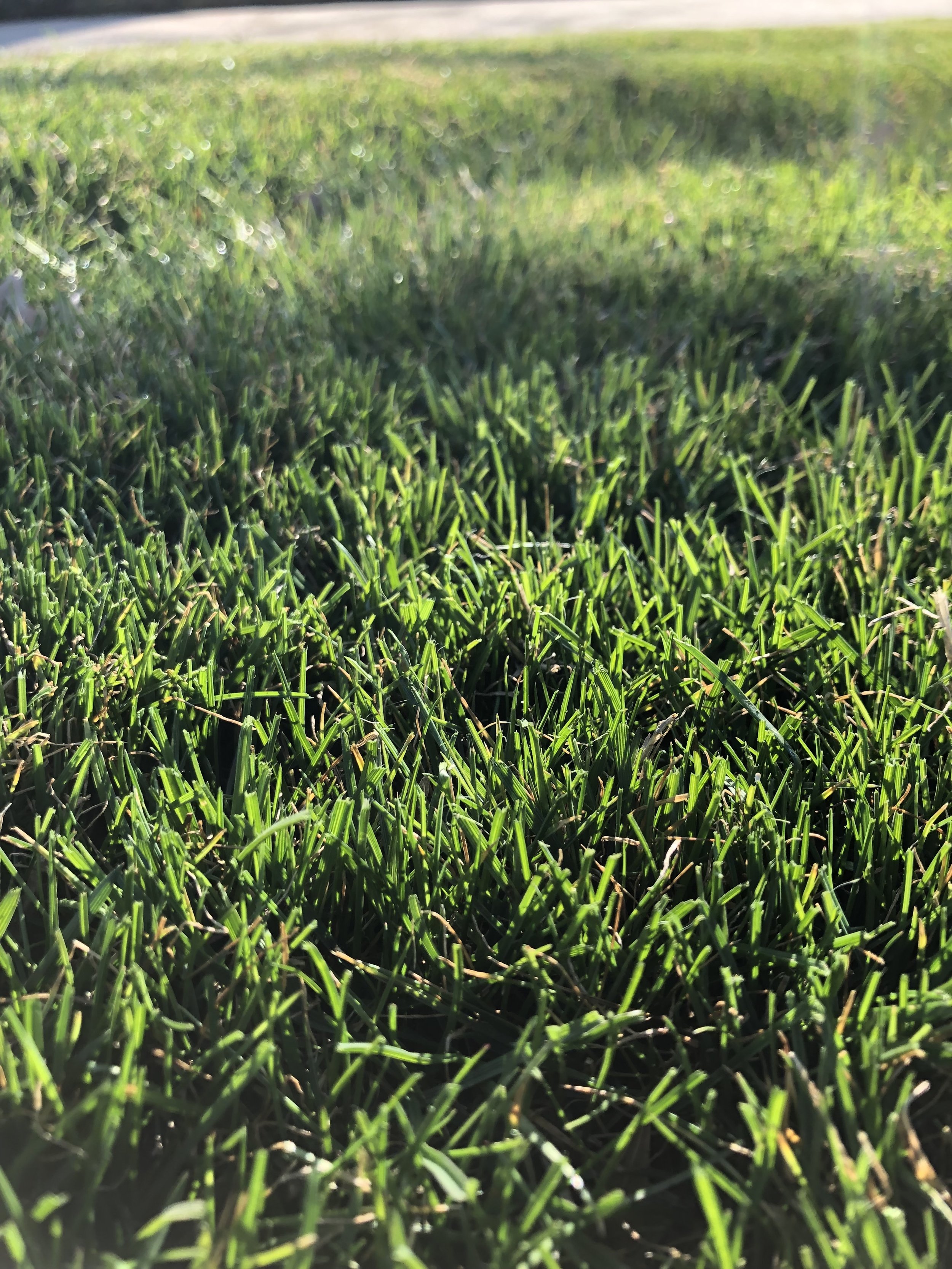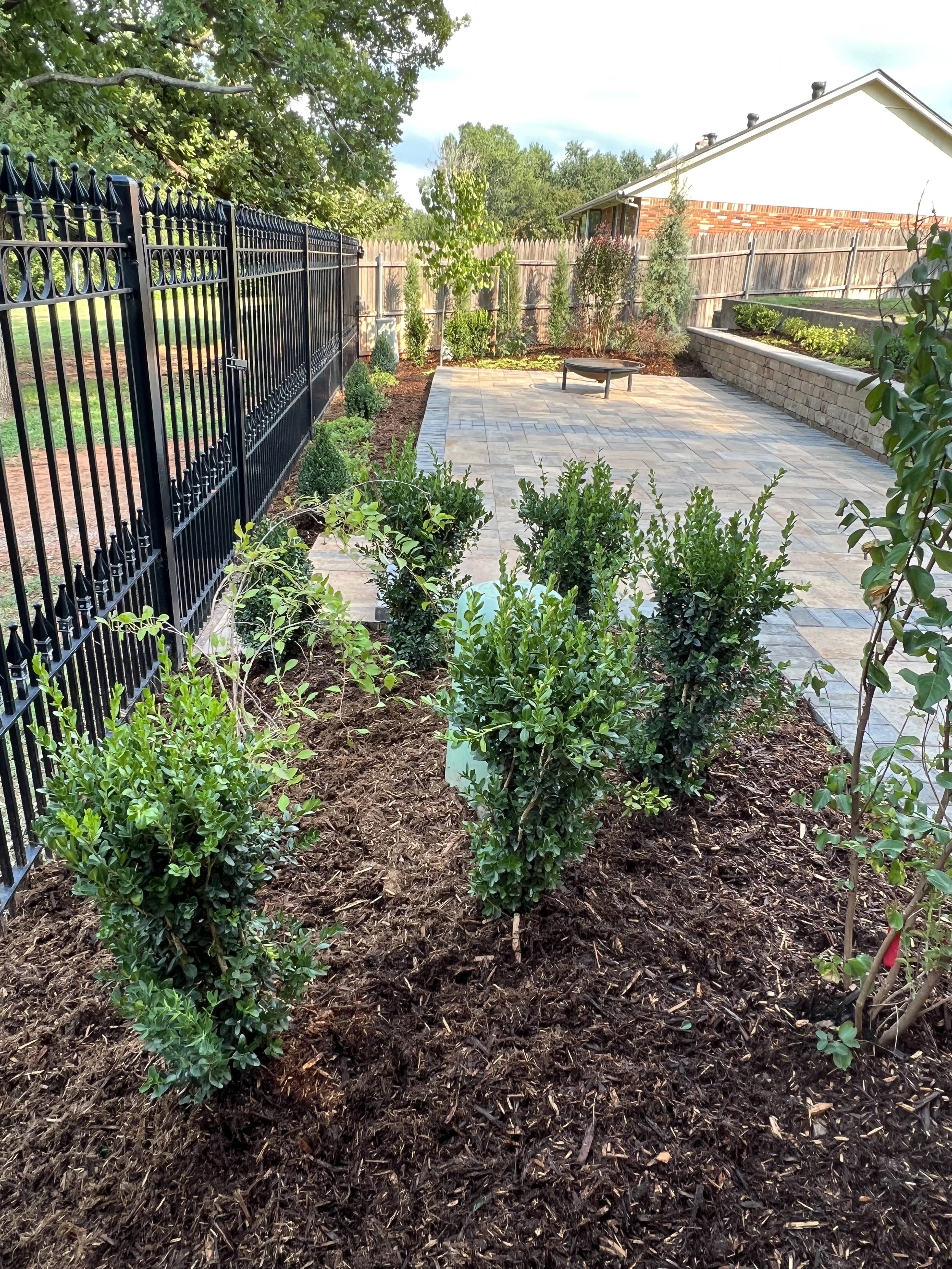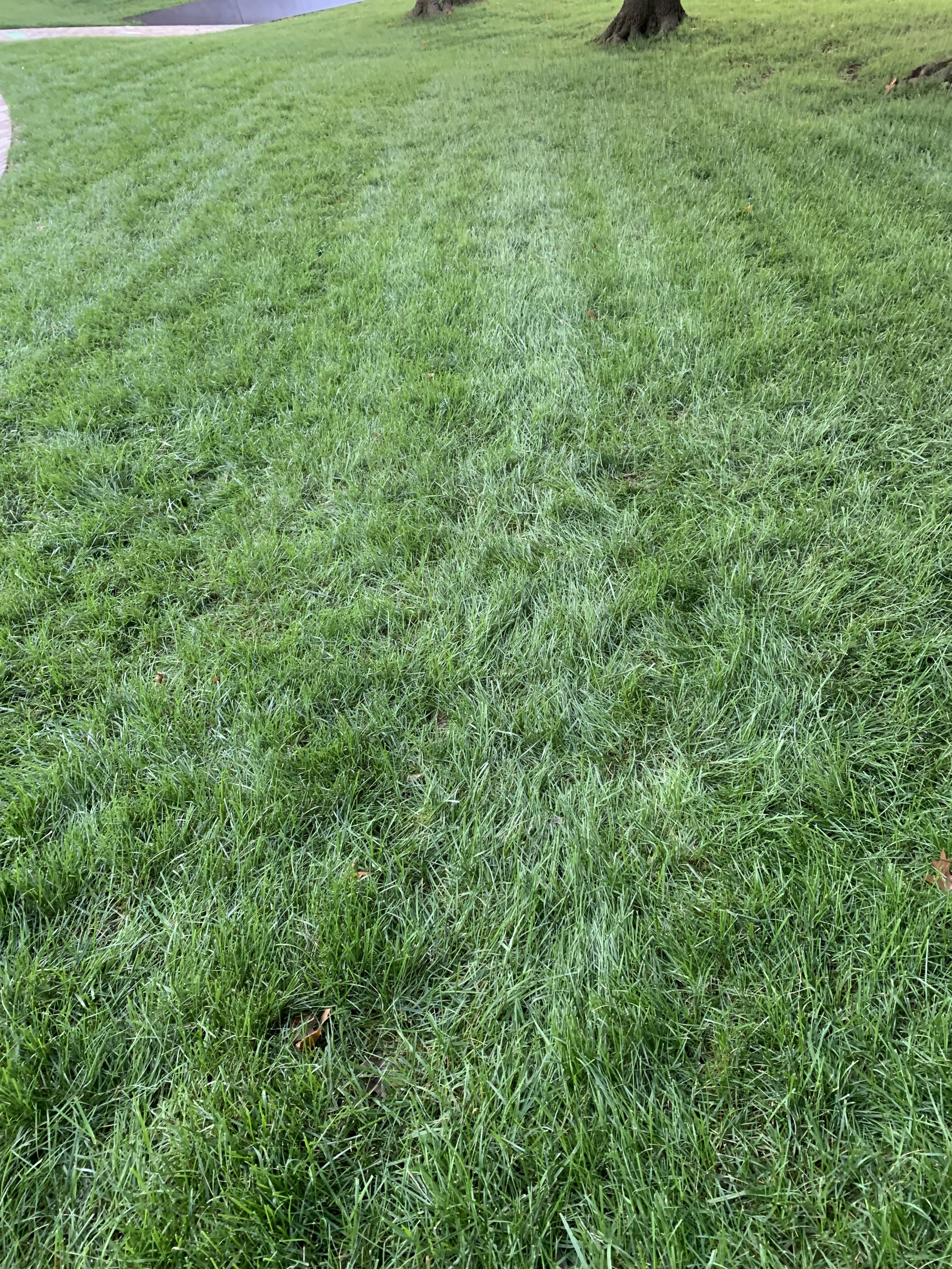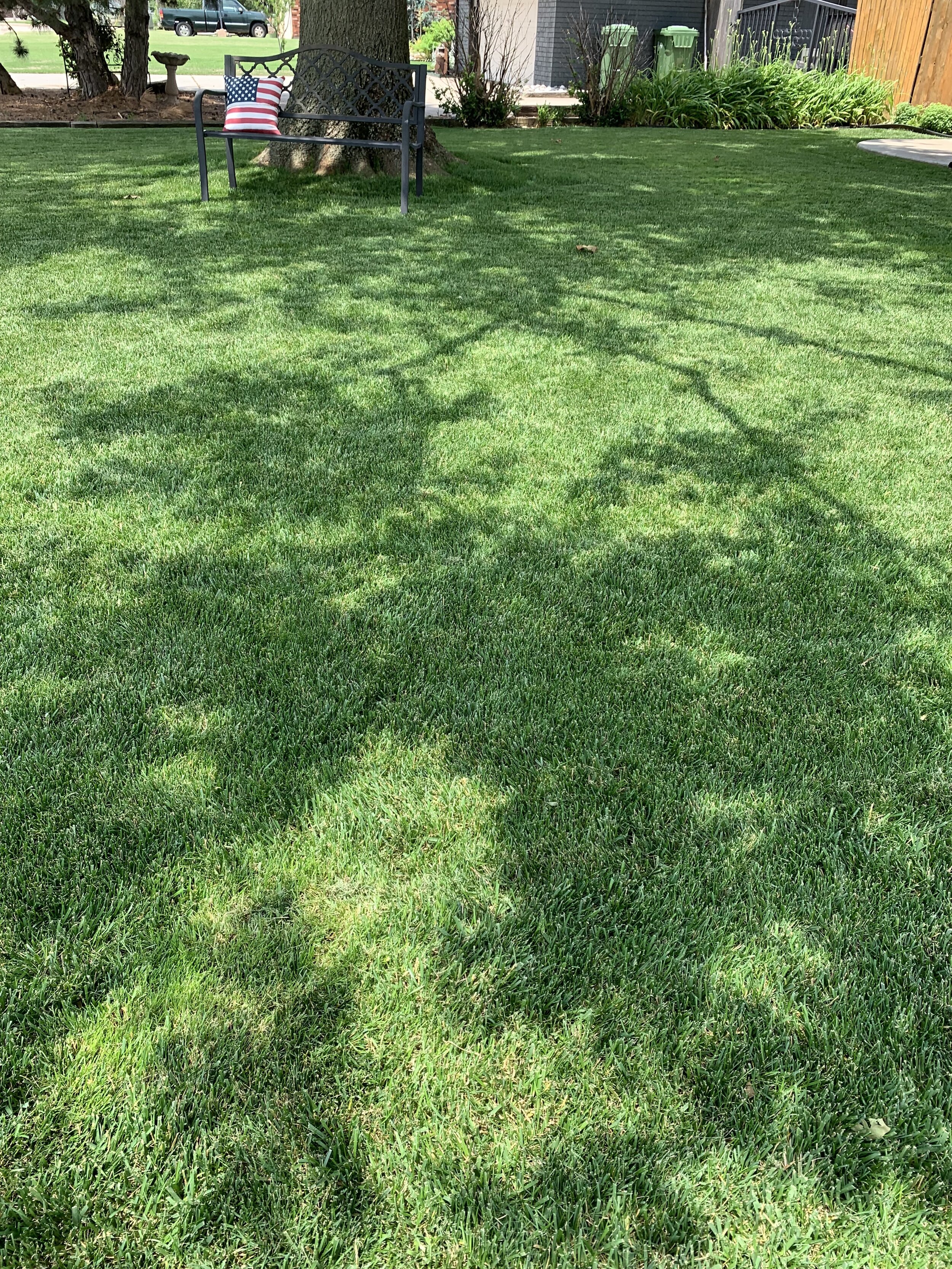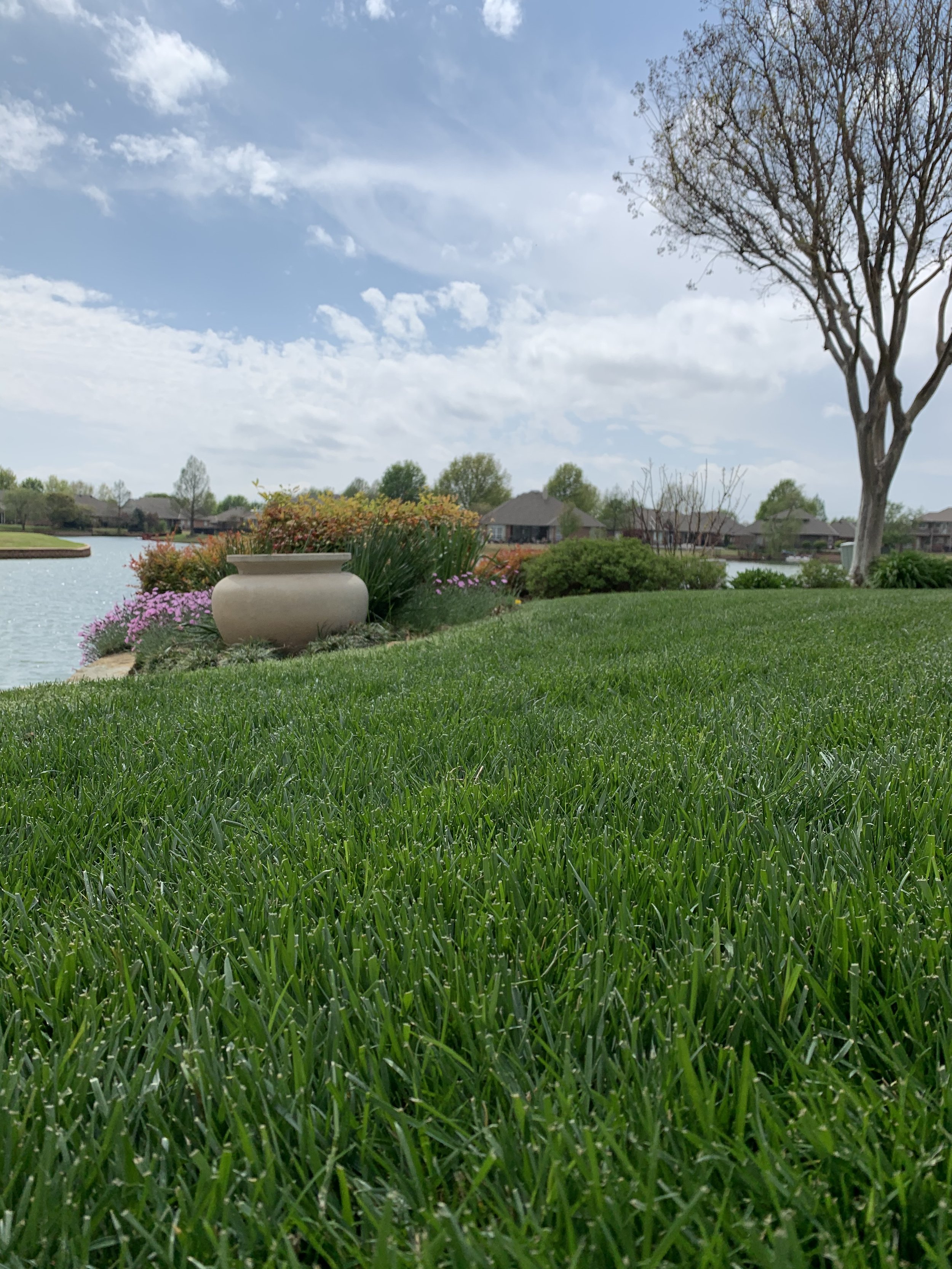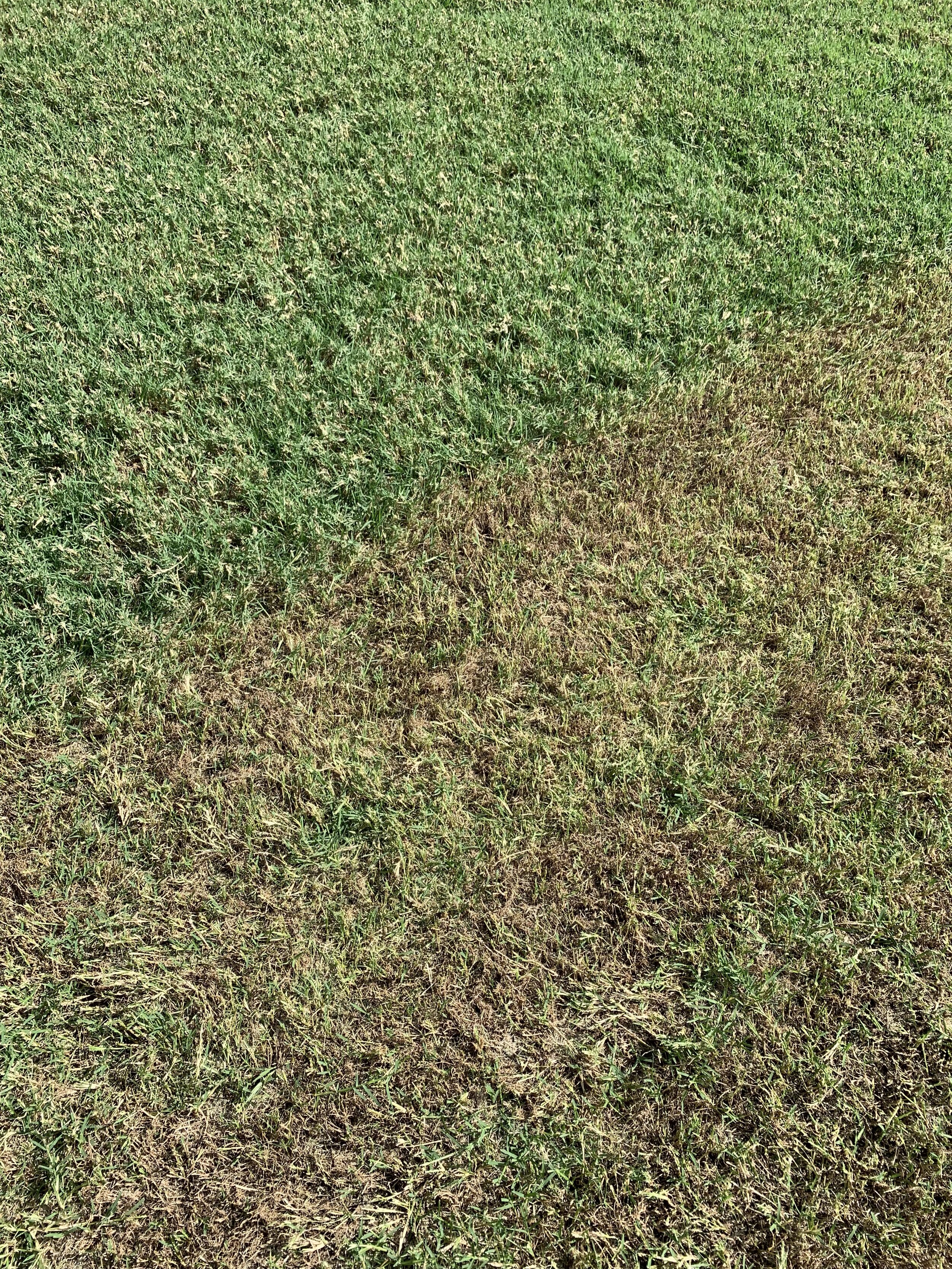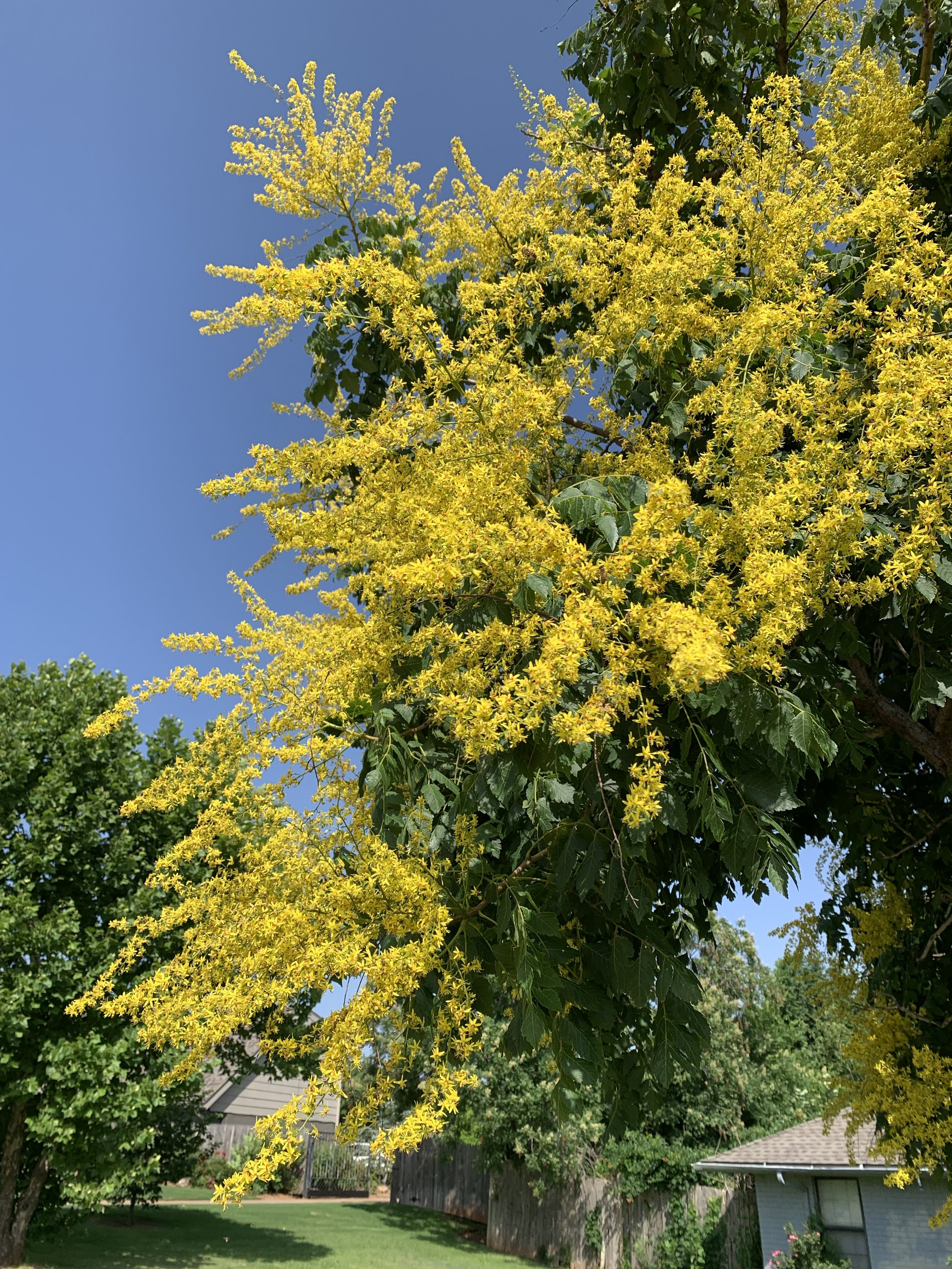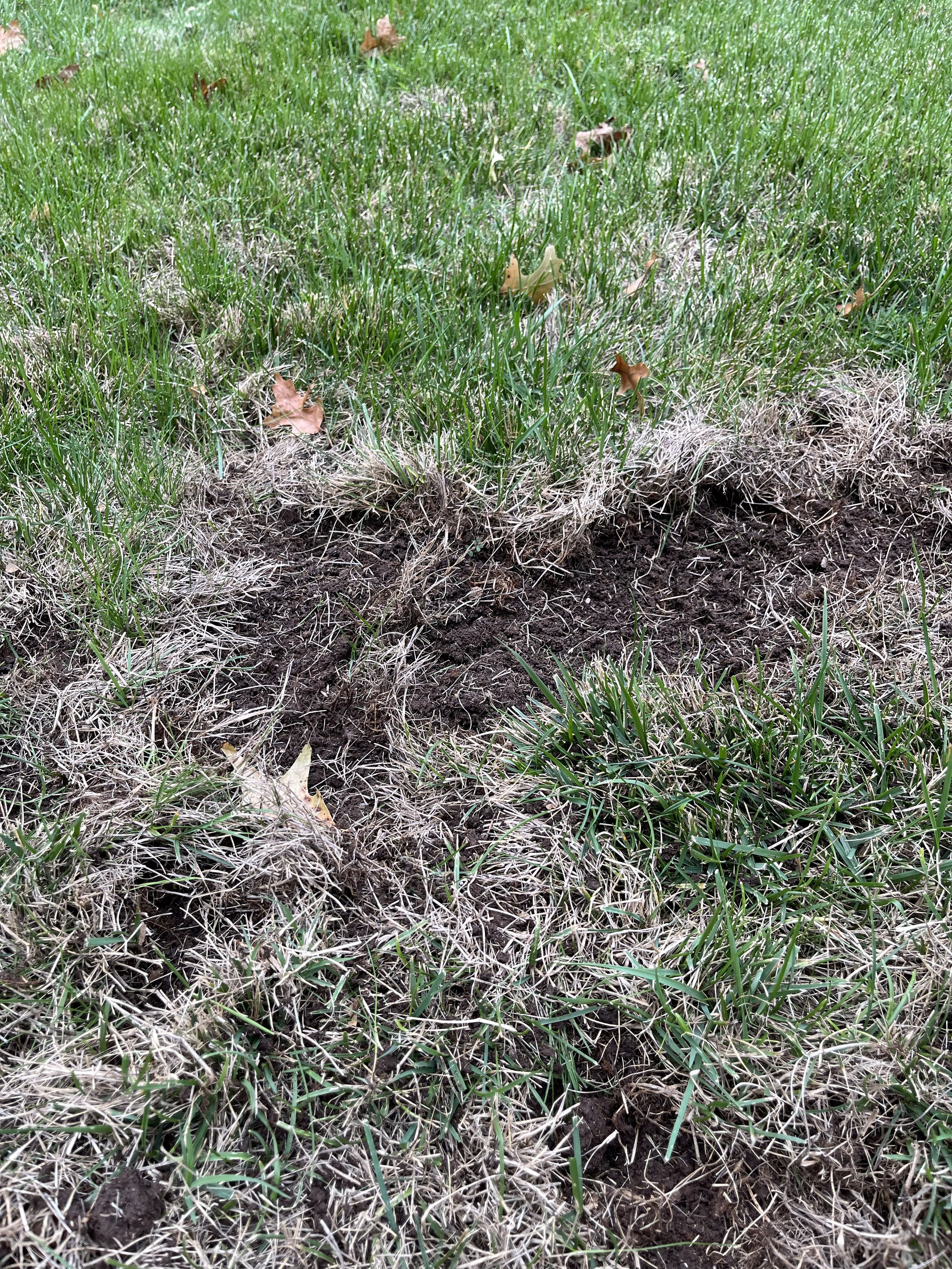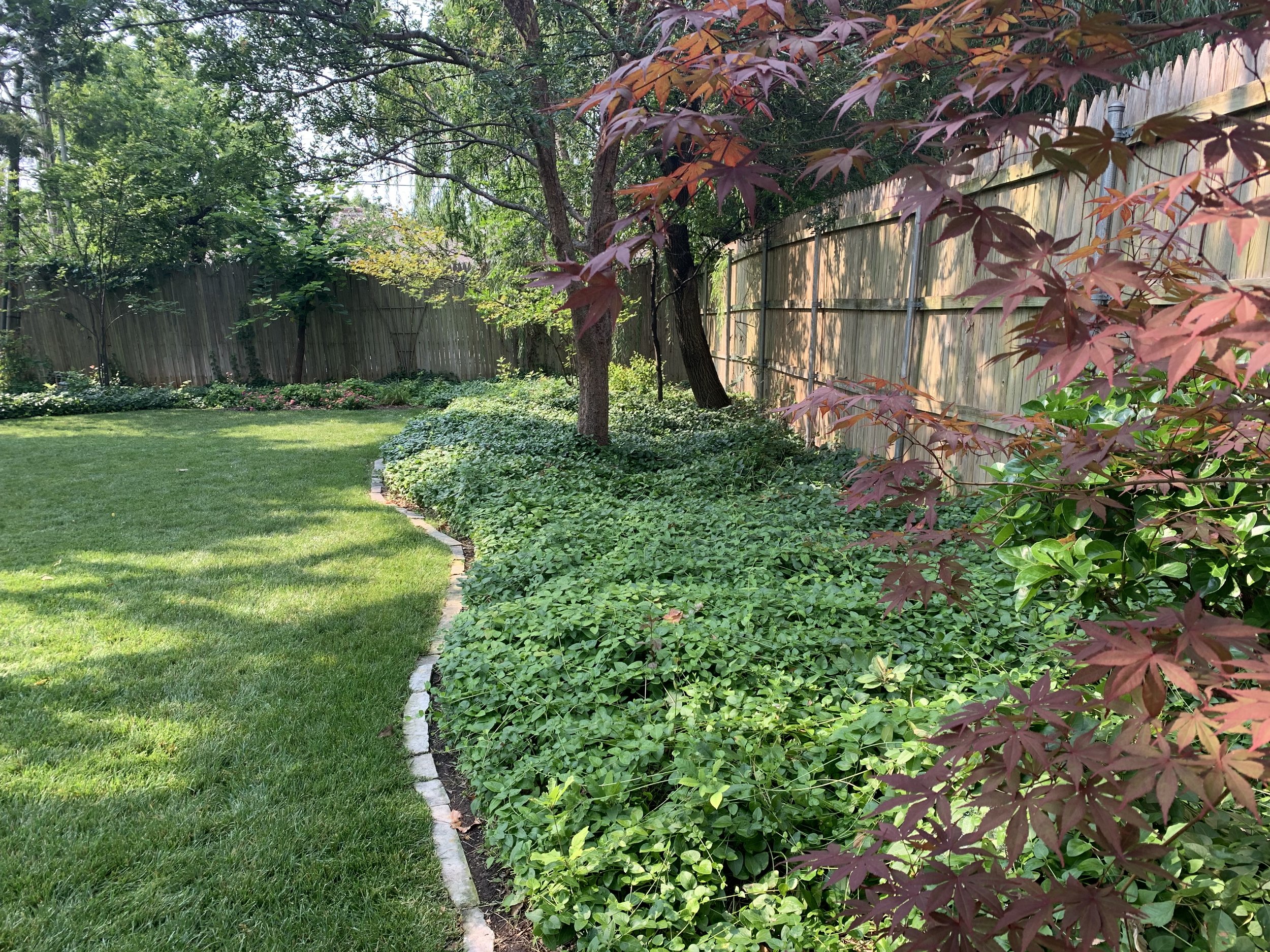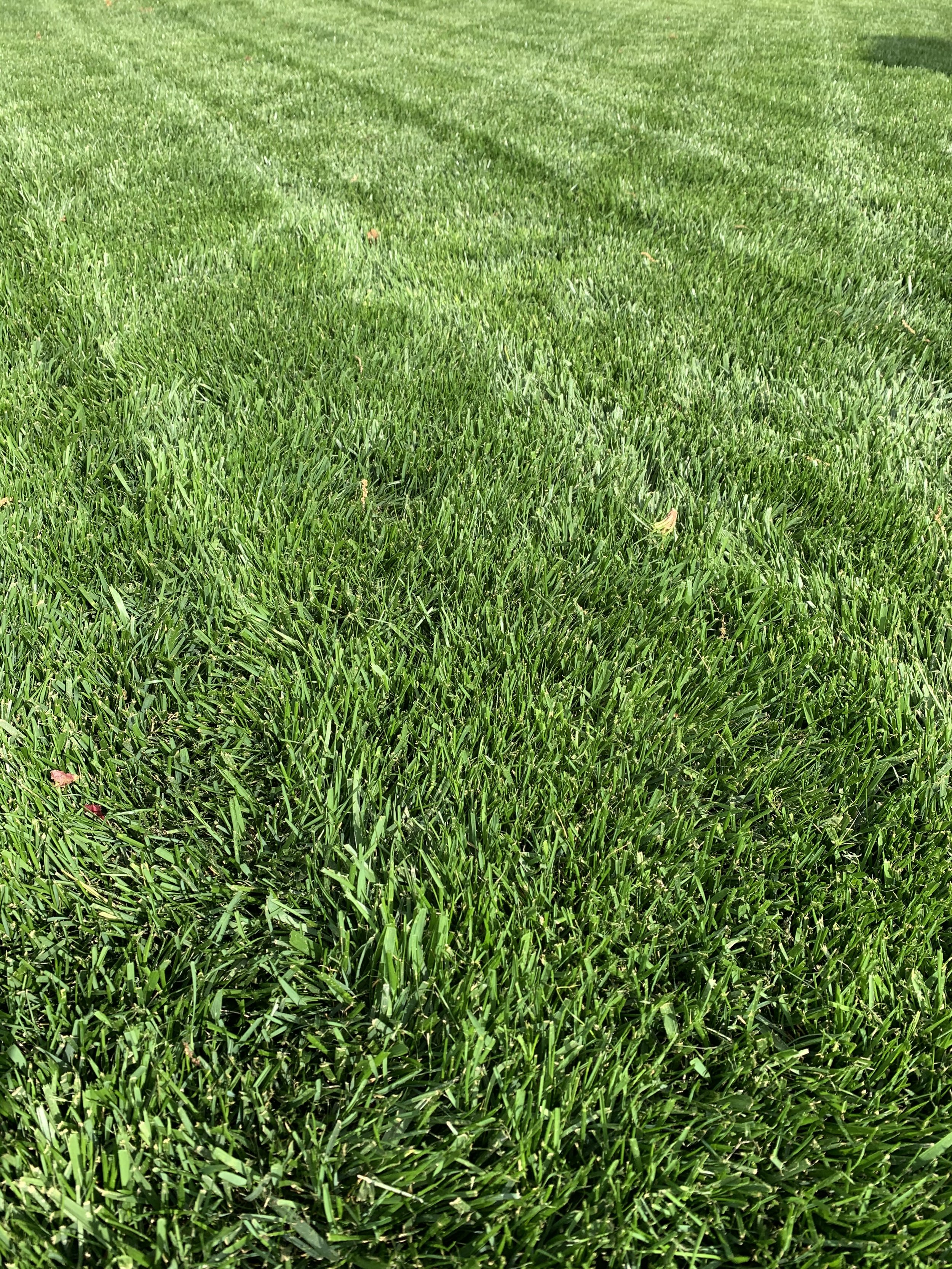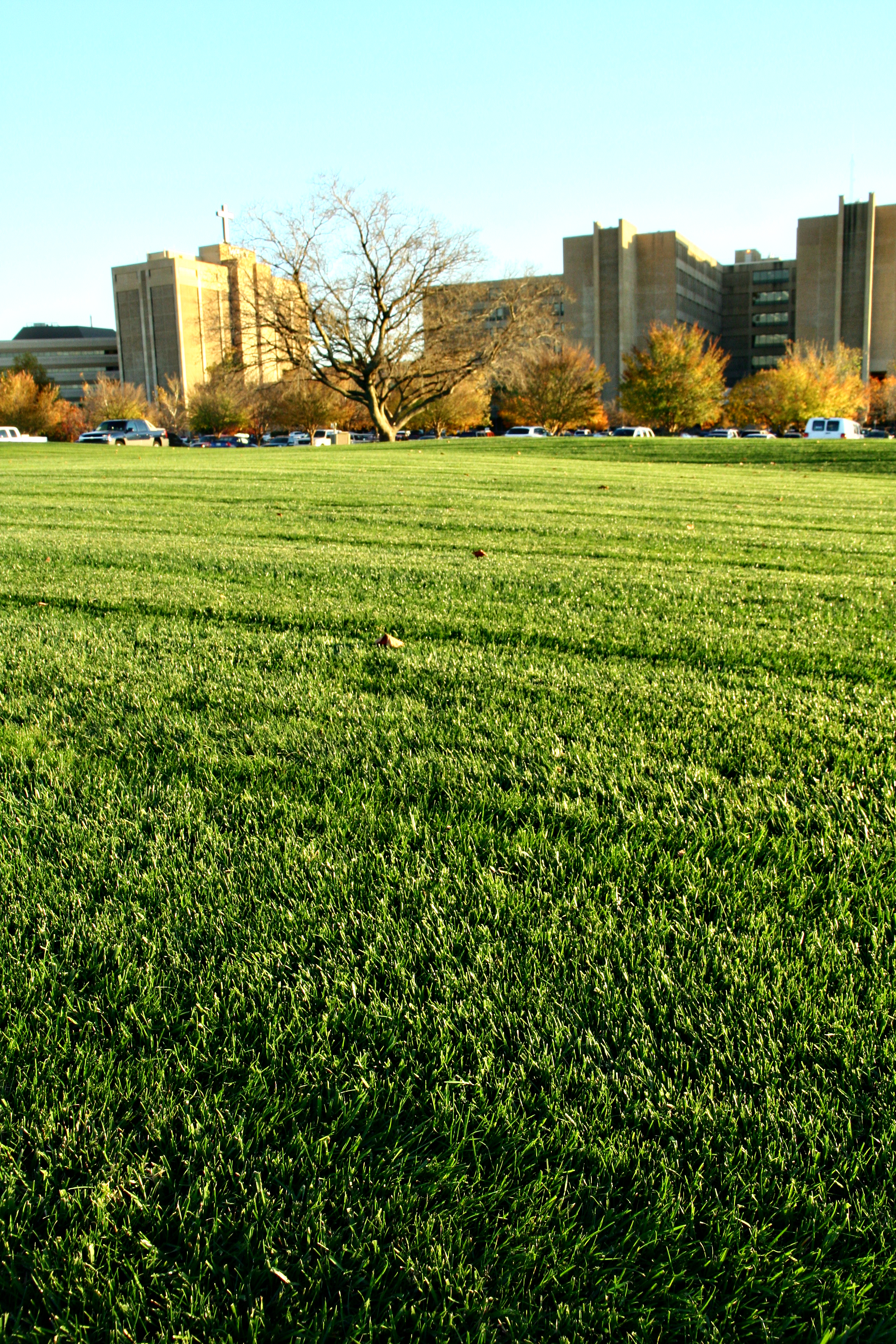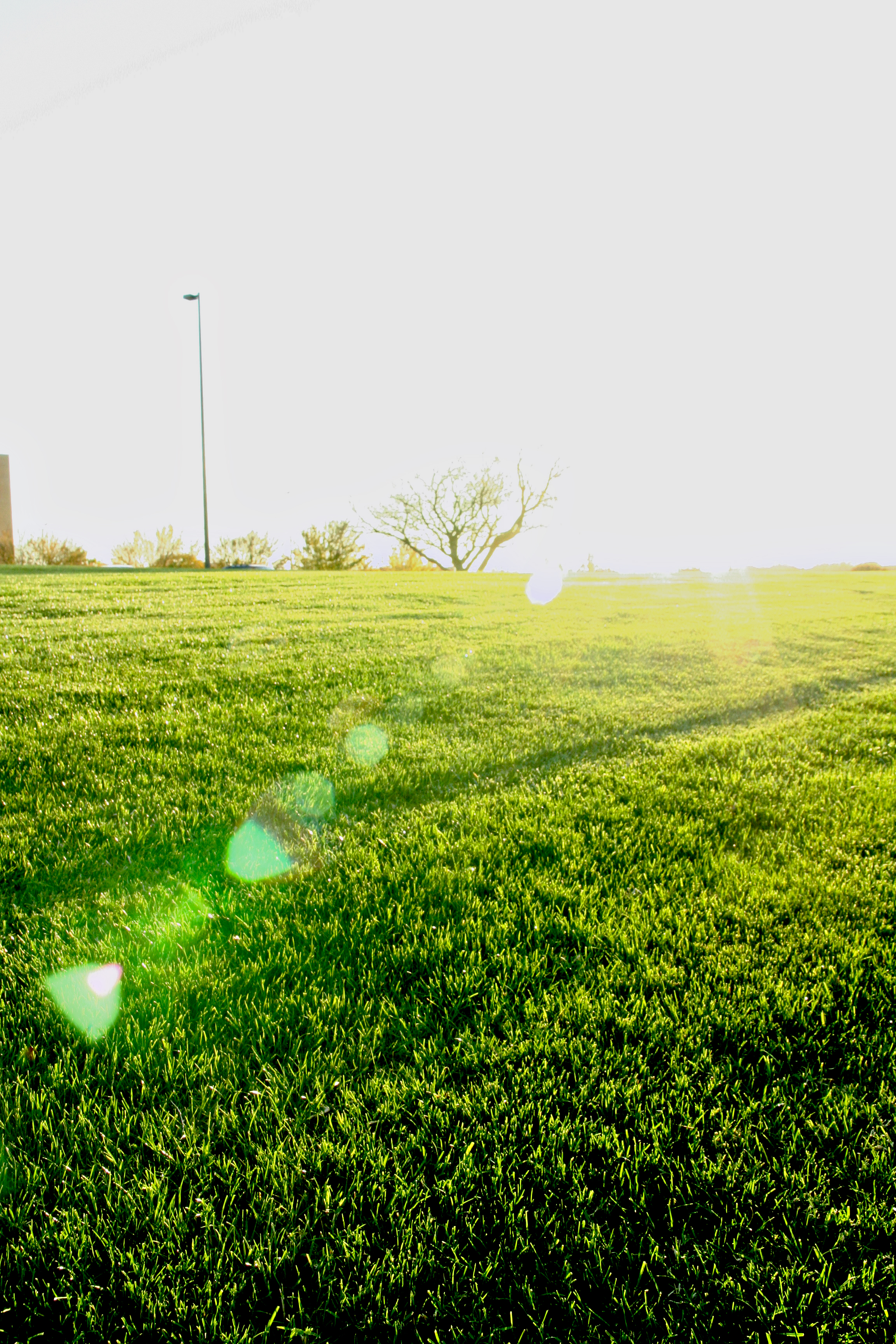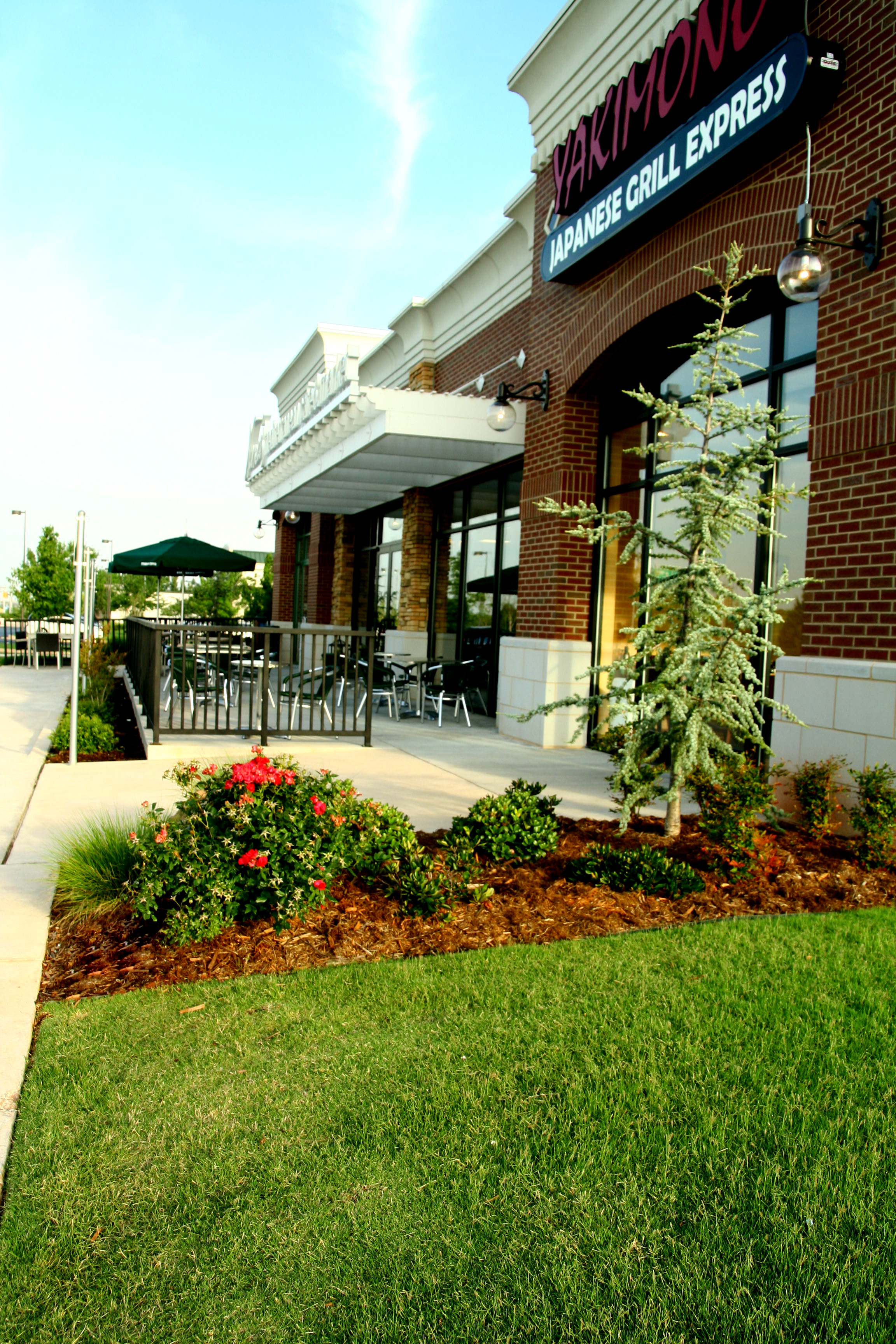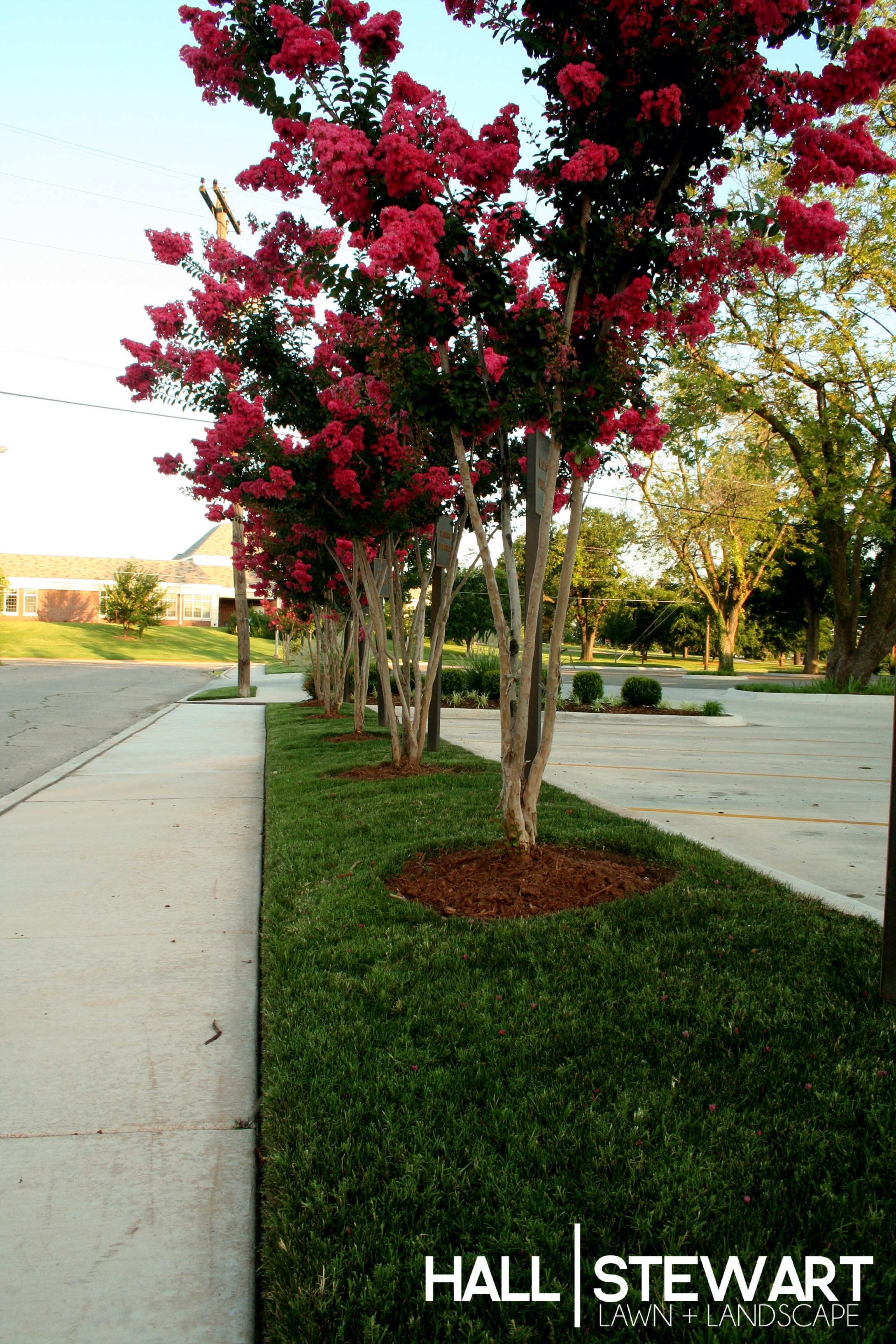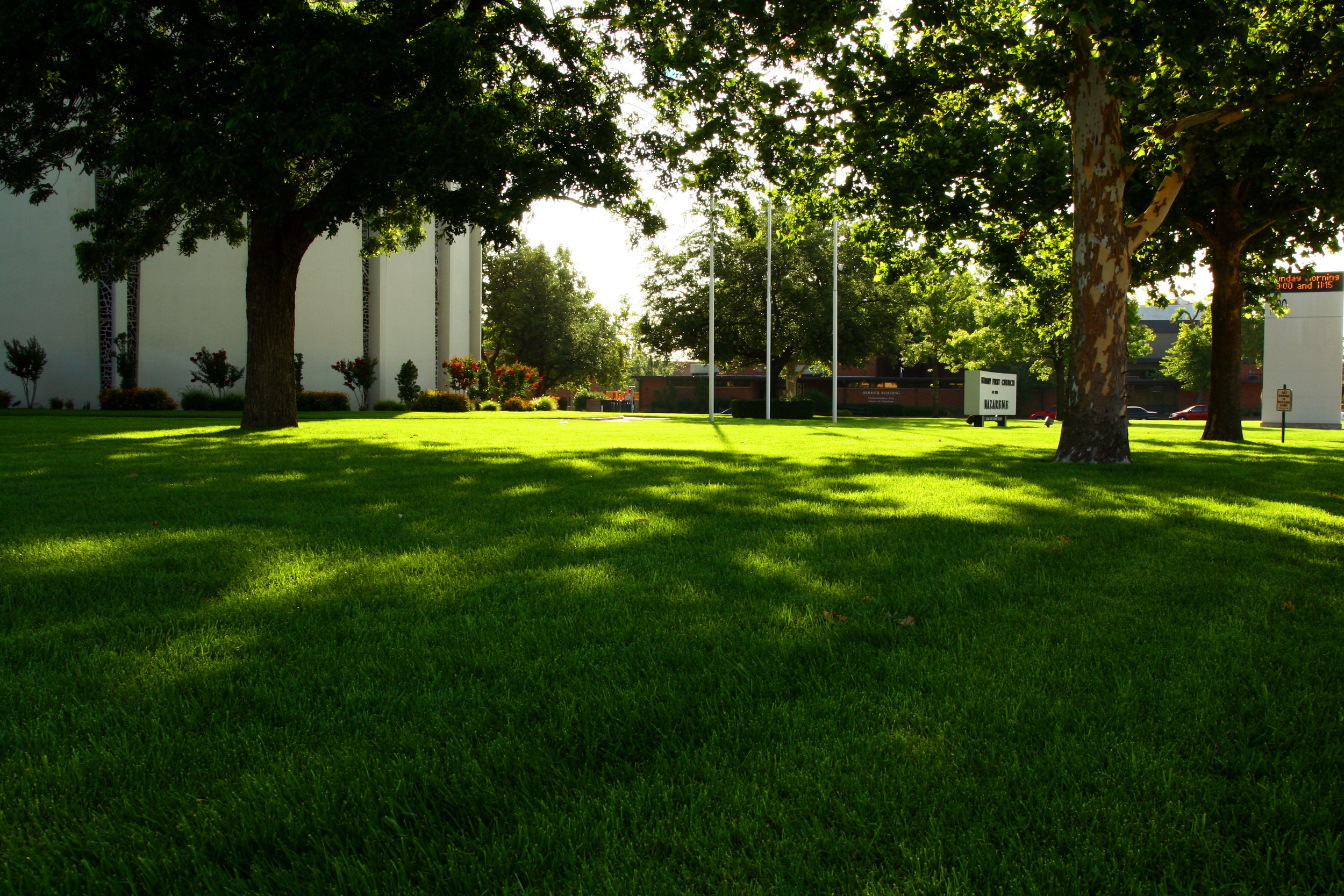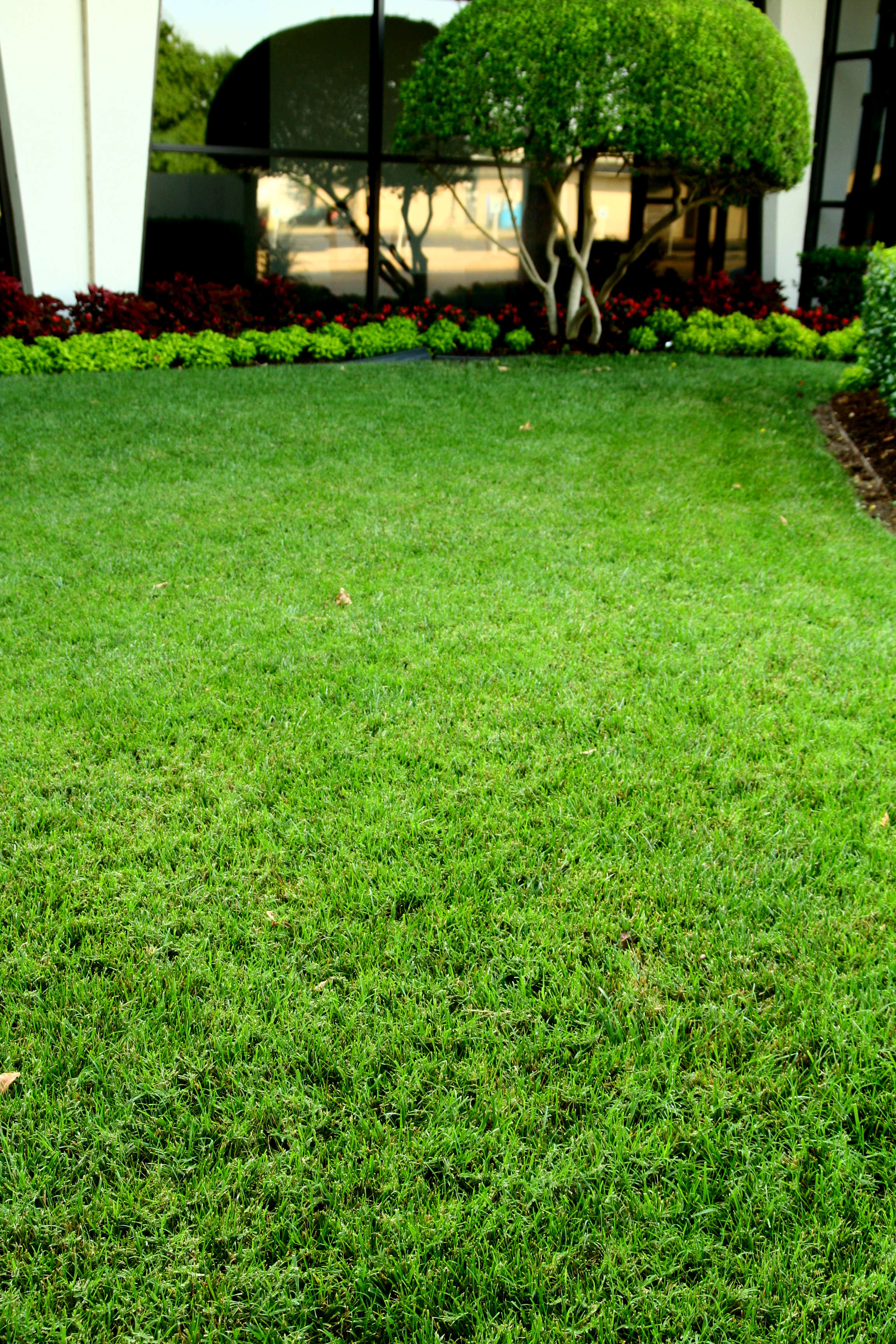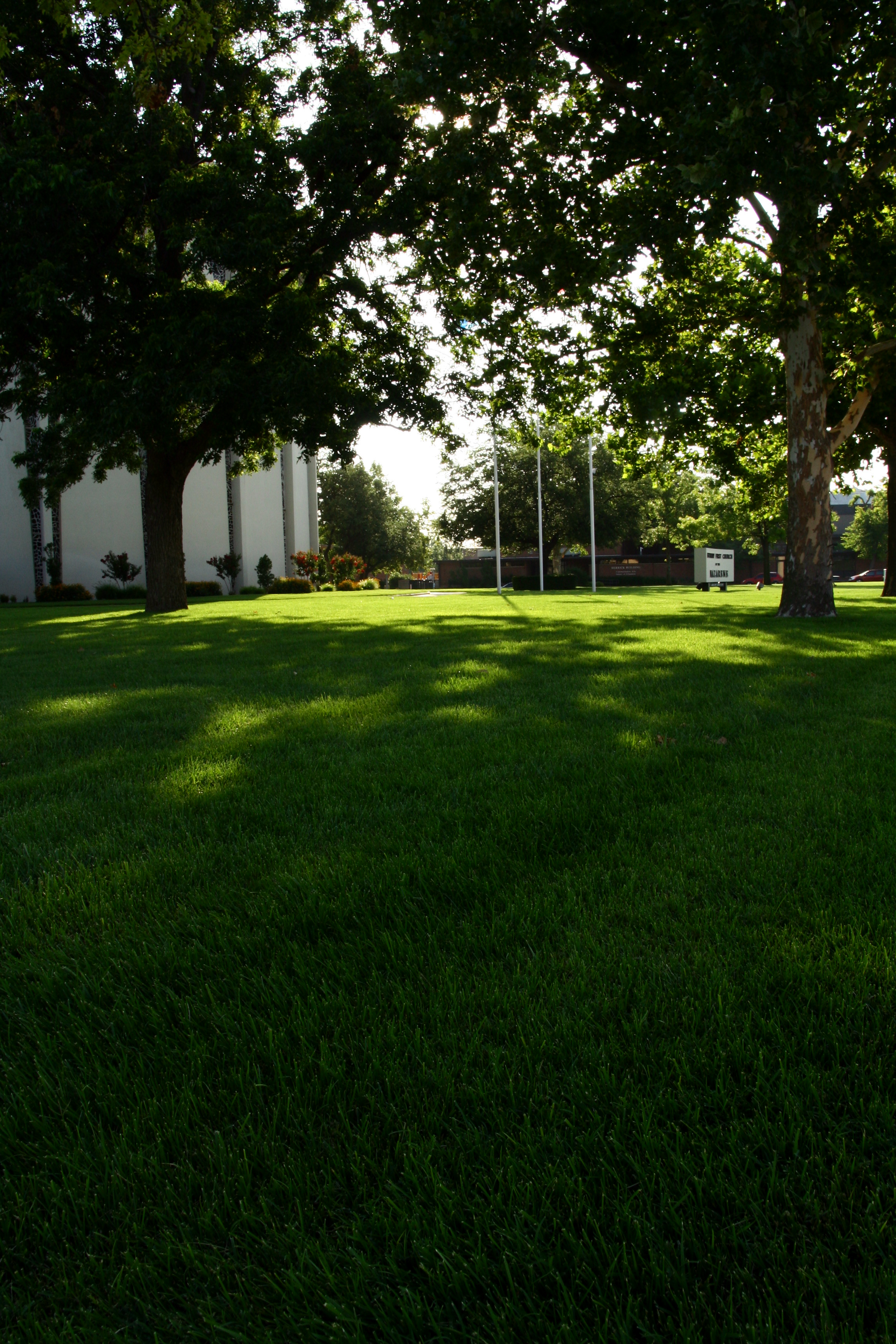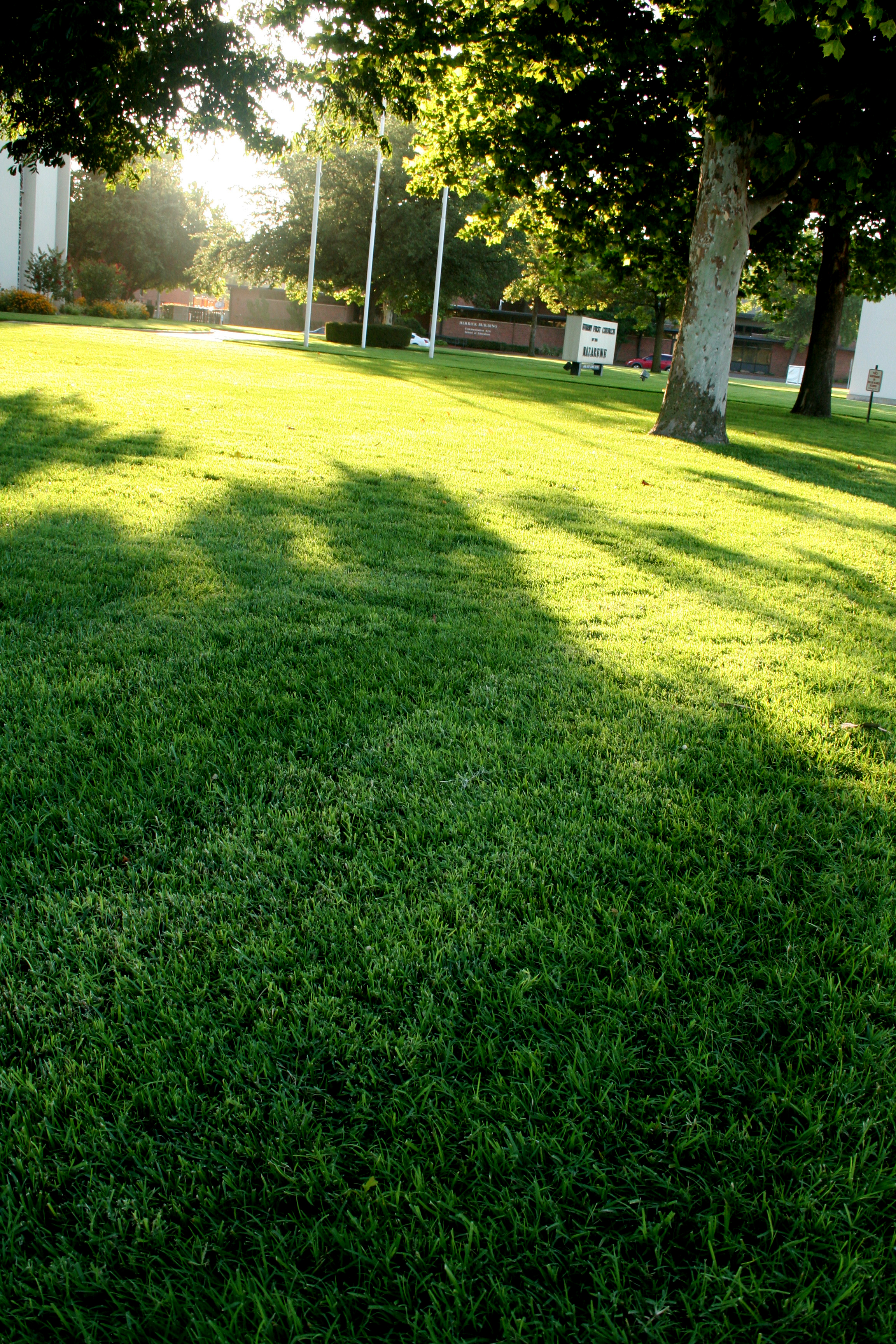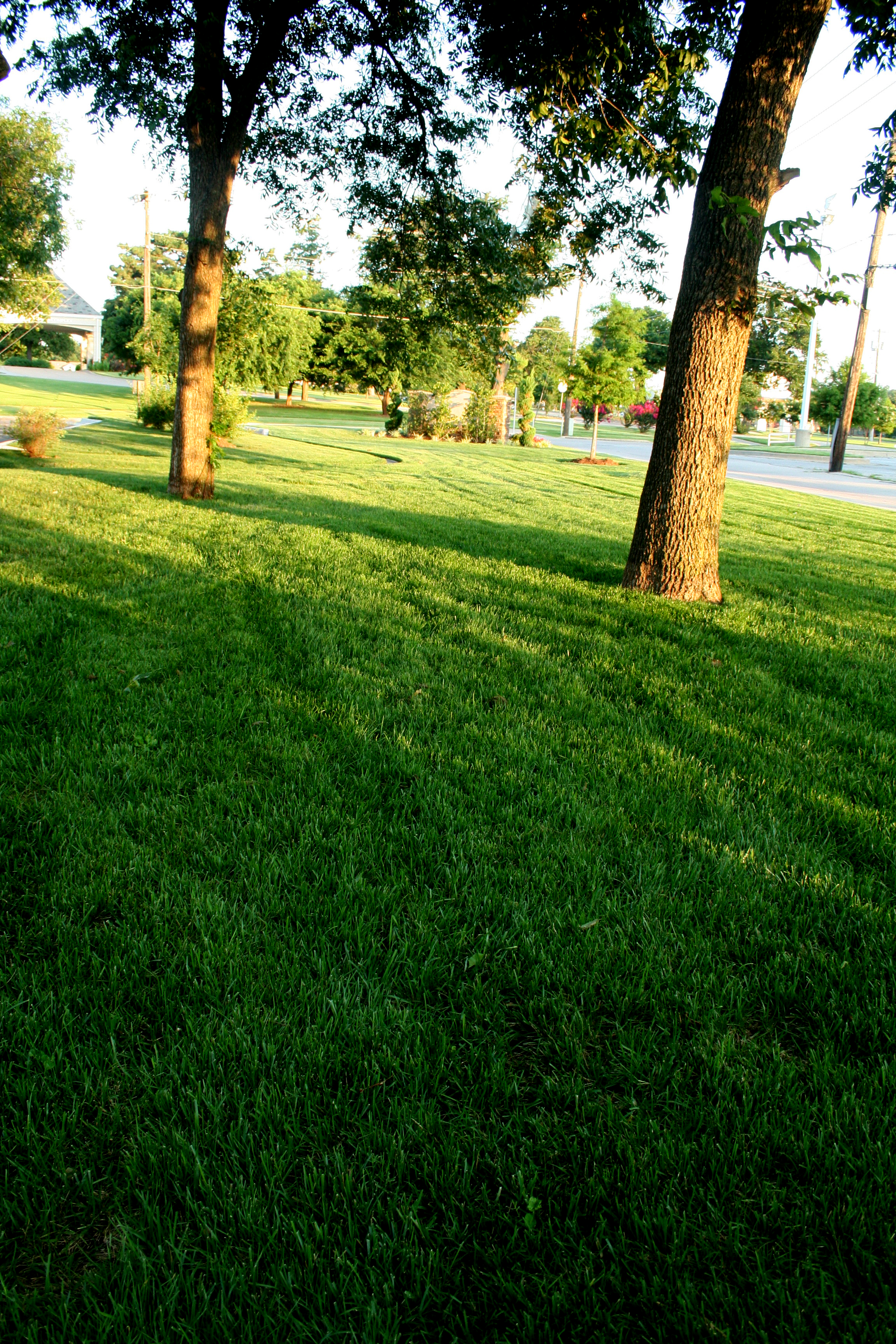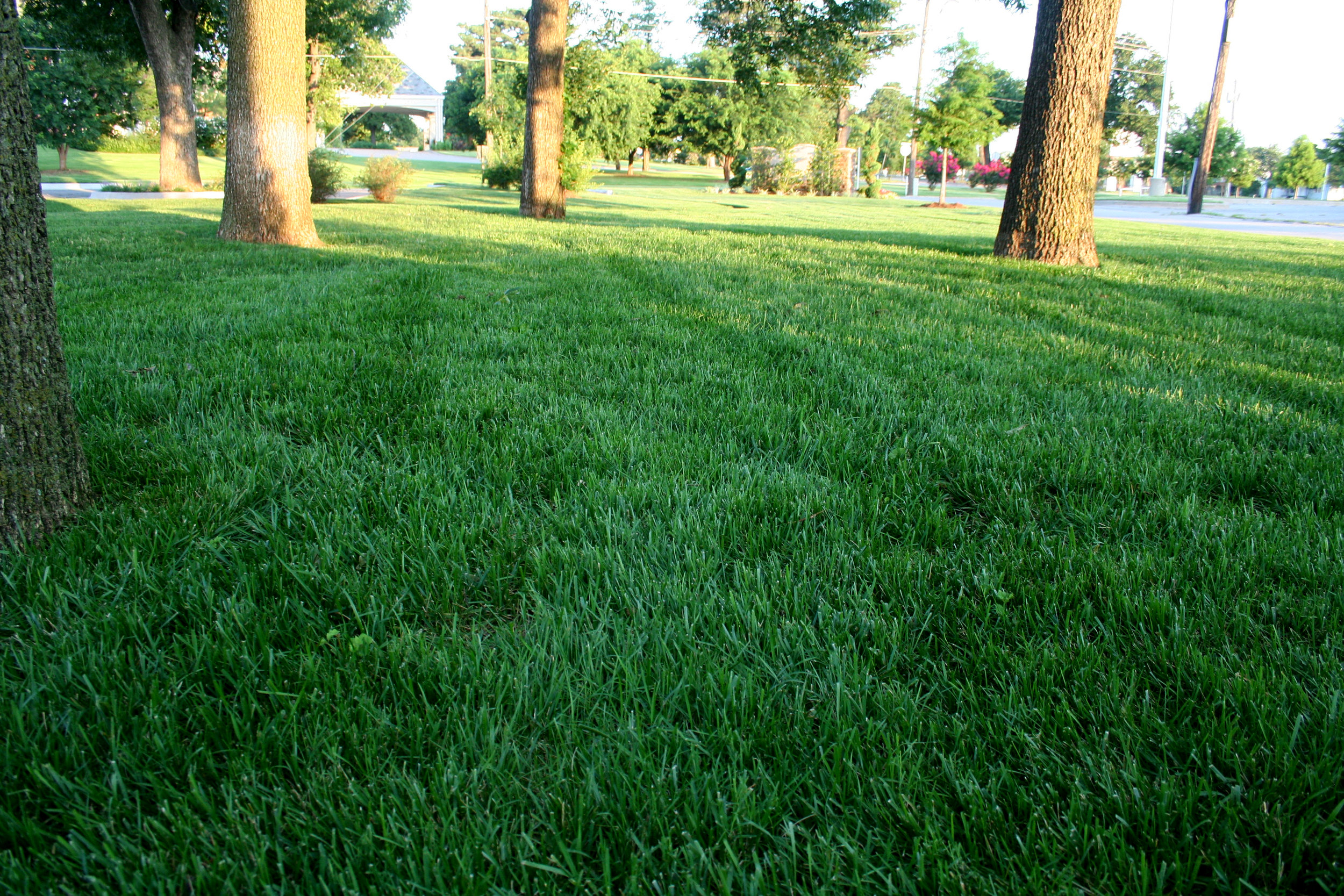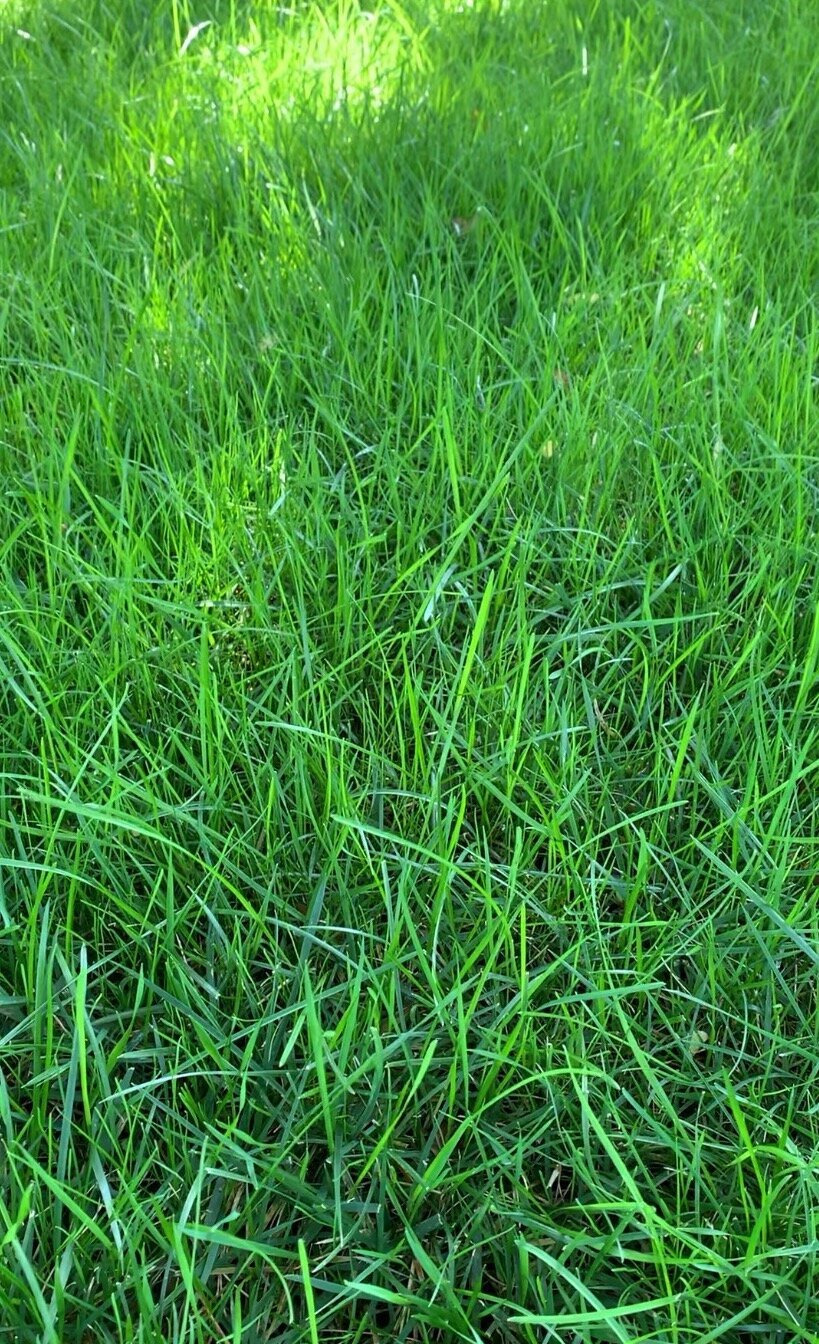
Oklahoma's State Tree... the Redbud!
Are you ready?
Ready for….
One of the best reasons to love Oklahoma!
Redbuds are on the edge of putting on their annual color show!
Who doesn’t love spring in Oklahoma while the Redbuds are celebrating spring?
You have to love some of Oklahoma’s crazy state symbols:
Our state floral emblem is Mistletoe. Really? Mistletoe is an unwanted parasite that harms trees.
Our state vegetable is the Watermelon. Watermelon? Watermelon is a vegetable? Well, come July I’ll be eating a lot of vegetables!
But, when it comes to a state tree, Oklahoma couldn’t have selected a better tree.
There is no better flowering tree than the Redbud, especially the ‘Oklahoma’ Redbud.
Michael Dirr, easily considered America’s leading woody plant expert, wrote in his textbook Dirr’s Hardy Trees and Shrubs about Redbuds:
“No equal, no competitor, can be found among small flowering landscape trees – the stage is reserved for this native species.”
I agree!
Eastern Redbuds are native to the Eastern US from Massachusetts to Florida extending west to Kansas, Oklahoma, and Texas. In the native landscape, you typically see them as understory trees in wooded areas.
From mid-March to early April, you can’t miss them. Their pink to lavender flowers brighten the landscape before leaves bud on most trees. They grow in full sun and partial shade. They tolerate clay, loam, and sandy soils. They adapt to a wide range of soil pH as well as soil moisture.
But, the native Eastern Redbud has its shortcomings. During the summer, the leaves are a disappointment in Oklahoma. The hot winds of July and August leave the native Redbud leaves tattered and bruised.
Thankfully, Oklahoma has an answer to the Eastern Redbud –
the ‘Oklahoma’ Redbud, Cercis Canadensis var. texensis ‘Oklahoma’.
The ‘Oklahoma’ Redbud has a deeper purple color bloom and a waxy, thick, dark green, heart-shaped leaf. The ‘Oklahoma’ is far richer in color in the spring and carries beautiful foliage through the hottest of summers. In the fall, the leaves turn golden yellow.
‘Oklahoma’ Redbuds can be used in every imaginable landscape application. They are excellent lawn trees. They are dynamic in groupings. And they add interest to landscape beds.
Redbuds grow 15-18’ tall and have a spread of 15’ at maturity. Their small tree nature tends to produce a low branching, rounded top-growing pattern.
The Redbud rooting pattern can lead to difficulty in transplanting. When selecting a balled and burlap tree, it is best if the tree is harvested and replanted during the dormant season. A good size to start with is a 1.5” to 2” caliper tree (Tree caliper is the diameter of the tree trunk measured 6” above the soil). If you are planting a Redbud during the growing season, I would recommend purchasing a container grown tree, as there is less transplant shock.
A redbud in Oklahoma City that is starting to bud this week.
Other varieties of Redbud include:
‘Forest Pansy’ which has a shimmering, reddish-purple leaf. This Redbud is a real winner in the spring. But, in the early summer the leaves fade worse than the Eastern Redbud leaves. If you decide to try this variety, select a place in your landscape where the tree will be shielded from the hot west sun and southern winds.
‘Texas Whitebud’ is a white blooming variety of the ‘Oklahoma’. It also has waxy, dark green leaves through the summer.
'Avondale' is a little smaller, reaching only 10-12' in height and width. It is one of the most profuse flowering redbuds with very showy dark rose-purple flowers. It also has a glossy, heart-shaped leaf.
'Lavender Twist' is a weeping redbud with rosy-pink flowers. The umbrella branching pattern only reaches 5-6' tall making it a good specimen for a focal point in the landscape.
'Merlot' is a new hybrid with dark foliage similar to the 'forest pansy' but has glossier leaves that take the summer heat similar to the 'Oklahoma' redbud.
‘Rising Sun’ rosy-lavender flowers and traditional heart shaped leaves that turn from yellow to orange maturing to lime green during the summer. Reaches 8-10’ in height with an 8’ spread.
‘Flame Thrower’ a new cultivar, a cross between the Rising Sun and a weeping Redbud, introduced by North Caroline State University. Individual leaves transition from purple to red to reddish-bronze and finally to yellow-green as they mature.
For more Redbud varieties, click this link https://www.monrovia.com/search/?q=redbud.
‘Rising Sun’
‘Rising Sun’
Texas Whitebud
Flame Thrower
One final reason why I think the Redbud is one of our best trees –
It blooms only on the old wood! Stop and look at one. You will notice that the last 6-12” of each branch doesn’t have any blooms. All of last year’s growth is void of color. All the color is on the two-year old and older wood, occasionally even the trunk will bloom. Typically, trees and shrubs bloom on the end of the branches. Early blooming plants bloom on the growth from last year, such as azalea. Summer bloomers, such as the Crape Myrtle, bloom on the new growth from the spring. The Redbud is unique in only blooming on wood at least one year old.
Jim Paluch in his book, Leaving a Legacy, tells the story of seven senior citizens who discover the magic of the Redbud blooming only on old wood. They were inspired to not spend their later years withering away. They asked, “If a Redbud can bloom on its old wood, why can’t we?” The seven men struck out to make a difference in their community during their elder years.
It’s spring…
Redbuds are blooming…
Time to get outside…
Take a walk around your neighborhood…
Go on a bike ride…
Take a drive...
Better yet, go on a Redbud Scavenger hunt:
Find the Redbud with the most dynamic color.
Find the best Redbud in a landscape planting.
Find the best Redbud in a native setting.
As always, we love your pictures!
Lorne Hall
Hall | Stewart Lawn + Landscape
(405)367-3873
Often Asked Spring Weed Control Questions
More and more spring like days have the landscape on the edge of bursting with new life!
We are all eagerly anticipating the bright yellows of Forsythia, the pink-purple Redbuds, the myriads of colorful Tulips….the list could go on and on!
That’s the exciting news!
The bad news, yes, spring does bring bad news for some lawns...
Spring also means lawns that have not been on a regularly scheduled lawn care program are bursting with weeds.
Flowering Quince is one of the early spring bloomers. Quince grows well in full sun to partial shade and has a dense spreading growth pattern.
Blooming Forsythia is a sign that you need to get a pre-emergent on your lawn if you haven’t already.
Who doesn’t love the bright color of Creeping Phlox in the early spring landscape?
Weeds generate a lot of questions this time of year. Let’s visit about a few of the most asked questions:
Is it too late to apply a pre-emergent herbicide?
When is it too late to put a pre-emergent on your lawn?
Why is it so important to prevent crabgrass?
Why is it important to apply a second pre-emergent application in the spring?
If I put a pre-emergent on my lawn every year in the spring, why do I have weeds now?
Before we get to the questions, let’s break down the word “pre-emergent”:
Pre - before. Emerge – come into view, to be seen.
A pre-emergent herbicide is used to prevent annual weed seeds from germinating by drying out the unwanted weed seed before it starts to grow.
Pre-emergent herbicides have little to no impact on weeds we are already seeing.
Henbit, an annual winter weed that is littering lawns is easy to prevent with fall pre-emergent applications.
Crabgrass seedling
Early Summer Crabgrass
Mid-Summer Crabgrass
Commonly asked pre-emergent questions:
“Is it too late to apply a pre-emergent herbicide?” (The most asked lawn care question this time of year.)
Crabgrass, the most feared annual summer weed, germinates when soil temperatures reach 55 degrees for 3 consecutive days, which is typically mid-March in central Oklahoma.
Currently, soil temperatures in the Oklahoma City metro are hovering right around 50 degrees. With a cold weekend, soil temperatures will dip into the upper 40s and then start climbing again next week.
It is not too late to prevent the germination of most summer annual weeds this year. But, it is best to apply a pre-emergent on your lawn as soon as possible.
Crabgrass is a very prolific yellowish to light green annual grassy weed that is east to prevent with a pre-emergent herbicide application.
Untreated lawns, especially thin turf areas, will have a healthy stand of crabgrass by mid April.
“When is it too late to put a pre-emergent on your lawn?”
There are two reasons why it is never too late to start a weed control program:
1. The high quality professional pre-emergent herbicide we use will control newly germinated crabgrass during the early stages of development. So, if you do not apply a pre-emergent before germination, we can gain complete control if an application is within the first 2-3 weeks of germination.
2. Not all crabgrass seeds germinate all at once. Germination will continue through the spring and early summer. Even if you don’t get a pre-emergent on at the perfect time, having some prevention is better than none.
“Why is it so important to prevent crabgrass?”
Crabgrass is the most prolific summer annual grassy weed. As an annual, it dies every year and comes back from seed the next year.
If you do not apply a pre-emergent on your lawn every year before crabgrass germination, it is certain that you will have crabgrass in your lawn during the summer.
Crabgrass is a fast grower and if left unattended will rapidly dominate turf. Just like the name suggests, it spreads low to the ground. It can be found in almost every turf and landscape setting during the summer months where a pre-emergent was not applied.
During the summer, crabgrass grows faster than turfgrass and thrives under stressful conditions of drought, heat, and low soil fertility, when turf is struggling.
Crabgrass dies in the fall after the first hard frost. But before it dies, one mature crabgrass will produce thousands of seeds.
Crabgrass will make a home in thin areas of turf this summer. Two keys to preventing crabgrass are two timely pre-emergent applications and a thick healthy lawn.
Why is it important to apply a second pre-emergent application in the spring?
Pre-emergent herbicides work by creating a barrier over the soil surface. The barrier gradually weakens over the season from foot traffic, mowing and periods of heavy rain. The edges of the lawn are the first to break down. The purpose of a second pre-emergent is to provide protection throughout the summer months.
Another reason for a second pre-emergent is to prevent other troublesome summer grassy weeds: goosegrass and sandbur.
Goosegrass germinates when soil temperatures reach 60 to 65 degrees. Because of the later germination period, it is common for goosegrass to dominate in lawns that only receive the first pre-emergent of the year. Goosegrass is common in areas of high foot traffic, compacted and poorly drained soils. Like most grassy weeds, prevention is the best medicine. Aeration is also a key step in reducing goosegrass.
Sandburs start germinating at 55 degrees soil temperatures, but they reach peak germination much later at 75-degree soil temperatures. A second pre-emergent application is critical for the prevention of sandburs. Another important characteristic of sandburs is they thrive in thin, dry turf. Two spring pre-emergent herbicide applications and a thick, healthy turf are the best defenses.
Goosegrass germinates when soil temperatures reach 60 to 65 degrees. Because of the later germination period, it is common for goosegrass to dominate in lawns that only receive the first pre-emergent of the year. Goosegrass is common in areas of high foot traffic, compacted and poorly drained soils. Like most grassy weeds, prevention is the best medicine. Aeration is also a key step in reducing goosegrass.
Sandburs start germinating at 55 degrees soil temperatures, but they reach peak germination much later at 75 degree soil temperatures. A second pre-emergent application is critical for the prevention of sandburs. Another important characteristic of sandburs is they thrive in thin, dry turf. Two spring pre-emergent herbicide applications and a thick, healthy turf are the best defenses.
If I put a pre-emergent on my lawn every spring, why do I have weeds now?
The most common weeds in lawns right now are henbit, chickweed and poa annua. All three are winter annual weeds. Henbit and chickweed are winter annual broadleaf weeds. Poa annua is a winter annual grassy weed.
Winter annual weeds need to be prevented in the fall with a pre-emergent herbicide just like summer annual weeds need to be prevented now. Winter annual weeds start germinating in September as soon as we start getting cool fall nights. Two fall pre-emergent applications are just as important as spring applications to have a weed free lawn.
The winter annual weeds currently in lawns can be controlled by mixing a post emergent herbicide with the pre-emergent application. By this time of year, winter annual weeds are reaching maturity. As annual weeds mature their growth slows as they put their energy toward flowering and producing seeds before they die.
The challenge is weeds are slower to react to weed control applications as they mature. As growth slows, they do not draw in the herbicides as quickly as they do when they are actively growing.
The solution to a clean lawn this time of year is to apply fall pre-emergent herbicides to prevent winter annual weeds.
It is always easier to prevent a weed than it is to control a mature one.
Two important take aways -
If you haven’t put a pre-emergent on your lawn yet this spring, it is not too late. But, the sooner the better!
If you have put a pre-emergent on your lawn it is important to put a second application on your lawn for season long weed prevention!
The timing of pre-emergent applications, the quality of the herbicide applied, and the right quantity are all critical components for achieving your best lawn this season.
If you are a subscriber to a Hall | Stewart Lawn Care Program, either the 7-Step Weed Control & Fertilizer or the 4-Step Weed Control Only, your lawn receives the critical First Pre-emergent Application and the important Second Pre-emergent Application every spring.
If you are not a subscriber to a Hall | Stewart Lawn Care Program, please contact us.
We want to make sure you receive timely pre-emergent herbicides to stop weeds before they start wreaking havoc on your lawn.
Preventing weeds is much easier on your lawn than trying to control them after they are up and growing. Once weeds take root, harsher products must be used that may slow turf development.
If you have questions or would like additional information about pre-emergent applications, please respond to this email or give us a call.
Lorne Hall
Hall | Stewart Lawn Care Programs
(405)367-3873
March Lawn & Landscape Tips
March, the month our world awakens from its winter slumber!
March, the month our world bursts with color!
March, the month you just want to be outdoors in your lawn, in your landscape, and on your patio!
After a cold third week of February, the spring like weather this week has added a smile to faces and put a spring in our steps.
So, get outside. Enjoy every minute of every spring day. Spend some time in your lawn and landscape.
Here are a few lawn and landscape tasks you should tackle this month:
No two springs are a like. This picture is from February 24, 2024. And tulips were already adding color to the landscape. This year, after a very cold mid-February tulips are just starting to emerge from the soil.
Forsythia pictures from last spring!
If you haven't already, cut your fescue lawn to remove the freeze damaged leaf tips and soon the lawn will return to full color and start growing.
Spring Lawn Maintenance – Get the mower out and get it started. It is much easier to remove the winter damaged leaf blades before the turf begins to green-up. Remember, scalping on the lowest setting isn’t required and isn’t recommended. Simply mow the lawn at the height you plan to start the mowing season.
For most Bermuda lawns, the second setting is recommended. For fescue, start on the second or third notch on your mower.
We are often asked about dethatching at this time of year.
What is dethatching? Dethatching is the removal of excessive thatch that builds up on the soil surface by using a vertical power rake.
But, unless you have a thick layer of ½-1” or more of thatch, dethatching causes more damage to the crown of the plants than it does good. So, with only a few exceptions, the best method for reducing thatch is an initial spring lawn maintenance followed by aeration after spring green-up. Unnecessary dethatching and scalping the lawn too low removes the canopy opening the lawn up to disease and weeds.
Need more info on the first mowing of the season? Check out last week’s post!
Lawn Maintenance – As soil temperatures climb and occasional spring rains return, as soon as you remove the winter damaged leaf tips from your fescue lawns, they will regain color and start growing. Start your cool season lawn off right by maintaining it at 2 ½ - 3”. When it starts growing, mow frequently enough that you are never removing more than 1/3 of the leaf blade per cutting. So, if you plan to maintain a 3” level, don’t allow the lawn to grow past 4.5” without giving it a trim.
If you have warm season turf, bermuda or zoysia, after you cut the lawn for the first time to remove the brown winter damaged leaf blades, most likely you can put off regularly scheduled lawn mowing until April.
Saucer Magnolia is a small deciduous tree with saucer-shaped white, pink or purple blooms in early spring. It makes a great specimen tree from the spectacular spring blooms to its spreading, multi-trucked shape.
Tulips from last spring.
Saucer Magnolia is a spring favorite.
Headed to Dallas in the next few weeks? Add the Dallas Arboretum to your places to visit during their spring Dallas Blooms event, now through April 8th.
One of the first shrubs to announce spring is forsythia. Interesting tidbit: when forsythia starts blooming it is an indicator that crabgrass has started germinating.
Lawn Weed Control – Summer annual weeds begin germinating when soil temperatures consistently reach 55 degrees. With the above normal temperatures over the past week, soil temperatures have quickly climbed into the upper 40s to low 50s. Unless we have another cold spell, we are on course to see soil temperatures consistently reach 55 degrees by mid-March.
If you have not applied the first spring pre-emergent yet, please do so as quickly as possible. Whether you apply a pre-emergent yourself, or we do it for you, always follow instructions. Watering is a required step to move the herbicide into the top ½” of soil.
Want to know what crabgrass will do to your lawn this summer if you don’t apply a pre-emergent?
This is the month landscapes are filled with the bright pinkish-red colors of Redbuds, the Oklahoma State tree
Bed Weed Control – March is an excellent month to apply a plant safe pre-emergent to your landscape plantings. Use caution in selecting the product to make sure it is safe for your plants. When possible, select a granular pre-emergent mixed with a fertilizer containing approximately 20% nitrogen. Doing so will give your plants a good spring feeding while preventing weeds at the same time.
Lawn Fertilization – This month is a good time to start fertilizing your cool season lawns. Use a fertilizer with 25-30% nitrogen. Cool season lawns need to be fed more in the spring and fall when they are actively growing, and less in the summer.
If you have a warm season lawn, wait until lawns begin greening up to apply the first fertilizer application.
Tree & Shrub Care - If you struggled with aphids, mites or scale in the past year you still have time to apply a dormant oil application for another couple of weeks. Dormant oils work by suffocating, smothering overwintering insects. Oil blocks the air holes causing the insect to suffocate. Dormant oils are an eco-friendlier approach to insect control by reducing the need for harsher control methods later.
Spring is also a good time to fertilize trees and shrubs with slow-release nitrogen, high quality phosphorus and potassium as well as micronutrients to provide consistent, extended feeding. This formulation is ideal for improving tree and ornamental development and vigor without unwanted shoot growth. March is also a good time to apply systemic insecticide to control sucking and chewing insects.
Hyacinth is one of the first spring blooming bulbs to add splashes of color to the landscape.
Not all the colors of spring are blooms. Be on the watch for the bright colors of new leaves such as the yellow, oranges and reds of Goldmound Spirea.
Mulch – Spring is a great time to mulch your landscape plantings. Maintaining a 2” layer of organic mulch will reduce weed population, retain soil moisture, and provide a more consistent soil temperature for plant roots. I find adding mulch an easier task in the spring when I am cleaning my landscape plantings for the first time.
Irrigation – It is always important to monitor rainfall and water based on need. January and February, typically our driest months, have once again lived up to expectations this year. It has been over 50 days since we last received a ¼” of rainfall. Until there is a good rainfall, give your lawn and landscape a good soaking every 4 to 7 days. As temperatures warm up, gradually increase the frequency of watering but delay watering every other day until late spring to early summer. Always delay watering for a few days when we receive a ¼” rainfall or more. You will save both water and money if you always water on an as needed basis.
Flowering Quince with bright orange to red flowers is one of the first shrubs to declare spring.
Spring Seasonal Color – Pansies are the toughest winter annual color, but it is common for them to look a little freeze burned after the winter. As long as the crown of the plant is not damaged, they will return to life and bloom this spring. The great thing about pansies is they add color to the landscape until it is warm enough to plant summer annuals.
Wait until April to plant impatient, begonia, geranium, etc. And remember, most summer annuals need the warmer soil temperatures of late April or May before they are planted. If you get in a hurry, you will end up planting your summer annual color twice. When planting, remember most plants prefer well drained, organic soil and would prefer you add compost when planting.
Seeding Fescue – March is the second-best time to overseed fescue. But, it comes in a very distant second to seeding in the fall. Spring seeded fescue will come up very well and look very good till the summer heat arrives - then it fades quickly. Fescue, being a cool season grass, will not establish a sustainable root system when planted in the spring. Give your fescue lawn a chance to green up first to get a better feel on the overall condition of the lawn. If you still feel you have bare areas that need to be addressed now, seed this month but still plan on seeding again in the fall. In most cases waiting till fall to seed is best. Fall seeding allows you to focus on weed prevention and turf development in the spring and turf establishment in the fall when it is best.
Bridal Wreath Spirea will add graceful white blooms toward the end of March.
Creeping Phlox is one of the first perennials to announce spring has arrived.
Pruning – March is the time to do heavy pruning on your roses. March is also the best time to make a major reduction in the size of hollies, boxwoods and most broadleaf evergreens. Before spring growth arrives, you can successfully remove all the foliage back to the central leader if needed.
Need more information on spring pruning?
If you need help with any of your lawn and landscape tasks, or just have a few questions, please don’t hesitate to give us a call or send us an email.
Lorne Hall
Hall | Stewart Lawn + Landscape
(405)367-3873
The First Ritual of Spring
What is your first ritual of spring?
Is it the first shrub or tree you see in bloom?
For many lawn enthusiasts the first ritual of spring is not seeing all of creation bursting with new life, but rather it is the first time they fire up their lawn mower.
Even though we are coming off a week with over 100 consecutive hours below freezing, this is Oklahoma, and this week will have us all celebrating spring!
The first few spring-like days every year find us fielding an onslaught of questions about the first lawn mowing of the season.
Let’s cover some of the most common first lawn mowing questions:
When is the right time for spring lawn maintenance?
The best time is between the last week of February and mid-March. The goal is to do it after the last chance for extended cold weather and before spring green up.
How low do I need to cut the lawn the first time?
This will be the most often asked question over the next few weeks.
The old rule was to cut the lawn as short as the mower would go. Homeowners would brag about getting the lawn shorter than their neighbor. The more dirt exposed, the better.
But why? What is the purpose of scalping your lawn to the dirt? Is that the best thing for your lawn?
The practice of scalping your lawn in the spring on the lowest setting isn’t needed and isn’t beneficial for your lawn.
But, there is something you should do every spring – the initial spring lawn maintenance.
It is common for Fescue to end up over 3” tall. 1.5-2” is a good starting height in the spring.
Spring lawn maintenance is the process of cutting the lawn to the height you plan to start mowing this spring. The purpose is to remove the cold damaged leaf blades allowing the crown, stolons, and rhizomes to grow. It is not good to cut the lawn so short you see dirt.
What is the difference?
Lawn scalping is setting your mower on the lowest setting, cutting the lawn as short as possible, often exposing some soil in the process. But, anytime you expose dirt in your lawn you are opening the opportunity for more weeds to germinate. And, when you scalp as low as possible you run the risk of damaging the plant crown. Damage to the crown will result in a weaker root system and a stressed lawn through spring and into the early summer
Spring Lawn Maintenance is the practice of setting your mower height at or just below the height you plan to start mowing for the season. This sets the lawn up for you to gradually increase the cutting height through the spring and summer with your lawn reaching its maximum height during the heat of late summer.
If you plan to start your lawn off for the season on the second notch on your mower, then do the initial spring lawn maintenance at the same height.
Often Bermuda lawns end the season at 2-3” tall. Cutting it down to 1” is a good place to start the season.
Warm season turfs, Bermuda and Zoysia, go completely dormant during the winter, so removing the brown leaf blades is necessary. The leaf blades (grass shoots) are damaged by the winter freezes and do not green back up. In the spring, the crown, stolon, and tillers will green back up. So, only leaf blades need to be removed, not the crown or stolon.
Fescue lawn before Spring Lawn Maintenance has removed the freeze damaged grass tips.
Fescue lawn after Spring Lawn Maintenance.
Should I remove the clippings or leave them on the lawn?
Bag the clippings or rake them up after mowing. Removing the clippings is always a good practice anytime you are removing more than 1/3 of the grass blade in one mowing whether it is dormant or green.
Fescue lawn 3 weeks after Spring Lawn Maintenance
If I have a cool season lawn (fescue or rye), is spring lawn maintenance needed?
For the best spring green up, I would recommend mowing the lawn a little shorter than you left it at the end of last season. Fescue and rye leaf blades often have brown tips from the winter cold. If you remove the brown leaf tips soon, your lawn will develop better color quickly as soil temperatures warm.
If you have a fescue lawn, in the next couple of weeks cut your lawn a little shorter than you left it in the fall to remove the freeze damaged leaf blades.
Should I dethatch the lawn?
Dethatching is the process of removing excess thatch. Thatch is the layer of undecomposed grass clippings that builds up on the soil surface. When your lawn is healthy and you are mowing often enough, you should not have thatch build up. This is even true if you do not catch your clippings during the growing season. But, if you have a layer of more than 1” of thatch, dethatching is recommended. Use a verti-cutter, also known as a power rake, to remove the thatch before spring green up. Excessive thatch stops air, nutrients, and water from reaching the root zone and results in a shallow rooted turf.
Aeration, after spring green up, is also an effective way of removing thatch and has the added benefit of reducing soil compaction.
In most cases, spring lawn maintenance followed by aeration after spring green up will cure thatch problems. In over 30 years in the lawn and landscape industry, I have only seen a handful of lawns with excessive thatch problems to the point that dethatching was required.
Most fescue lawns are more brown than green now. Cutting the lawn short enough to remove the brown tips and warm spring-like days will have your fescue back to green by early March.
Best Practice for Bermuda Lawns – Anytime in the next 3 weeks cut the lawn on your mower’s next to lowest setting and remove the clippings. Plan to aerate your lawn in April – June to reduce compaction, improve soil structure, and move organic material into the root zone.
Best Practice for Fescue Lawns – In the next 3 weeks, cut your lawn a little lower than you left it in the fall to remove the freeze damaged leaf blades, then be ready to resume weekly mowing in mid-March.
If you have any questions concerning the practice of spring lawn maintenance vs scalping, or the benefits of detaching vs aeration, send us an email or give us a call.
Our goal is to help you get your lawn off to its best start this spring.
Lorne Hall
Hall | Stewart Lawn + Landscape
(405)367-3873
Ornamental Grasses – The Single Maintenance Per Year Plant!
Ornamental grasses are a great addition to any landscape. They are easy to grow. They are tolerant of most soils. Once they are established, they don’t require much water. And, they rarely have insect or disease issues.
Best of all - they require little maintenance.
They need trimming only one time per year.
The rest of the season they need little to no attention.
What is an ornamental grass?
Most commonly they come in two forms: medium to tall grasses and groundcovers.
Groundcovers include Liriope and Mondo Grass. They are often used as borders or in mass plantings. Liriope makes a great groundcover in turf areas that are even too shady for fescue.
Taller grasses can be used as focal point or in mass plantings.
Ornamental grasses provide texture, color, height, and flower plumes. They also add interest in the winter as their blades sway in the breeze.
A few of the more frequently used grasses include Fountain Grass (including the popular Hameln), Japanese Blood Grass, Liriope, Maiden Grass, Mondo Grass, Plume Grass, Mexican Feather Grass, Muhly, and Sweet Flag.
Liriope, commonly know as Monkey Grass, makes a good ground cover. There are several varieties. Purple Explosion produces deep purple spikes in the late summer.
Pink Muhly Grass produces pinkish-purple lacy plumes in the fall.
Liriope is a great solution for areas that are too shady to grow a thick lawn.
When do ornamental grasses need their once per year trim?
Anytime now through mid-March. The goal is to remove all the dormant top before new shoots start to develop. If you make a cut on new shoots, the tip will keep a bruised look all season.
I prefer to wait until late winter to cut back ornamental grasses. They add interest to the winter landscape as they sway in the wind.
Ornamental grasses need to have their dormant foliage removed before new shoots emerge this spring.
Cutting back your ornamental grasses in late winter can be a big task. But, you only have to work on the one time per year. Grasses are nearly maintenance free the rest of the year.
Tying up the foliage first will make the job and clean-up go quicker.
Liriope and Mondo Grasses typically have freeze burnt leaf blades from winter cold spells and need to be trimmed sometime between now and mid-March.
What height does ornamental grass need to be cut?
For pampas grasses, remove the dormant foliage to a height of approximately 12”.
For liriope, trim to a height of 2-3”.
Mondo Grass, particularly Dwarf Mondo, only needs a once per year trim if most of the foliage has browned. Most springs you can use hand pruners to clip out what little brown foliage there is on dwarf mondo.
Another exception to the once per year trim is Mexican Feather Grass. This ornamental grass performs best if it isn’t trimmed at all. As the grass matures, small areas will turn brown. Gently pull the brown areas out anytime they appear.
Mexican Feather Grass is the one exception to cutting them down in the spring. Instead, remove any brown clumps from the grass during the growing season by gently pulling them out.
What are the best tools for the project?
For pampas grasses, use either hand hedge shears or power hedge trimmers depending on how thick the grass clumps have become. To make the job easier, use twine to tie up the foliage before you make your cuts.
For liriope, you can use your string trimmer, or if the area is large enough, go ahead and use the mower on the highest setting.
Mexican Feather Grass prefers not to be cut back in the spring.
Grouping of Mexican Feather Grass planted with Pink Muhly Grass.
Should I divide my grasses?
It is not uncommon for pampas grasses to die out in the center of the clump as the grass matures and grows. Every 3-5 years it is a good idea to divide grasses in the spring. Using a sharp shovel, simply slice through the grass. Then, replant the clump.
Liriope can easily be transplanted after it is cut back. Use a shovel or even a post-hole digger to dig clumps. Liriope can be invasive. Therefore, I find I need to dig up liriope that has spread beyond the intended area occasionally.
Dividing and replanting grasses is an inexpensive way to expand your landscape.
Liriope, also known as Monkey Grass, should have the brown tops removed before new shoots emerge in mid-March.
When you pull back the brown tops of your liriope you will see the plants are still green. Sometime in the next 4 weeks use your string trimmer or mower to remove the brown tops.
Pink Muhly Grass is with vivid pink to purple plumes in the fall.
When is the best time to plant new ornamental grasses?
Ornamental grasses can be planted year-round in our region. The ideal time is spring or fall. Summer is also good, but they will require more watering until established.
A good source for ornamental grass information:
https://www.monrovia.com/shop/by-type/grasses.html
Have more questions about ornamental grasses? Give us a call (405)367-3873.
Lorne Hall
Hall | Stewart Lawn + Landscape
(405)367-3873
A great combination of plants for winter interest is Reg Twig Dogwood and Ornamental Grasses.
Crabgrass Jr Takes Over The Hall | Stewart Blog
The first signs of crabgrass every spring is in areas of bare soil.
Without a spring pre-emergent your lawn will be more crabgrass than turfgrass by midsummer.
Crabgrass is an aggressive annual grassy weed. A single seed that starts growing in March will be a large grassy weed by early July.
How aggressive is crabgrass? This is a picture from April 2022 of crabgrass 4 weeks after soul temperatures reached 55 degrees, the point that crabgrass starts to germinate.
Crabgrass may be the most feared weed of all. So feared, and so well known, that it is common for lawn owners to refer to any weed in their lawn as “crabgrass.”
Crabgrass should be feared. Crabgrass is a prolific grower and if left unattended will rapidly dominate turf.
Yet, crabgrass is one of the earliest annual summer weeds to prevent when pre-emergent herbicides are applied correctly and timely.
The Hall | Stewart promise is to make sure the best pre-emergent herbicides are applied at the correct label rates and at the correct time each spring to prevent summer annual weeds from germinating in your lawn.
If you are a subscriber to either the Hall | Stewart 7-Step Weed Control & Fertilizer Program or the Hall | Stewart 4-Step Weed Control Only, we will prevent crabgrass from growing in your lawn this year.
When pre-emergent herbicides are applied at the right time in the spring, you can have a crabgrass free lawn all summer.
We have been visiting customer’s lawns since early January, and we will make sure all our customers’ lawns are protected before crabgrass germinates in March.
If you are not on a Hall | Stewart Lawn Care Program, please give us a call.
Our Goal: To help everyone have their best lawn…this year!
Lorne Hall
Hall | Stewart Lawn + Landscape
(405)367-3873
February – Will It Deliver An Early Spring or More Winter? (Copy)
What comes to mind when you think of February?
Do you think of February as the end of winter?
Or, do you think of February as the beginning of spring?
The reality is February can go either way.
Sometimes, February feels like winter is never going to end. Other times, February feels like spring has arrived with flowering bulbs, shrubs and trees bursting to life.
If we receive a snow this February, take time to find to notice the stark red branches of the Red Twig Dogwood against pure white snow.
Either way, February means we are getting closer to the browns of winter being replaced with the colors of spring!
And, no matter which way this February trends, it is time to shake off your winter break from lawn and landscape activities and get focused on setting up your lawn and landscape for your best year yet.
You may have had time to handle some of these tasks during January, if so, you are ahead. But, if not, it is time to get busy. We are down to a few weeks to get your lawn and landscape ready for the coming season.
For your best lawn this season, a pre-emergent application must be put on your lawn before the first of March.
Weed Control – In early January, as weather allowed, we began applying the very important first step of our lawn care program to many of your lawns. For your best lawn this year, it is critical you have a pre-emergent herbicide on your turf to prevent spring and summer weeds before early March. Many summer weeds germinate when soil temperatures reach 55 degrees, which typically occurs sometime during the first two weeks of March in central Oklahoma. Soil temperatures are currently in the low 40’s, but will reach the critical weed germination point within the next 30-40 days. Along with applying the first pre-emergent of the year, now is the perfect time to be more aggressive in controlling existing weeds in bermuda lawns. If you have a fescue lawn, now is also a good time for pre and post-emergent weed control, but if you are applying your own weed control it is critical you read the label first and ensure it is safe for fescue. Never assume that an herbicide is okay on any turf type.
Key Point: For your best lawn this year, your lawn needs a pre-emergent application before soil temperatures reach 55 degrees in early March.
Want to learn more about preventing weeds? Read our article from January 12th, Why is an Early Lawn Care Application So Important?
Because crabgrass is fast growing and spreads quickly, it can have a dominant presence in your lawn by May without a spring pre-emergent.
Dormant Oil – Many insects, such as scale, aphids, mites and leaf hoppers, overwinter on trees and shrubs. Spray with a dormant oil when the temperature is above freezing before the end of the month (before bud break), and you will have less insect issues on your trees and shrubs during the season. Dormant oil can also reduce some fungal pathogens.
Always read and follow the label before spraying. Some plants, such as blue spruce and blue juniper, can experience temporary loss of color if sprayed by Dormant Oils.
Key Point: Dormant oils will reduce, and possibly eliminate, some insects.
For more information on dormant oil applications, read our post from January 26th, Dormant Oils – A Proactive Approach to Insect Control.
Over the past few seasons Crape Myrtles have been problems with white scale. The first step in gaining control of the insect is a dormant oil treatment.
The best time to control and prevent weeds is before warm season lawns come out of dormancy.
An application of a dormant oil this month will smother overwintering insects such as aphids.
Assuming February brings us a gradual warm up we are only 30 days away from daffodil blossoms.
Watering – Winter moisture is important for the health of your lawn and landscape. January is one of our driest months and that proved true this year as well. Through the winter months, anytime we go 7-10 days without moisture, pick a nice day and give your lawn and landscape a deep soaking. The goal in the winter is to get ½” of moisture on your lawn and landscape every 2 weeks.
Key Point: Winter plant damage is more likely to occur when plant roots are dry during an extended cold period.
It is a good practice to wrap the trunks of young Maple trees to prevent trunk damage in February and March. Commonly known as southwest injury, it is caused by sap rising on warm days followed by freezing temperatures at night resulting in damage to the bark.
Fescue lawns will return to a rich dark green sometime between the last week of February and the last week of March when soil temperatures and moisture are just right.
Fescue – Most mature fescue lawns began the new year with better than normal winter color. But, between the early January run of 70 consecutive hours with temperatures below freezing, which included two nights in the low teens, followed by another run of 94 consecutive hours below freezing and a low of 1 degree, fescue lawns lost the color they carried through the holidays and now have a freeze-burn, brown appearance. If there only been just a couple of inches of snow to go with the cold temperatures, fescue would have lost some color but would have maintained an overall green hue.
What can you expect from your fescue in February? It all depends upon temperatures and moisture. Every year there is a turning point when temperatures rise, there is abundant moisture and almost overnight, fescue lawns regain their rich green color. A full recovery can happen as early as mid-February or as late as mid-March.
The extended cold periods in January along with the single digit temperatures without any snow cover have left fescue lawns with brown leaf tips.
Key Point: Hold your judgment on the condition of your fescue lawn for another 4-6 weeks.
What can you do for your fescue lawn? Sometime between late February and early March, remove the freeze-dried leaf blades by cutting the lawn shorter. You don’t have to scalp it. Just cut it enough to remove the brown leaf ends.
Key Point: Cut your fescue a little shorter in a few weeks to remove the brown leaf tips.
We could be only three weeks away from seeing spring color!
Soil Test – If your lawn did not respond as expected to fertilizer last year, you may have a soil problem. It is a good idea to have your soil tested every two to three years to ensure the soil will continue to yield a healthy landscape. A soil analysis will provide you with the pH and levels of nitrogen, phosphorus, and potassium. A pH range of 6.0 to 7.5 is acceptable for most plants.
Using a spade, take 10-12 samples of soil from the top 6”. It is best to test turf soil and landscape planting soil separately. Mix in a bucket and remove roots and debris. Place about 2 cups of soil in a plastic zip lock bag. Take the sample to your local Oklahoma County Extension Center.
The Oklahoma County’s center is located 2500 NE 63rd St, Oklahoma City, OK 73111. For a nominal fee, they will have the soil tested and send you the results along with recommendations in approximately two weeks.
Or, if you would like us to handle this for you, respond to this email or call (405)367-3873. We will gather a sample, deliver it to the lab, call you to discuss the findings, and prescribe a soil amendment plan if needed.
Key Point: For the best lawn and landscape, have your soil tested every two to three years.
One of the first announcements of spring comes from the bright golden yellow of the forsythia. When will it declare spring this year? Before the end of February? Or March?
Later this month Crabapple blossoms will burst to life.
Tree Pruning – Continue to work on tree pruning with the goal of completing maintenance and restorative pruning before trees’ leaf in March.
Want to know the details on tree pruning? Visit our article from December 8th, Winter Tree Pruning.
If you planted daffodil bulbs in November or December, this is less than 30 days away!
Lawn Maintenance – Continue to keep leaves and debris removed from the landscape. Later this month or early in March, cut the lawn for the first time. It is not necessary to scalp the lawn all the way to the soil. We recommend cutting the lawn at or just below the height you desire to maintain it at during the spring and early summer.
Lawn Equipment – If you mow your own lawn, February is a perfect time to get your mower ready for the new season. I am a firm believer in having your lawn mower professionally serviced every winter. Not only will you have less mower headaches during the season, you also can expect a longer mower life. Most shops offer a winter tune-up special where they put in a new spark plug, change the oil and filter, replace the air filter if needed, put in fresh fuel with stabilizer, and sharpen the blade.
We are only 4-5 weeks away from Oklahoma’s State Tree, the Redbud, brightening our days.
Have you noticed the Winterberry? Winterberry is a deciduous holly that adds interest to the winter landscape with a vibrant show of red berries.
No doubt the weather over the next few days will have us all thinking spring has arrived. But, odds are there is still a little more winter yet to come.
Don’t let a spring-like February day pass without spending some time outside.
By the end of the month, we will all be singing….
I see trees of green
Red roses too
I see them bloom
For me and you
And I think to myself
What a wonderful world
I see skies of blue
And clouds of white
The bright blessed day
The dark sacred night
And I think to myself
What a wonderful world
Yes, I think to myself
What a wonderful world!
(Thiele, Bob, and George David Weiss. "What a Wonderful World.")
If you need help with any of these tasks or have questions, please give us a call.
Lorne Hall
Hall | Stewart Lawn + Landscape
(405)367-3873
Dormant Oils – a Proactive Approach to Insect Control
It’s January…
Lawn care professionals and lawn enthusiasts appear to be singularly focused on one thing: Appling pre-emergent herbicides to prevent annual weeds from germinating this spring!
But wait…
Isn’t there something else we should be focused on?
Isn’t there also a way to prevent insects from overtaking your trees and shrubs this spring and summer?
Yes! You should also be applying Dormant Oils to trees and shrubs now.
A Dormant Oil Application now is to insect control what a Pre-emergent Herbicide Application is to weed control.
What is Dormant Oil?
Dormant Oils are an eco-friendly, effective way to control overwintering eggs and insects.
Commonly referred to as Dormant Oils, but technically they are Horticultural Oils. The common name Dormant Oils came about because they are sprayed on trees and shrubs while they are in dormancy before buds open in the spring.
Dormant oils are not poisonous or harmful to humans or pets.
Oak Scale, also known as Soft Scale is a common pest on oaks and cause stunting and twig dieback. A dormant oil application is the first step in controlling the pest.
Aphids are small sap-sucking insects that excretes a large amount of sticky honeydew May through September. A dormant oil application will help smother aphids eggs that overwinter on branches.
How does a Dormant Oil work?
Dormant oils work by suffocating and smothering overwintering insects. Oil blocks the air holes causing the insect to suffocate. In some cases, the oil acts as a poison and at times the oil can interfere with how an insect feeds.
White scale on crape myrtles.
What insects do Dormant Oils control?
Dormant oils typically target two types of insects, sucking and chewing pests.
Dormant oils control scale insects, aphids, some borers, and mites that are overwintering on trees and shrubs. They also can be effective as a fungicide to combat powdery mildew, leaf spot, and rust.
Two pest dormant oils target have become a common problem in our landscapes: scale and aphids.
Scale – White bark scale on crape myrtles is a problem in central Oklahoma. The insect is invasive and results in a black mold along the branches and trunk. Although the scale is rarely fatal to the plant, they are responsible for stunted growth, reduced flowering and decreased aesthetics.
Aphids – A few aphids are not a problem and do not require treatment. But if populations increase, they can cause damage. Application of dormant oil in the late winter or spring is the best preventive step to control aphids and is recommended.
Crape myrtles often struggle with scale and aphids and benefit from an annual dormant oil application.
The first sign of a spider mite problem is a plant that is showing signs of decline and the foliage takes on a yellow cast. Dormant oils can be used to kill mite eggs.
Spider mites are very small pest visible as small pepper sized specs that move on a white sheet of paper. Dormant oils can be used to kill mite eggs.
When should Dormant Oils be applied?
Applications should be made from winter to early spring while trees and shrubs are dormant.
The goal is to make the application while the plants are hardened off over the winter and before new buds or shoots start growing in the spring.
Treatments should be made when temperatures are above 32 degrees and winds are light.
Even coverage of all branches is very important to ensure the oils coat insects.
Do not spray on wet plants.
Always read and follow the label before spraying. Some plants, such as blue spruce and blue juniper, can experience temporary loss of color if sprayed by Dormant Oils.
“Right now, is the perfect time to take care of overwintering pests hiding in your trees and shrubs. Hall | Stewart’s Tree & Shrub Care Program Application #1 includes dormant oils. It is the easiest and most effective way to keep scale, mites, aphids, and other overwintering insects under control before they cause problems this spring and summer.”
Trinity Baird, Hall | Stewart Tree & Shrub Care Specialist
Dormant oil applications are an effective way to control scale on trunks and branches.
White scale on crape myrtle is a problem in central Oklahoma. If you have crape myrtles in your landscape, a dormant oil application is recommended.
Who Should Schedule A Dormant Oil Application Now?
Anyone who has struggled with aphids, mites or scale in the past year.
Anyone desiring an eco-friendlier approach to insect control.
Anyone who wants to reduce insect populations now instead of waiting until the growing season when harsher control methods are required.
Protect your landscape investment with a Dormant Oil Application this winter!
Lorne Hall
Hall | Stewart Lawn + Landscape
(405)367-3873
Boxwood – A Staple in the Landscape
Since I’m pretty confident you will not be spending time outside in your lawn and landscape on this blustery winter day, how about we spend a few minutes discussing one of the most, if not the most, common shrub in the landscape, the boxwood?
With 90 species and over 365 different cultivars of boxwoods, it is easy to see why there is a boxwood for every landscape.
Boxwoods grow naturally in a variety of shapes - rounded, upright, and pyramidal.
Boxwoods also come in a variety of sizes: anywhere from 2’ to 15’ tall and 2’ to 8’ wide.
Boxwoods grow from zone 5 through zone 9. Oh, and in case you are wondering, Oklahoma City is right in the middle, zone 7.
Boxwoods are a landscape staple that have a way of enhancing the garden without competing with other plants. They can be used in a formal garden to add an old-world feel and equally fit in well in a casual landscape setting. In the summertime, they provide a background of green while in the winter the provide structure and color.
Barberry add a splash of red against the backdrop of Boxwood lining a front walk.
Boxwood add green to the winter landscape while the perennials take a break. Without the Boxwood defining the bed the area would be void of interest in the winter.
Boxwoods easily shear — making them a great choice for hedges, borders, and foundation plantings. While at the same time, boxwoods make a great stand-alone shrub bringing attention to their natural growth habit.
Boxwoods are a great choice for height in the center of a container adding a rich green backdrop for seasonal color.
A very traditional use of Boxwoods framing the walk creating a welcoming stroll to the front door.
Boxwoods are an excellent choice for a symmetrical planting to frame the landscape, for foundation plantings, for outlining a patio or outdoor seating area to create a room feel, for pathway edges, as a backdrop in the perennial garden, to soften a fence or a wall, or simply planted in a container.
With so many boxwoods, how do you choose the right one for your landscape?
Nine boxwoods I currently enjoy the most:
Winter Gem Boxwood – As a very hardy small hedge, it is a favorite for borders, hedges, and foundation plantings. The Winter Gem has a natural rounded growth habit but shears well, making it easy to shape into spheres, cones, or hedges. The dark green leaves turn a golden bronze hue in the winter, adding an extra interest to the landscape. Winter Gem reaches 4-6’ tall and wide if left untrimmed.
Sprinter Boxwood – An improved Winter Gem introduced by Proven Winters. It is faster growing and maintains a green color through the winter. Use as a low hedge in a formal garden or as a foundation planting. Sprinter Boxwoods grow to 2-4’ tall and wide.
Winter Green Boxwood – Rich green color through the summer and winter. Commonly used as a hedge or foundation planting. Can also be sheared to maintain desired shape and size. Grows 4’ tall and wide.
Winter Gem Boxwood sheared into a cone shape is a simple way to fill a container.
Winter Gem Boxwood in their winter bronze tone add formality to the area around a fountain.
Baby Gem Boxwood – Compact dense green foliage that retains a green color in the winter. Another perfect choice for a formal hedge along a walk. A slow grower that only reaches 3’ tall and wide.
Newly planted Baby Gem Boxwood creating a formal hedge along a walk with Green Mountain Boxwood adding an accent on each end.
Baby Gem Boxwood used to frame a bed with room for annuals in the summer and larger summer blooming plants behind to create layers in the landscape.
Green Tower Boxwood – With a columnar growth habit it is a classic addition to any landscape. Green Tower has dark green leaves with lighter green on the underside and keeps a green color through the winter. Great used as a hedge, for privacy, around a foundation or as a punctuation to accent the landscape. Reaching 9’ tall while only 2’ wide, Green Tower is a great evergreen hedge for tight spaces.
Green Tower Boxwood planted to screen utilities near an outdoor living space.
Green Tower Boxwood adding an accent of green in the spring amongst azaleas and tulips.
Green Mountain Boxwood – With an upright, naturally cone shaped growth habit very little maintenance is needed for them to add an elegant accent to the landscape. When planted as a hedge, the pyramidal shape of the Green Mountain adds interest to an often-ho-hum hedge. It maintains very good winter color. Green Mountains grow up to 5’ tall and 3’ wide.
Green Mountain Boxwood used to add a punctuation in the landscape.
Green Mountain Boxwood growing in their natural round cone shape used to visually separate a walk from a drive. The contrast of the red Nandina and the green Boxwood add interest to the winter landscape.
Green Velvet Boxwood – A great plant for adding year-round structure to the landscape as a stand-alone rounded shrub or as foundation planting. Green Velvet’s dense low growth also makes a good hedge. Foliage remains rich green throughout winter. Green Velvet maintains a 3-4’ rounded growth habit if not pruned.
Green Velvet Boxwood used as a foundation and allowed to grow in their natural rounded shape.
Green Velvet Boxwood along the edge of a drive. Notice the boxwoods are not sheared growing in their natural round habit.
Dwarf English Boxwood – Small rounded slow grower reaching only 2’ tall and 2’ wide. Great as a small hedge along a pathway or in a container as an accent.
Variegated English Boxwoods – Small dark green leaves with creamy white edges. A slower grower that tops out at 5-6’ tall and wide. Great as a border, hedge, stand-alone accent or foundation planting. Best planted out of the afternoon and evening sun as it prefers a little less sun than green boxwoods.
And that is only 9 of the over 365!
Planting Boxwoods
Boxwoods, like most shrubs, prefer good drainage. They are adaptable to various soils but prefer slightly acidic soils. Good drainage is very important if planted in alkaline soils and they do not do well in heavy, wet soils.
Boxwoods prefer 4-6 hours of direct sunlight per day. They can grow in more shade but tend to have a more open, airy growth habit the less sun they receive.
If possible, avoid overly exposed, windy locations. Dry winter winds can cause tip dieback.
Most boxwoods are slow to moderate growers only putting on 3-6” of growth per year. So, when planting a hedge, plant on centers half the mature width. Example: If the mature width of the boxwood variety you selected is 4’, plant on 2’ centers.
When planting stand-alone boxwoods, select areas where there is space for good airflow and the shrub is not crowded by other plants.
Dig a hole twice the size of the pot and slightly deeper. Mix plenty of organic compost with the soil you removed from the hole and put some of the mix back in the hole. Lightly tamp the soil then position the plant with the top of the root ball approximately 1 to 2” above the soil level. Using your soil mixture, halfway fill the area around the plant, tamp it down, add water, then fill the area to the top of the root ball. Water again to remove air pockets in the soil. Level soil with a slight taper away from the top of the root ball. Finish the planting with 2” of a quality organic mulch to hold moisture and cool the soils in the summer and hold warmth in the winter.
Dig a hole twice the size of the pot and slightly deeper.
Put some of the soil and compost mixture in the bottom of the hole and lightly tamp.
Using your soil mixture partially backfill around the root ball, tamp down the soil, and then add water.
Finish the planting with 2” of a quality organic mulch to hold moisture and moderate soil temperatures.
Mix plenty of organic compost with the soil you removed from the hole you dug.
Position the plant with the top of the root ball approximately 1 to 2” above the soil level.
Finish backfilling and level the soil slightly tapering away from the top of the root ball.
As soon as the weather improves, get outside and go on a boxwood scavenger hunt.
Take a stroll around your neighborhood and see how many different boxwoods you can find and how many different ways they are used in the landscape.
What is your favorite way boxwood?
What is your favorite way to use boxwoods in the landscape: hedge, foundation, stand-alone accent, a punctuation, or in a container?
Lorne Hall
Hall | Stewart Lawn + Landscape
(405)367-3873
Why is an Early Lawn Care Application so important?
Yes, it has been a cold and snowy week in central Oklahoma.
Still yet Hall | Stewart is focused on spring and your lawn.
Why? Because when it comes to having a clean, weed free lawn this year, what you do or don’t do for your lawn between now and the end of February will determine the condition of your lawn this year.
There are many reasons for a weedy lawn:
Weeds are common in unhealthy soil,
Thin turf is an invitation for weeds to fill in the voids,
Weeds thrive in compacted soils,
Drought stressed lawns are a favorite target for weeds,
and the list goes on and on and on….
But, the most common reason for weeds is failure to apply a pre-emergent herbicide at the right time.
The early Spring Pre-Emergent application is the first step, a critical step, in growing a weed free, healthy lawn this year.
Hall | Stewart Lawn + Landscape has started applying the first application containing the early Spring Pre-Emergent to lawns — making sure all our clients receive the critical first step in weed prevention at the right time.
Year round we field a lot of questions about the best way to have a weed free, healthy lawn.
When do we get most questions about weeds? You are right, after a lawn is covered with weeds – when it is hard to gain control without causing damage to the turf.
The right time to have a conversation about weeds is before they germinate. Prevention of weeds is much easier and healthier than controlling them later.
Let’s cover a few key questions about weed prevention:
Why is the early spring pre-emergent so critical?
Summer annual weeds come up every year. An annual weed grows, reseeds, and dies all in one year. There are both grassy and broadleaf annual weeds. A quality pre-emergent herbicide will prevent many types of weeds.
The most aggressive annual grassy weed is crabgrass.
If you had a single crabgrass plant in your lawn last year, or your neighbor’s lawn had crabgrass, or your neighbor’s neighbors had crabgrass, there is a 100% chance you will have crabgrass this summer if you DO NOT apply a pre-emergent to your lawn this spring.
If you have a fescue lawn it is very important to make sure the products you put on your lawn are safe. The first lawn application of the year is one that you have to be careful not to put the wrong herbicide on fescue or you will cause damage.
Dallisgrass is often confused with crabgrass during the summer. Dallisgrass goes dormant in the winter but the rhizomes stay alive. The first application of the year as a good time to gain control and reduce the spread of this difficult weed.
A weed free lawn this summer starts with a pre-emergent application before the end of February.
Why am I so sure you will have crabgrass if you skip the early spring pre-emergent application?
A single crabgrass plant produces thousands of seeds. Because crabgrass is so prolific, even the nicest lawn in your neighborhood last summer can be full of crabgrass this summer if a pre-emergent is not applied this year.
Because crabgrass is an annual grassy weed, without a spring pre-emergent even the best lawns will have crabgrass this summer.
Because crabgrass is fast growing and spreads quickly, it can have a dominant presence in your lawn by May without a spring pre-emergent.
Mid summer lawn that did not have any pre-emergent in the spring.
What is the best timing for the first lawn care application?
With thousands of seeds lying dormant in the soil, as soon as conditions are right, germination will begin. Germination of crabgrass occurs typically in early to mid-March in central Oklahoma.
The key determination is soil temperature. When soil temperatures consistently reach 55 degrees, germination occurs. Currently, soil temperatures in the Oklahoma City area are in the low-40s.
Between now and early March, soil temperatures will go up and down, gradually creeping up until they reach that right temperature for summer weed germination.
Lawns that receive the early spring pre-emergent application sometime between now and the end of February have the best chance to be weed free this year.
Will one pre-emergent application per year be enough?
Crabgrass is one of the first annual weeds to germinate each spring, but it does not germinate all at once. Germination of seeds will continue throughout the summer.
Other summer annual grassy weeds such as goosegrass, foxtail, and sandbur will germinate soon after crabgrass. Knotweed and spurge are summer annual broadleaf weeds that will germinate even later.
Summer annuals germinate from mid-March through the summer.
Pre-emergent herbicides will not provide coverage for the entire summer growing season. A pre-emergent works by creating a blanket over the soil to prevent seeds from germinating. Rain, irrigation, foot traffic, all combine to gradually break down the herbicide.
Full summer control is only obtainable if you repeat the application again between early March and the end of May, 6-12 weeks after the first application.
A lawn care application between now and the end of a February will prevent crabgrass from coming up in March.
Does a pre-emergent need to be applied as a liquid or can it be spread as a granular?
Pre-emergent herbicides come in both forms, and either is effective as long as the product is applied evenly, creating continuous weed barrier. Watering the product in to the root zone is important. Always follow instructions left on your door anytime an application is made to your lawn.
For the do-it-yourselfer, it is important to study and follow the label. Know your grass type and make sure the product you are applying is approved for your lawn.
Don’t over apply. Pre-emergent herbicides work by drying out weed seeds. Too much pre-emergent will stunt root growth and slow spring green-up.
And, for the DIYer, only buy what you need per application to limit the amount of product you have left lying around the garage.
Why are pre-emergent sprays blue-green?
Actually, they are not. Some lawn care companies add dye to their herbicide to use as a marking pattern. We are not a proponent of using dye. Most pre-emergent herbicides have a light coloring that aid the lawn care professional in applying the product evenly to the surface.
We find dyes messy; they give the natural landscape an artificial look and add an unnecessary chemical to your landscape.
For your best lawn this summer an early season pre-emergent must be applied before the end of February.
Most importantly, for the best lawn in 2025, you must apply a pre-emergent to your lawn before the end of February.
If you subscribe to a Hall | Stewart Lawn Care Program, you can count on receiving your application before any chance of summer weed germination begins.
If you are not currently subscribing to a Hall | Stewart Lawn Care Program, give us a call (405)367-3873 or here and we will provide you with a Free Professional Lawn Evaluation.
3 reasons snow is good for your lawn and landscape: Snow insulates plant roots by trapping warm soil temperatures, it waters deep as it slowly melts, and it adds nitrogen to the soil.
Bonus Information
Lorne Hall
Hall | Stewart Lawn + Landscape
(405)367-3873
January Lawn + Landscape Tips
Happy New Year to Your Lawn & Landscape!
One of the best lawn and landscape off-season practices is a review of the highs and lows of last season and creation of a plan for the season to come.
What did you enjoy the most about your lawn and landscape in 2024?
What needs the most improvement in 2025?
If you are not in the habit of taking lawn and landscape pictures and making notes through the seasons, set a goal to start a Lawn and Landscape Journal in 2025. Every season, every year is different. Having good notes helps you adjust to changing conditions from season to season.
Besides reviewing and planning for the season, there are a few critical things to do in January that will make a big difference in the success of your lawn and landscape in 2025:
Moisture – With the coldest temperatures so far this winter forecasted for this week, talking about moisture is at the top of the January list of things to do. One of the most critical aspects of plant winter survival is good soil moisture. Through the winter, keep an eye on rainfall and soil moisture. Anytime we go 7-10 days without any moisture, rain, or snow, be prepared to water. Evergreen plants, both needle and broadleaf, are most susceptible to winter damage when we have a dry winter. Don’t forget to inspect containers, raised plantings, and plantings under the eaves of your house are the first to become too dry.
Irrigation Best Practice – If your system has a rain/freeze sensor and
if your system does not need to be winterized (Backflow has heat protection),
set your system to run through a cycle one time per week in the afternoon.
If it is above freezing and it hasn’t rained, the system will run through a cycle.
Mulch – A great landscape practice for improving survivability of your landscape plantings is a fresh layer of mulch. A 2-3” layer of mulch will provide insulation for your plant roots, retain moisture, and moderate soil temperatures.
Lawn Pre-Emergent – Your best chance to have a weed free lawn this year is to apply a pre-emergent In January or February. The purpose of a pre-emergent is to prevent weed seeds from germinating. The next weeds to germinate in your lawn will be the ones that haunt you all summer. Spring and summer weeds will start growing as soon as soil temperatures start to warm in early March.
A great time to control grassy weeds in dormant Bermuda is January and February .
Nonselective herbicides can be used while the turf is completely dormant to control any weeds that are actively growing.
If you are a subscriber to a Hall | Stewart’s Lawn Care Program, we will be visiting your lawn very soon to apply the critical first application of the year to prevent spring and summer weeds.
Lawn Post-Emergent – If you have a warm season lawn (Bermuda and Zoyia), now that we have received freezing temperatures it is one of the best times to gain control of troublesome grassy and broadleaf weeds. Nonselective weed control (herbicides that control anything that is actively growing) can be used while the turf is completely dormant. Now is also a good time to control broadleaf weeds growing in fescue, but do not use a nonselective herbicide on fescue. Always read the labels, know your turf type, and only apply herbicides labeled for your turf type.
Tree Trim – During winter dormancy, tree trimming is a great practice. Remove low hanging branches, crossing branches, and branches growing into the interior of the tree. Also, remove branches that may compete with the central leader.
For more information on tree trimming, visit our post from December 8th, Winter Tree Pruning – Improve Your Landscape Investment.
Dormant Oil – During January and February one of the best things you can do to prepare your landscape plants for the season is to treat them with a dormant oil. Dormant oils smoother overwintering insects (aphids, scale, mites, etc.) that often are some of the most difficult to control.
Crape myrtle bark scale activity has increased over the past few seasons. Scale is a white insect with a hard shell that appears on the bark. Dormant oils applied in January-February is the first step for controlling the pest. If your landscape includes crape myrtles, you need a dormant oil application every year.
When leaves accumulate in the corners of your lawn during the winter they become a collecting place for insects and disease.
Soil Test – If your lawn, shrubs, or trees struggled this year, now would be a great time to check the soil pH and nutrients. Fill a quart sized plastic bag with soil from at least 6 spots in the area of concern. Take soil from just below the surface. Remove roots from the soil. Use a separate bag for soil from your lawn and landscape areas. Take the soil sample to your local Oklahoma State University County Extension Office. They will test the soil and send you a report for a nominal fee. The Oklahoma County office is located at 2500 NE 63rd St., Oklahoma City, OK 73111. Or, give us a call and we will gather a sample and take it to the lab for you.
Leaf Clean-up – Keep your lawn and landscape clear of leaves through the winter. If you allow leaves to collect on your fescue lawn, in the corners and around objects, you will find the fescue thinner in the spring. Also, leaves are a collecting place for insects and disease over the winter.
Mower Maintenance – During the mowing off season take your lawn equipment in for annual winter service. Most lawn equipment stores offer specials during January on oil changes, lubrication, blade sharpening, and repairs. Annual preventive maintenance often keeps you from experiencing the frustration and hassle of repair issues during the growing season and extends your mower life.
So, what are your lawn and landscape goals for 2025?
Here are a few practices that may be just what you need to take your lawn and landscape from good to great in 2025:
Aeration – Our best lawns, the ones with the healthiest root system, thickest turf, best weed resistance and most drought tolerant are the ones that receive annual aeration.
Soil Test – If your lawn is slow to respond to fertilizer and weed treatments, it could be that you have a soil imbalance. A simple test will tell us what we need to know to create your best lawn.
Fall Overseed – Annual fescue seeding any area of your lawn that does not receive at least 5 hours a full sunlight daily to eliminate thinning and bare areas is an important step in having a great lawn.
Watering Habits – Make it a goal to learn the best way to water your lawn in 2025. A healthy lawn and landscape is watered infrequently and deeply. Frequency and length of watering is different for every lawn. Set aside time early in the season to discover the best way to water your lawn.
Landscape Refresh – From seasonal color plantings to your front landscape to your outdoor living spaces, what needs to be refreshed this year?
Plant Health Care – Your landscape represents an important investment in your property. Annual inspection and treatment of your trees and shrubs is a good practice.
If have any questions, or if you need help making 2025 your best lawn and landscape year, please give us a call (405)367-3873, or simply respond to this email.
One Important Winter Note – Avoid walking on fescue lawns when temperatures are below freezing or there is frost as it will cause damage that will last into the spring.
Lorne Hall
Hall | Stewart Lawn + Landscape
(405)367-3873
Happy New Year!
Unreasonable… Not guided by or based on good sense. “Your attitude is completely unreasonable.” Beyond the limits of acceptability or fairness. “An unreasonable request.” Similar: Uncooperative. Obstructive. Unhelpful. Troublesome. Unaccommodating. Bullheaded.
It’s the week between Christmas Day and New Year’s Day.
The week the team at Hall | Stewart takes a much-needed break.
And, the week my thoughts turn from thinking about lawns and landscapes to reflecting on the year and thinking about the approaching new year. (I hope you have or will take time to reflect and plan for 2025.)
My reflection of 2024 took me back to the fall and a book study of Will Guidara’s Unreasonable Hospitality: The Remarkable Power of Giving People More Than They Expect.
It was my second time reading Unreasonable Hospitality. This trip through the book I teamed up with my daughter, Molly, to lead a book study with leaders and emerging leaders at our family’s restaurants.
If you are assuming Unreasonable Hospitality is only for those in the hospitality industry, it’s not.
The concepts are important in all businesses, homes, families, friendships, churches, communities…ok, let’s just say “everywhere.”
Simon Sinek described Unreasonable Hospitality: “This is a book about how to treat people. How to listen. How to be curious. And how to learn to love the feeling of making others feel welcome. It is a book about how to make people feel like they belong.”
Why is unreasonable hospitality important: The world needs more hospitality, needs to both show more hospitality and feel more hospitality.
As you reflect on 2024, let me share with you a few (ok, maybe too many to call it a “few”) key points that stood out to me from Unreasonable Hospitality:
Unreasonable is a word when used in a sentence is meant to shut down the conversation. But, no one ever changed the game by being reasonable. You have to be unreasonable to see a world that doesn’t yet exist.
Black and white – you are doing your job with competence and efficiency. Color – you make people feel great.
How you serve your clients is as valuable as what your service or product is. When you create a hospitality first culture, everything about your business improves.
“People will forget what you do; they’ll forget what you said. But they’ll never forget how you made them feel.” Maya Angelou
Whatever you do for a living, you can choose to be in the hospitality business.
Intentionality is a way of life. Intention means every decision, from the most obviously significant to the seemingly mundane, matters. To do something with intentionality means to do it thoughtfully, with clear purpose and an eye on the desired result.
All it takes for something extraordinary to happen is one person with enthusiasm.
Danny Meyer, founder of Union Square Hospitality Group, sayings:
“Constant, gentle pressure” was the idea that everyone in the organization should always be improving, getting a little better all the time.
“Athletic hospitality” meant always looking for a win, whether you were playing offense making an already great experience even better, or defense apologizing for and fixing an error.
“Be the swan” reminded them the guest should see a gracefully curved neck and meticulous white feathers sailing across the water surface, not the webbed feet churning furiously below the water driving the glide.
“Make the charitable assumption” a reminder to assume the best of people, even when they weren’t’ behaving particularly well. This applies to both team members and guests.
Run toward what you want, as opposed to away from what you don’t want.
Hospitality is breaking down barriers, not putting them up. The goal is to connect with people.
“It might not work” is a terrible reason not to try. Take a chance. You don’t reach the top by taking “no” for an answer. You need to be willing to fail. “What would you attempt to do if you knew you could not fail?”
When you realize perfection is unattainable you can either give up altogether or try to get as close as you possibly can. It is not possible to do everything perfectly, but it is possible to do many things perfectly.
The definition of excellence is getting as many details right as you can. Chase excellence in every element of what you do.
The aggregation of marginal gains is the idea that if you could improve every detail by 1% you would get a significant increase when they are all put together.
Ambition is an extraordinary thing, a nuclear reactor that provides unlimited amounts of energy. When you have success, you want more. Momentum.
Adversity is a terrible thing to waste.
The opposite of a good idea is another good idea. The opposite of “unreasonable” is “reasonable.” Also, a good idea. But reasonable is not going to get you to the top.
Don’t confuse hospitality with luxury. Luxury is just giving more. Hospitality is being more thoughtful.
Creativity is a process. Creative minds have a process to help them be creative, to hone their ideas. It is an active process, not a passive one. You can’t use up creativity. The more you use it the more you have.
Hospitality, unreasonable hospitality… we have the opportunity, the responsibility,
to make magic in a world that desperately needs more of it.
Don’t miss the opportunity to reflect on 2024 and make plans for a great 2025!
May your 2025 be filled with giving and receiving unreasonable hospitality,
Lorne Hall
Hall | Stewart Lawn + Landscape
(405)367-3873
Merry Christmas!
“O holy night, the stars are brightly shining,
It is the night of the dear Savior’s birth;
Long lay the world in sin and error pining,
'Till he appeared, and the soul felt its worth.
A thrill of hope the weary world rejoices,
For yonder breaks a new and glorious morn;
Fall on your knees, Oh hear the angel voices!
O night divine! O night when Christ was born.
O night, O holy night, O night divine.
Led by the light of Faith serenely beaming;
With glowing hearts by his cradle we stand:
So, led by light of a star sweetly gleaming,
Here come the wise men from Orient land,
The King of Kings lay thus in lowly manger,
In all our trials born to be our friend;
He knows our need, To our weakness no stranger!
Behold your King! Before Him lowly bend!
Behold your King! your King! before him bend!
Truly He taught us to love one another;
His law is Love and His gospel is Peace;
Chains shall he break, for the slave is our brother,
And in his name all oppression shall cease,
Sweet hymns of joy in grateful Chorus raise we;
Let all within us praise his Holy name!
Christ is the Lord, then ever! ever praise we!
His pow'r and glory, evermore proclaim!
His pow'r and glory, evermore proclaim!”
O Holy Night by Adolphe Adam
May this Christmas be filled with love for one another!
Merry Christmas!
Your friends at Hall | Stewart Lawn + Landscape
Michelle, Lorne, Osman, Leo, Jesus, Justin, Cody, Watson, Rigoberto , Alfredo, Brady, Trinity, Keith, Paula, Tom, Marlon
The Year Fall Color Just Keeps On Going and Going
Let’s take a break from the hustle and bustle of the holiday season to celebrate the on going fall color show.
A quick scan through pictures from years past proved what I have been thinking, “This is as late of a fall color show I have witnessed in central Oklahoma!”
It’s mid-December…Why are some trees still so bright with color?
One of the key drivers of fall color is moisture. Late summer and early fall moisture this year was absent. But…November delivered the Oklahoma City area more rainfall than any other month this year. And, when we talk about moisture impacting fall color, rain in the 30 days before color change has the biggest impact.
November’s rainfall set us up for brilliant fall color in December!
Japanese Maples and October Glory Maples are two varieties that are currently on fire with color. Other trees still adding color to the landscape include Oaks and Chinese Pistache.
Japanese Maples
For more information on Japanese Maples, follow these links to previous articles we have posted: Japanese Maples - The Aristocrat of the Landscape and Japanese Maples – Year-Round Interest.
October Glory Maples
As one of the last large Maple trees to turn colors in the fall, this year they have been the big benefactor of November’ rainfall. October Glory Maples are a cross between a Red and Silver Maple and typically have a thicker denser canopy than the Autumn Blaze Maple which is one of the first maples to bring fall color.
If you didn’t get a chance to slow down yesterday and enjoy the extended fall color, grab a few minutes today.
Take a walk.
Go on a bike ride.
Get outside and enjoy.
Lorne Hall
Hall | Stewart Lawn + Landscape
(405)367-3873
Thanksgiving!
"I would maintain that thanks are the highest form of thought; and that gratitude is happiness doubled by wonder."
G.K. Chesterton
Thanksgiving!
Yes, Thanksgiving comes with an exclamation point! How can it not? It is by far the best holiday. It is a break from the normal hurried lives we lead to reflect on what we are thankful for and spend time with friends and family.
Last year, we took a break at Thanksgiving from our normal lawn and landscape writings to ponder the difference between being “thankful” and being “grateful.” So, a year later, on the week of Thanksgiving, we again deviate from our normal discussion to again reflect on thought of thankfulness.
Our conclusion from last year’s Thanksgiving post:
Thankful is recognition of a transaction.
Grateful is a deeper, stronger, more emotional version of thankful.
Grateful is recognition, acknowledgement of the difference others make in our lives.
Seth Godin said it well in a Thanksgiving Day post, “The magic of gratitude is that it improves everything it touches.”
Gratitude is a state of being. A position of gratitude changes your perspective.
(To read the full post from last year, follow this link )
Thanksgiving…the week to slow your pace and ponder both the things you are thankful for and the things you are grateful for.
But, is it as simple as that… just being more thankful and grateful?
Could there more?
What if you add “rejoice” to the equation?
Be thankful when someone does something for you. A gift. A helpful hand. A kind word. Acknowledge benefits received with a kind word of thanks.
Recognize the difference others have made in your life with a heart of gratefulness.
And then, rejoice for the blessings in your life.
Thanksgiving…a week of thankfulness, a week of heartfelt gratitude, and a week of rejoicing for the many ways we have been blessed.
Yes, we all have worries. There are relationship worries, financial worries, health worries, career worries, social worries, political worries -- the list could go on and on. We all have worries.
But, we all have so many blessings too.
I bet, if we spend Thanksgiving week reflecting on our blessings, we will find we have far more blessings to rejoice about than worries.
And maybe, just maybe, if we spend the next few days being thankful, with a heart full of gratitude, while rejoicing for our blessings, maybe, just maybe, we will find our worries a little less worrisome.
Thank you for allowing Hall | Stewart to help you with your lawn and landscape this season. We are so grateful for every opportunity we have to visit your site. And, we rejoice as we see your lawn and landscape become your best lawn.
May your week be filled with thankfulness, gratitude and rejoicing!
Your friends… Alfredo, Brady, Cody, Emily, Jesus, Justin, Keith, Leo, Marlon, Michelle, Morgan, Osman, Paula, Rigoberto, Trinity, Watson, Tom and Lorne
Hall | Stewart
(405)367-3873
Late Summer to Fall Drought & the Impact on your Landscape
Drought is a meteorological event defined as the absence of sufficient rainfall over a period of time resulting in a depletion of soil moisture.
Most of Oklahoma is currently in a severe to extreme drought condition.
Officially, Oklahoma City is 5” below normal rainfall amounts for the year.
“Normal” can be misleading. Since late May, most of the metro area rainfall has come from a couple heavy rainfall events. And, since the last heavy rainfall event 5 weeks ago, we have been void of any rainfall.
When it comes to your lawn and landscape, the frequency of rainfall is more important than the total amount of rainfall year to date.
Long before the local weathermen started talking about drought conditions in our area, we were seeing the symptoms of drought on lawns and landscapes because the occasional rainfalls of the summer and fall were missing this year.
Without an occasional rainfall every deficiency in an irrigation system is noticeable. In this picture a tree is preventing a strip from receiving the much needed head to head irrigation coverage for seed to germinate.
What You Need to Know… Water is Very Important
Water is the lifeblood of all living organisms.
Without water there is no plant life.
Most often we are overly focused on the visible and not focused enough on the invisible. We worry about leaves and needles turning brown and falling off, while the real concern is the condition of the roots.
The root system of all plants (trees, shrubs, groundcovers, flowers, and lawns) is affected by drought before we see the visible signs of drought.
Water is primarily used by a plant to uptake and transport nutrients. Lack of water limits the plant’s ability to move food and minerals around.
Feeder roots are responsible for water uptake and are primarily located in the top 12-15” of the soil. When the available moisture declines to the point that there isn’t any available for the feeder roots, root damage occurs and if conditions persist feeder roots begin to die back.
Root loss leads to stress and dramatic increase in susceptibility to insects and disease.
Broadleaf evergreen plants are the first to be damaged in a drought. It is common for evergreens to appear to be surviving well until they suddenly die.
Many responses to a drought will not appear until the year following a drought. Spring flowering shrubs and trees may have reduced flowering the following year after a drought.
A drought can start a cycle of decline that a plant may never recover from resulting in plant loss months or even years after the drought.
It can take multiple years of normal precipitation for trees to regain their full health following a drought.
In periods of drought, it is not uncommon for an evergreen to appear healthy and then die suddenly. Often a quick death is the result of a cycle of decline from previous drought periods from which the plant never fully recovered.
Why You Need to Know… The Effects of Drought on Your Lawn and Landscape
The result is less growth, poor color in leaves, leaf drop, and a thinning or dying top.
On smaller, newer trees and shrubs, the impact of a drought is evident with yellowing, wilting and then finally the plant dies.
Newly planted trees and shrubs suffer more during a drought because they already have a reduced root system.
Mature plants with extensive root systems may not show signs of drought stress, but damage is still occurring.
Pest and diseases increase during drought. Plants produce defensive compounds when they are healthy, as they become stressed, they struggle to defend themselves. Borers are common in drought stressed plants.
Throughout the late summer and fall lawns that have not been watered or have poor irrigation coverage have gone prematurely dormant. It’s easy to tell if a lawn is loosing color due to lack of moisture, the cores we pull are powdery dry several inches below the surface.
Signs of Drought Stress
These signs apply primarily to trees, but in some form or another, these signs will be visible in all plants including lawns.
Temporary Wilting. Wilting will occur during the day. Leaves will recover and appear normal in the morning.
Permanent Wilting. As the drought continues leaves remain wilted all the time.
Yellowing Leaves. Leaves turn yellow and can exhibit fall color out of season.
Leaf Scorch. Leaf margins will have a brown or burned appearance.
Defoliating Trees. Tress will lose leaves from the top and ends of branches.
Bark Cracks. During prolonged droughts trees may develop cracks in the bark, especially in thin-barked species.
Dead Branches. The top and outer tips will begin to die.
Thinning Foliage. The canopy will appear sparse.
Small Leaves. New leaves will be unusually small.
Slowed Growth. Growth will slow and nearly stop
Increased Susceptibility to Pests. Borers or fungal disease will develop.
A visual sign of severe drought for a tree is permanent wilting followed by loss of leaves.
Yellowing leaves are a sign of drought stress. By the time a tree reaches this point the feeder roots are under stress and may be to the point of dying.
Another sign of drought stress for a tree is leaf scorch. Leaf margins have a burned appearance. In this picture taken in August the tree is exhibiting fall color out of season.
A Bald Cypress tree that is in the process of defoliating in the late summer due to lack of moisture.
Landscape Winter Hardiness
Few plants planted in the correct USDA hardiness zone die directly from cold weather. Winterkill is commonly a result of an unhealthy plant.
Lack of adequate soil moisture is often a major cause of winter damage.
All plants, especially evergreens, use water during winter.
When you pull a dry core from a lawn in the fall you know there is a chance the lawn may not have the stored nutrients required to overwinter well.
What You Need to Do…Best Practices to Prevent Drought Damage
Fall and winter irrigation is very important, especially with this year’s conditions.
Lawns and landscapes should be watered thoroughly in the fall to prepare them for the winter months.
Through the fall, lawns and landscapes need 1” of water per week. This applies for both fescue and fescue lawns, as well as trees and shrubs. Whenever we receive ½” of rain or more you can delay watering for a few days.
How long do you need to water to get 1” of water? Place a Hall | Stewart Rain Gauge or any small container in your lawn or landscape, run your irrigation through a cycle, and then check the amount of water. If you have ½” of water, you need to water 2 times per week through the fall.
Water deep. If you can get 1” of water on your lawn without excessive runoff in one event, water once per week. Deep watering creates deep roots and a more drought tolerant lawn and landscape.
Adding mulch around trees and shrubs improves the soil’s ability to hold moisture. Apply 2” to 4” of an organic mulch. Pull mulch away from the plant trunk 2”. Our preferred mulch is a grade A, all bark, shredded cedar.
Remember, even mature, healthy trees need supplemental watering to help them through a drought. Focus on watering around the dripline and a little beyond. Roots extend 2 to 3 times the trees dripline. The dripline is the circumference of the tree's canopy, where the water drips onto the ground.
Fall and winter watering is especially important for trees and shrubs planted in the last 2 years. Until the roots grow into the surrounding soil the plant has limited roots for supplying moisture.
During the winter, your lawn and landscape requires 1” of water every two weeks. Whenever we go a week without any rain or snowfall, pick a nice day and give the landscape a good soaking.
You can test soil moisture with a long screwdriver. If the screwdriver goes into the soil easily, watering may not be needed. If getting the screwdriver into the soil is difficult, your landscape needs water.
A gator bag is a great tool for slow and deep watering a tree.
At Hall | Stewart our goal is to help you have your best lawn and landscape and provide you with the information you need.
The lack of rainfall this summer and fall has become a major concern for our customers. We hope you did not give up on watering your lawn and landscape too early this fall.
If you did, please resume best watering practices. Your investment in your lawn and landscape is significant.
If you have questions about the impact of drought on your lawn and landscape, please call or respond to this email. We would love to hear from you.
Lorne Hall
Hall | Stewart
(405)367-3873
Best Practices for Successfully Establishing Fescue
Have you noticed how much we have been talking about fescue lately?
On August 11th, we wrote about Bermuda vs Fescue – The Choice is Yours!
Last week in our September Lawn & Landscape Tips the first item we listed was Fescue Overseeding.
As the temperature cools and moisture returns, fescue lawns will regain cooler and health.
Small, shady areas in your lawn where there is low air movement and shade are prime candidates for annual fall seeding with fescue.
It has been common to find stressed areas of fescue from uneven water distribution this summer.
If you have heavily shaded areas it is common to need to overseed in the fall, regardless of the summer weather conditions.
Fescue is the best turf grass for areas of your lawn that receive dappled sun. Bermuda needs at least 6 hours per day of direct sun light.
Fescue is commonly thought of as a shade grass. But fescue grown using the best maintenance and lawn care practices can thrive in full sun.
Why so much focus on fescue?
Because, you are asking a lot of questions about fescue…
& because, it is the best time to establish a fescue lawn!
It has been a stressful summer for fescue areas with uneven water distribution. Fall is the best time to overseed any damaged areas of fescue.
Who should plan on overseeding with fescue this fall?
If you have areas of your lawn where the bermuda has thinned because of shade, you should seed this fall. Bermuda needs at least 6 hours of direct sunlight for the best performance. Less than 6 hours of direct sunlight and bermuda starts to thin.
If you have fescue areas that have become thin because of brown patch or drought, you should seed this fall.
If you just want to keep your fescue thick and healthy, you should seed this fall. Fescue doesn’t spread like bermuda with runners across the top of the soil. Fescue spreads through tillering through the soil and putting up new vertical shoots. Fescue spread is slow and often rare in the transition zone in which we live. To keep a fescue lawn at it’s best, adding more seed is common. Our best fescue lawns are overseeded every fall.
If you want to have a green lawn longer into the fall and earlier in the spring, you should seed this fall. Fescue is a cool season grass and stays green and active into early December and recovers from the winter in early March. With a fescue lawn, it is common to have a green lawn 10 out of 12 months.
This fall is the best time to repair fescue areas that were damaged during this summer’s heat and drought.
Myth: It is difficult to grow fescue. But, really it isn’t. Growing fescue does require a different approach to your lawn, but it isn’t difficult when you follow the best practices for overseeding with fescue.
4 Best Practices for Successfully Establishing Fescue
Best Practice #1 – Seeding fescue in the fall.
Because fescue is a cool season grass, there are two times per year you can plant fescue seed; Fall (September through October) and Spring (March to early April).
If you wait until spring to seed fescue, you are seeding at the second-best time and there is an enormous chasm between the establishment of fescue now (the best time) and next spring (the second-best time).
Spring seeded fescue will come up great, but it rarely establishes enough root system to make it through the summer heat (fescue’s off season).
Fall seeded fescue has all fall, winter, and spring to establish a root system before enduring the heat of July and August.
Don’t fail at establishing fescue – seed in the fall, not the spring.
Best Practice #1 – Seeding fescue in the fall.
Best Practice #2 – Good Seed to Soil Contact
Good seed to soil contact is important. If you sow seed over the existing soil without some preparation, the chance of a successful seeding is greatly reduced. Research shows the percentage of germination decreases dramatically when seed is just sown on top of the ground.
You will have success if you start by cutting the existing turf short to remove excess grass. Then loosen the soil to create good seed to soil contact.
This bermuda lawn is being cut short in preparation of overseeding it with fescue for the first time.
The lawn was being maintained at 3”.
Cutting it to 2” will improve the seed to soil contact and increase the success of the first time overseed.
Aeration is an important step in establishing good seed to soil contact. Good seed to soil contact and keeping the area moist are two keys two keys to success seeding.
Aeration is the best method to loosen the soil and gain good seed to soil contact. Aerating also gives you the extra benefit of improving the soil structure, increasing water absorption, and developing deeper roots.
Give more attention to bare areas and the edges. Rough up the areas with a rake.
Rototilling isn’t necessary, but breaking the surface of the soil in bare areas is needed.
In areas that are completely bare, spread a thin layer of peat moss over the surface after seeding to increase the seed to soil contact.
If overseeding an existing fescue area with a good stand of grass, spread seed at a rate of 6-8 pounds per 1,000 square feet.
If establishing a new fescue lawn, spread seed at a rate of 10-12 pounds per 1,000 square feet.
Best Practice #2 – Good Seed to Soil Contact
Best Practice #3 – Keep the Seed Tacky Moist Until It Germinates
The first two are very important, but this one is critical for success.
Nothing will deliver you a losing hand quicker than not keeping the seed moist. You can get the first two best practices correct and have complete failure if the seeded area is not kept moist until new grass is visible in the entire area.
Even water distribution is important in keeping the seed tacky moist until it comes up. Check your system. Look for areas where there isn’t complete head to head coverage. The result will be poor germinate around the sprinkler head.
This picture 14 days after seeding demonstrates how critical moisture is to seed germination. The seed in the area where the irrigation does not reach has not germinated at all while the moist areas are nearly fully germinated.
When you keep the seeded area consistently tacky moist you will seed germination within 7-14 days. Best practice is to water the area 3 short cycles per day.
The worst thing you can do is water the seeded area, allow it to dry completely, water again, allow it to dry completely, repeat, repeat, repeat… After a couple of times of drying out completely, the seed will no longer be viable.
For the best success, set your irrigation to run 3 short cycles per day. Set spray type zones to run 3-5 minutes each time. Set rotor type zones to run 7-10 minutes each time. If possible, set the system to run early morning (4:00 AM), late morning (10:00 AM), and mid-afternoon (4:00 PM).
You don’t have to have an irrigation system to establish fescue. Just be diligent at watering every morning and every evening.
Best Practice #3 – Keep the Seed Tacky Moist Until It Germinates
Best Practice #4 – Invest in a Quality Seed
Fescue was first introduced in the US from Europe in the 1800s as a pasture grass. Kentucky-31 Tall Fescue was developed in the 1940s as an improved pasture grass and introduced to the home turf market in the 1960s by Pennington Seed.
Improved fescue varieties are very heat and drought tolerant and can successfully be grown in full sun.
What is the point of the seed history lesson?
If you are buying Kentucky-31 Tall Fescue, you are buying an 80-year-old product when there are over 300 improved fescue varieties that offer darker green color, narrower blades, and improved tolerance to heat, cold, drought, and disease. Kentucky-31 is marginally acceptable as a lawn grass that tends to become thin and clumpy.
No matter the name on the bag of the seed, any improved variety will outperform Kentucky-31.
We believe using a blend is best when seeding fescue. Blends are a combination of two or more varieties within the same species, such as two or more fescues in one mix. Blends are a combination of the best species, tested over time, for the best shade tolerance and disease resistance. The number one problem with fescue is brown patch disease. The best blends use fescue varieties that show strong resistance to brown patch. Also, some blends will contain bluegrass and, or rye for even more vibrant spring color.
Best Practice #4 – Invest in a Quality Seed
All seed grown in Oregon is certified. Buy it when possible.
When purchasing seed look for a blend with fescue varieties that score high in the NTEP trials for heat, drought, and disease resistance.
Two things that will make a seed more expensive, but at the same time a great value, “0% Weed Seed” and “Treated with Gravity SL PGS”.
Gravity SL PGS is a growth stimulant that greatly increases germination rates and root development.
Fescue can be grown successfully in Oklahoma. Even during a hot and dry summer, there are examples of great fescue lawns in every neighborhood. And for the fescue lawns that showed stress this summer, surprisingly most will show signs of a rebound with slightly cooler temperatures and moisture.
Successful fescue lawns are the result of best seeding practices, best cool season turf maintenance practices, and persistence.
But, more importantly, they are a result of different thinking. Establishing and maintaining a fescue lawn requires a different approach.
Bonus Best Practice
Don’t apply a fall pre-emergent before seeding. The same pre-emergent herbicide that prevents weeds will prevent fescue from germinating. Wait until after the new fescue has been mowed 2-3 times before putting a pre-emergent on the lawn.
Special Note: DO NOT use pre-emergent herbicides now in areas that are going to be seeded this fall.
If you need assistance in establishing a fescue lawn or have questions about fescue, give us a call – (405) 367-3873.
Lorne Hall
Hall | Stewart Lawn + Landscape
(405)367-3873
Trees – What Are Your Trees Worth?
Have you ever pondered the value of your trees?
Steve Dobbs, author of the book Oklahoma Gardener’s Guide put it this way:
“Trees are truly the pillars of our landscapes. Think of trees as an investment for future generations.”
So, what are trees worth?
Homes with “excellent” landscaping can expect a sale price 6-7% higher than equivalent houses with “good” landscaping. Improving “average” to “good” landscaping can result in a 4-5% increase. Clemson University
Landscaping can bring a recovery value of 100-200% at selling time. (Kitchen remodeling brings 75-125%, bathroom remodeling 20-120%). Money Magazine
A mature tree can have an appraised value between $1,000 and $10,000. Council of Tree and Landscape Appraisers
99% of real estate appraisers concurred that landscaping enhances the sales appeal of real estate. Trendnomics, National Gardening Association
98% of realtors believe that mature trees have a “strong or moderate impact” on the salability of homes listed for over $250,000. American Forests, Arbor National Mortgage
What are some of the insect and disease issues that are currently threatening your landscape investment?
Scale – Common on trees and shrubs. Scales produce honeydew which is a growing medium for sooty mold fungi. The honeydew also attracts ants. Rarely do they kill a plant themselves, but they predispose plants to attack from other insects and pathogens. There are two types of scale — soft scales, common on Redbud and Oaks, — and hard scales, such as the white scale found on Crape Myrtle.
White scale, a hard scale, is commonly found on Crape Myrtle. Just like soft scale on Oaks, rarely will it kill the plant but it does invite other insects and diseases that will cause harm.
Soft scale are common on Oaks. They rarely kill a tree but do weaken it making it susceptible to attacks from other insects and disease.
Bagworms – One of the most damaging pests in our landscapes. Bagworms start out very small and hard to notice. As they mature, their feeding becomes more apparent. On evergreen trees, the tips will appear brown and unhealthy. As they continue to feed, plants can become defoliated and even die, especially on evergreen species because their leaves do not replenish as well as deciduous plants.
Evergreens with tips that are turning brown and looking unhealthy likely are being attacked by bagworms.
Bagworms start out very small and nearly unnoticeable, but as they grow and feed on evergreens they become one of the most damaging pest to our landscapes.
Webworms – Caterpillars weave a loose web around tree branches while they are munching on the leaves. Favorite trees include hickory, mulberry, oak, pecan, popular, redbud, sweetgum, and willow. But, you can find them on most ornamental shade trees when populations are heavy. There can be 2 or 3 generations per season with the last generation causing damage when the branch tries to rebud just before a killing frost. When this occurs, you can expect the affected branch to die.
Webworms weave loose webs around tree branches. The late summer to early fall generation can result in twig and branch die back.
Borers – Nearly all trees are subject to borers when they are injured or weakened by disease or stress. Borer refers to the larval stage of some beetles and moths that feed inside the stems, branches, and trunks of plants. Generally, the presence of borers is indicated by their emergence holes through the bark. Other signs are a gummy fluid oozing from the tree, dead areas under the bark, or small piles of sawdust. When left unchecked trees, will decline and are likely to die. There are many types of borers with varying life cycles and habits.
Evidence of borers are holes, oozing fluid and saw dust. Borers often attack trees that are injured or weakened by disease or stress.
This large Blue Atlas Cedar was under attack by borers last summer. Trunk injections were made with an insecticide to control boring and chewing insects.
Anthracnose – Spores are transported to new buds and shoots in the spring and are enhanced by cool, wet conditions. There are many species of anthracnose that impact a variety of deciduous trees. The primary signs are tan to red-brown lesions that extend along the veins and edges of the leaf followed by considerable defoliation and sometime complete leaf loss.
Anthracnose is a fungus that results in leaves curling, wilting and defoliating. The disease is enhanced by wet and cool conditions.
Chloroses – Iron or manganese chlorosis describes a condition in which a tree’s foliage loses its healthy green color and fades to pale green or yellow hue. If allowed to progress, it will cause slow growth, leaf loss and eventually tree death. It is particularly prevalent in oaks. It is caused by deficiencies of the micro-elements iron and manganese. Trees growing in poorly drained soil are also susceptible.
The signs of chloroses are leaves fading from a healthy green to pale green to yellow.
By injecting minerals directly into the tree, cholorses can be reversed.
A severe case of chloroses on a mature oak.
One year after treatment the oak leaves have returned to a healthy green color.
Sudden Oak Death – Sudden oak death is often a fatal tree disease caused by Phytophthora ramorum which attack roots. Leaves appear drought-stressed, turning dull green, yellow, red or purple as they wilt. Bleeding cankers form at the base of the trunk and eventually lead to death. The disease is often followed by beetle infestations.
Sudden Oak Death will result in leaves turning brown, leaves appearing drought stressed and wilting. A trunk injection of a fungicide will give the tree a chance to recover.
Hall | Stewart Lawn + Landscape Plant Health Care Professionals can help you keep your landscape investment healthy:
Tree & Shrub Care Program –
Four regularly scheduled plant health care visits to keep your trees and shrubs healthy throughout the year. Program includes:
Dormant oil application to smother overwintering insects
Two spring to summer applications to minimize insect and disease population during the growing season
Fall fertilizer application
Applications are tailored to your plant species
Trunk Injections –
An effective treatment to control insect, disease and nutrient issues on larger trees.
Specific formulations are injected directly into the truck where it is quickly taken up by the vascular system and distributed throughout the tree.
In most situations, the treatment provides protection for 12-18 months.
Unlike spraying, herbicides injected directly into the tree limits impact to the surrounding environment.
Deep Root Feeding –
Deep root feeding techniques inject fertilizer 5-6” below the surface ensuring fertilizer reaches tree roots. As trees mature, they are in competition with the turf grass growing on top of roots for nutrients.
Deep root feeding restores soil health for struggling trees by providing essential nutrients.
Signs your large trees may need deep root feeding:
Reduced foliage in the canopy.
Light green to yellowish leaves.
Little to no annual growth.
A healthy tree is more likely to withstand harsh weather conditions, pest infestations, and diseases.
We believe…
Trees are worth it.
Trees make a difference in the appearance of our communities.
Trees make a difference in the way we feel.
Trees increase the value of a property.
Trees, trees... trees just make the world a better place!
We believe trees are the pillars of our landscapes.
Hall | Stewart’s goal is to help you have your best lawn and landscape.
If your trees need help, please call (405)367-3873 or respond to this email to schedule a time for a Plant Health Care Professional to visit your landscape.
Lorne Hall
Hall | Stewart Lawn + Landscape
(405)367-3873
Grubs – Our Most Consistent Turf Damaging Insect
For those of you who experienced the army worm invasion of 2021, I’m confident you disagree with “Grubs are the most consistent turf damaging insect.”
The key word is “consistent.”
Yes, there are many turf damaging insects and when conditions are just right, and populations increase, damage occurs. That was the case in July and August of 2021. Army worm populations reached damaging levels, resulting in battalions of army worms marching across lawns.
But grubs…Grubs are a consistent pest, every year!
White grubs consistently, year over year, cause more turf damage than any other insect.
Here is what you need to know about grubs…
Grubs are white, c-shaped, insects with three sets of legs who feed on all types of turfgrass roots.
What is a grub worm –
Grubs, specially called White Grubs, are white, C-shaped insects with a chestnut-colored head and 3 pairs of legs. Size will range from ¼” to 1 ½” in length depending on age.
They feed on grass roots of all types of turf resulting in yellowing, wilting turf, dead patches, and when left unchecked they will destroy the grass roots to the point that your lawn can be rolled up like it is a piece of carpet.
Signs you have a grub problem -
Early indications of grub damage may include patchy areas of wilting, discolored or stressed turf resembling drought stress.
As the grubs continue to destroy roots, the effected patches expand outward into irregular shaped patches of dying turf.
If you have areas that are wilting, discolored, stressed or dying, it could be grubs, our most consistent turf damaging insect.
Often grubs will start out centralized in an area, but will spread throughout an entire lawn when left untreated.
An indication you have white grubs (often before you have any idea you have a grub problem) is damage caused by armadillos, skunks, possums, and raccoons foraging for grubs. If your home is near wooded or native areas, damage from animals digging for grubs is more common.
Animals foraging for grubs will destroy your lawn in just one night. If you have experienced this, annual preventative grub control treatments should be a part of your routine maintenance plan.
The first step in confirming if you have a grub problem is to check your irrigation for proper coverage. Place a Hall | Stewart Water Gauge or any container in the area showing signs of wilting, run your system through a cycle to see if the area is receiving sufficient moisture.
The next step is to dig up small sections on the edge of the dying grass to see if grubs are present.
The third step is to pull on the grass to see if it comes up easily with few roots.
If you can pull up the grass in the damaged area easily, as if there are no roots hold the turf down, then grubs have been feeding on the grass roots.
If the stressed area is receiving water,
if you find grubs when you dig around the edges of the area,
if you can easily pull the turf up,
treatment is required.
If you find an occasional grub, it is common to find a grub, it does not mean you have a grub problem or that treatment is needed.
In a healthy turf, 5 to 10 grubs per square foot is considered the threshold above which damage will occur.
The grub life cycle -
White grubs complete their life cycle of egg, larva, pupa and adult in one year.
The June bug (beetle), the adult form of the grub worm, emerges in late May to early July. The beetles, attracted to outdoor lights and light from windows, are mostly active in the night. After mating, females burrow into the soil and lay about 50 eggs.
The adult form of the White Grub worm is the June Bug. June Bugs lay eggs in July which become White Grubs in August.
Two to three weeks later the larvae hatch and start feeding first on organic matter, later moving to grass roots.
Grubs go through three stages as they grow. In each stage, their size and appetite grow exponentially.
Stage 1 - Late summer through the fall, grubs are small and feeding near the soil surface. During this phase grubs grow rapidly, feed heavily, and are fully grown by early September.
Stage 2 - During the winter, grubs move deeper into the soil and are mostly dormant.
Stage 3 - In the spring, grubs begin moving closer to the soil surface. As soil temperatures warm, the full-grown grub returns to heavy feeding and can be very destructive.
In late May and early June, the larvae return to adulthood as the June beetle starts the cycle all over again.
Because the June beetle is attracted to light, eggs are commonly laid near outdoor lights.
If you live near a neighborhood streetlight or leave your outdoor lights on at night, you are more likely to see heavier populations of June beetles and consequently a higher probability of grub damage.
Control
There are two methods for controlling white grubs: Preventive and Curative.
Preventive applications of insecticides are systemic in nature. Preventive insecticides are absorbed by the turfgrass roots. As grubs feed on treated roots, they consume a lethal dose of the insecticide. Preventive applications are best applied April through early summer.
Curative applications of insecticides are applied in August through the fall. Curative applications control the insect by making contact with the insect. Contact insecticides are most effective when the grubs are small and feeding near the surface in the late summer and early fall.
There are two approaches to grub control:
Approach 1 – Preventive Plan. If you have a history of grub damage, have outdoor lighting, have experienced the destruction of animals foraging for grubs, preventive applications of grub control should be a part of your normal maintenance program.
Approach 2 – Wait and See. Inspection of your lawn on a regular basis is the key to this approach. If you see areas of wilting, yellowing, or dying turf, check the area by first making sure the area is not just dry, then dig around the area to see if grubs are present, then tug on the turf to see if it comes up easily. Follow up with a curative insecticide if you find grubs are the cause of the stress you are witnessing.
Note: When making a grub treatment, watering is important. If soil is dry, watering (1/4-1/2”) before the application will encourage grubs to come closer to the surface. After the insecticide is applied, water is required to move the insecticide into the soil where the grubs are feeding. It is best to water within 2-3 days as the insecticide will not be active until it is watered into the soil.
Hall | Stewart wants you to help you have your best lawn!
Control of grubs is an important step in having your best lawn!
If you need help determining if you have a grub problem or if you have had grub problems in the past, we would be glad to help.
Simply call (405)367-3873 or reply to this email.
Lorne Hall
Hall | Stewart Lawn + Landscape
(405)367-3873
What is your lawn doing for you?
Hard to believe, but we have arrived at the mid-point of the lawn care season. That’s right…if you typically mow your lawn 30 times per season, you have probably made 15 trips across your lawn so far in 2024.
So, why do you do it? What motivates you to have a great lawn?
Why does Hall | Stewart Lawn + Landscape have a passion for helping you have your best lawn?
Are all our efforts only in the pursuit of laying claim to the best lawn on the block?
Why do we work so hard to have a great lawn?
Is there anything more to a healthy, green lawn than curb appeal and feeling good about ourselves?
Have you ever pondered what a healthy lawn does for you?
Too often great lawns get a bad rap.
In the race to reduce carbon output and conserve water, have we forgotten the long list of benefits of a healthy lawn?
Concerns over water supplies, herbicides, pollutants, and your carbon footprint have caused some to race toward a more minimalist approach to landscapes and lawns.
Has the American lawn, green, neatly trimmed, symbol of civic virtue, outlived its purpose?
Is it good for the environment when living plants are replaced with artificial materials or hardscape?
Yes, water will be saved. Yes, there will be less fertilizer used.
But is there more to consider?
When it comes to the benefits of turfgrass most people don’t give it much thought. The environmental benefits of a healthy lawn are seldom considered.
Can you answer the question, “What is your lawn doing for you?”
Let’s explore a few things your lawn is doing for you:
Turfgrass captures carbon.
Healthy lawns absorb carbon dioxide and replace it with oxygen. A lawn is simply a grouping of thousands of oxygen making plants.
The average, managed lawn captures more carbon than a lawnmower produces.
The average lawn captures 300 lbs. of carbon per year and has a net positive impact on our environment.
A 2,500 sq. ft lawn, half the size of the average lawn, provides enough oxygen for a family of four.
What is a managed lawn? A lawn that receives regular mowing, some fertilizer and weed control applications. Maintaining a healthy turfgrass environment provides us with a critical component of a healthy world – less carbon.
An Ohio State Study found lawns that received only an occasional mowing and no fertilizer or weed control capture far less carbon.
Maintenance habits have a big influence on whether turfgrass helps or hurts the environment. Lawns cut too short typically create a negative carbon exchange. Weedy lawns, nutrient deficient lawns, and drought stress lawns result in thin lawns that have a negative impact on the environment.
EPA reports that turf grasses in the United States offset the carbon emissions of 5.2 million cars every year.
Actively growing and healthy lawns reduce heat.
A well-maintained lawn around homes can reduce air temperatures on the average 15 to 30 degrees compared to concrete, asphalt or gravel.
The California Energy Commission found the cooling effect of an average size lawn is equal to nearly 9 tons of air conditioning.
Grass cools the air by absorbing solar radiation and through evapotranspiration.
Studies estimate that improved planting and maintenance of lawns and landscapes around homes could reduce total US air conditioning requirements by 25%.
A healthy turf captures pollutants and reduces runoff.
Less runoff increases infiltration of water into the groundwater supply. A dense root system traps and removes pollutants moving through the soil and into the water supply. The natural filtration system of healthy turfgrass improves water quality.
Lawns are the best natural water purifier.
Turfgrass is more effective at stopping erosion than any other plant. Grass naturally slows runoff and allows more water to be absorbed.
Healthy lawns improve air quality.
Healthy lawns contribute to improved air quality by acting as traps for dust and particles. Because a lawn completely covers a soil surface, particles are prevented from being blown to another area.
Compared to hard surfaces, turf grass traps 10 to 30 times more air particles and pollution.
Lawns are a major component of higher home values.
Smart Money reported consumers value a home with a well-maintained lawn and landscape on average 11.3% over the base value.
Well maintained lawns are one of the most important factors individuals and families consider when deciding where to live.
Yes, there is a place for synthetic turf in the landscape as a part of an experiential environment.
Great lawns benefit the community and human health.
Green areas enhance community pride, provide places for people to come together and promote outdoor activity.
Lawns knit neighborhoods together. Lawns connect people.
Studies show people who live and work with a view of lawns and landscapes compared to hard surfaces are found to recover from stress quicker, experience fewer headaches, and are more productive.
Two studies show that children with Attention-Deficit/Hyperactivity Disorder have shown that green spaces, such as lawn areas, experience less severe symptoms.
Studies have also found the noise absorption capacity of turfgrass is significant.
Lawns are where memories are made. No doubt, everyone can easily think of fond memories on the lawn with family and friends.
The belief that well maintained lawns are an environmental liability is short-sighted.
Don’t fall for myth that a healthy lawn isn’t good for the environment.
Water concerns are legitimate. Education on proper watering is important. Deep, infrequent watering, based on the lawn’s needs, is a key to developing a healthy lawn that is good for the environment.
The scientific study “The Role of Turfgrasses in Environmental Protection and Their Benefits to Humans” stated, “the main cause for excessive landscape water use in most situations is the human factor.”
Excessive use of fertilizers and herbicides is a problem. But, when used properly, according to the label, fertilizers and herbicides are important ingredients in creating a healthy lawn that is beneficial to the world in which we live, work and play.
James Beard, Professor Emeritus of Texas A&M, said, “The environmental benefits of turfgrass are the most sensible and economically feasible approach to counter the greenhouse effect.”
So, what has your lawn done for you lately?
Far more than you can imagine!
Lorne Hall
Hall | Stewart Lawn + Landscape
(405)367-3873








